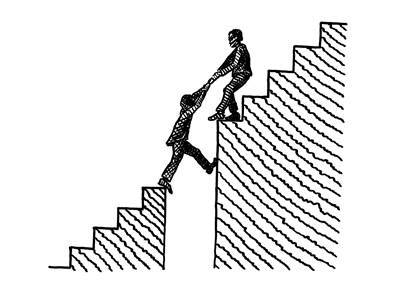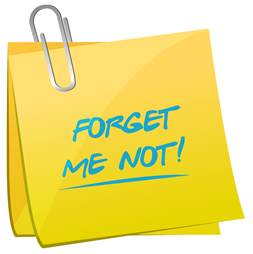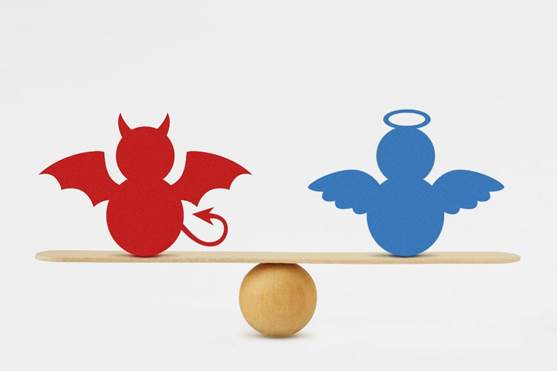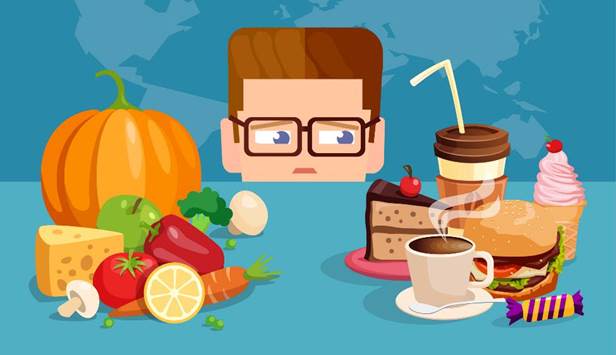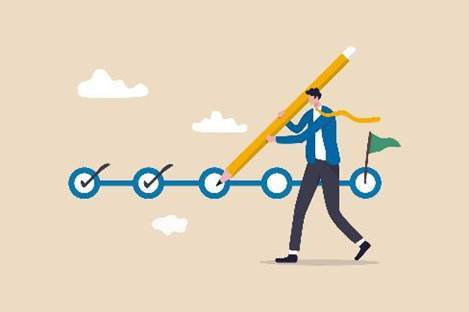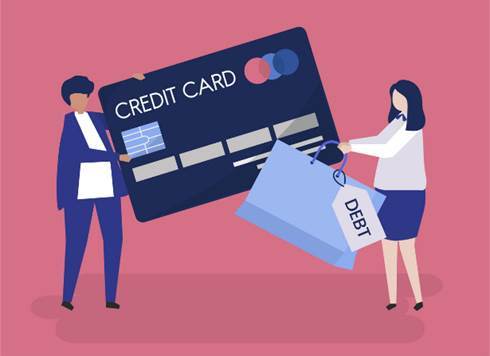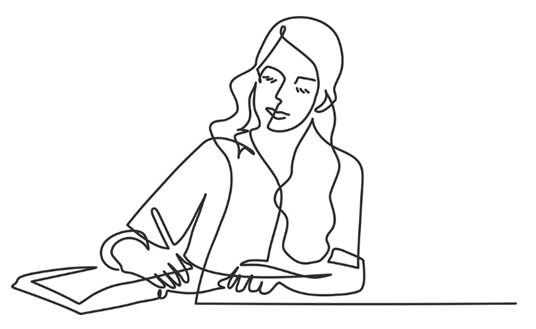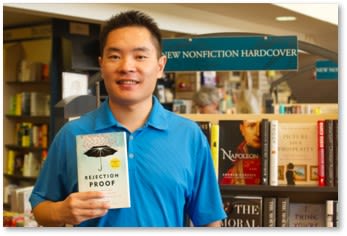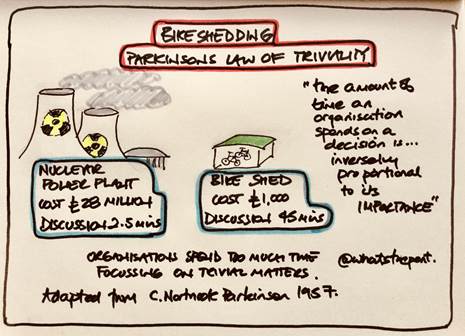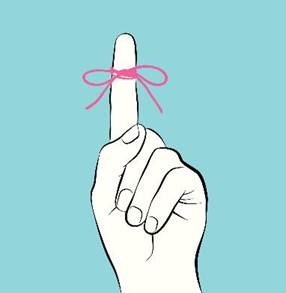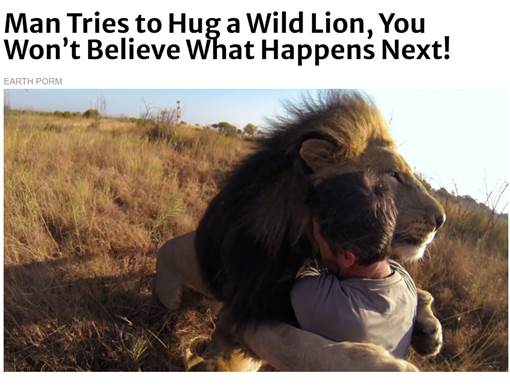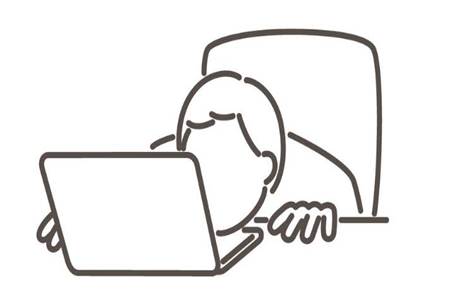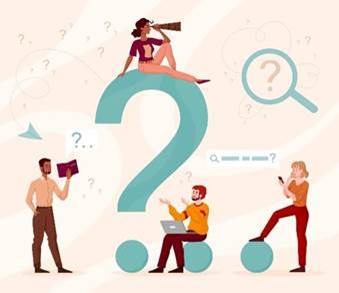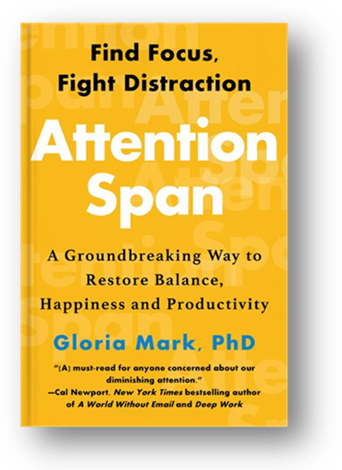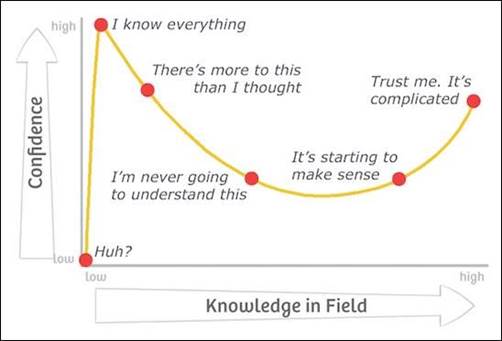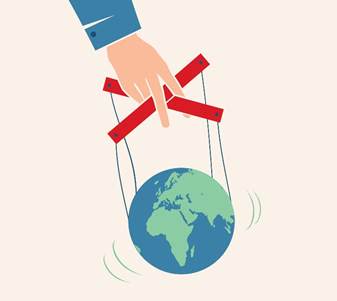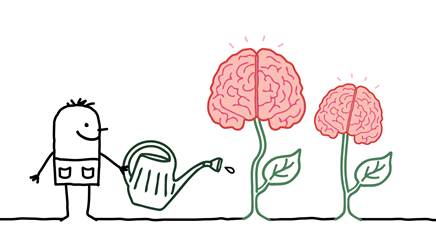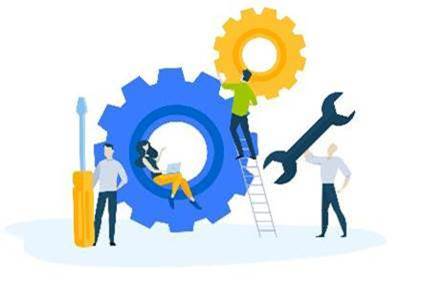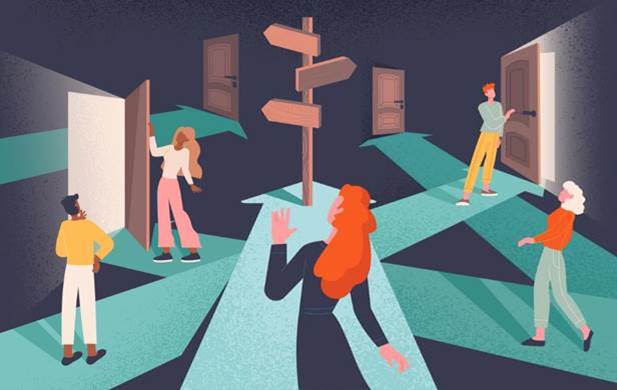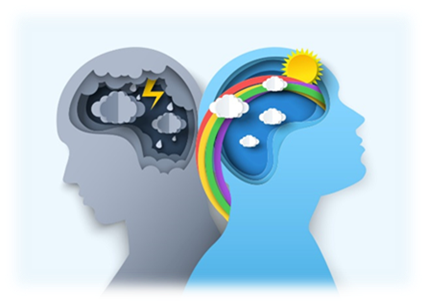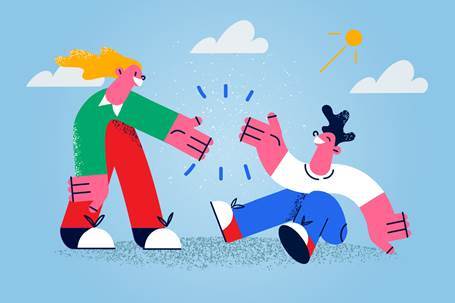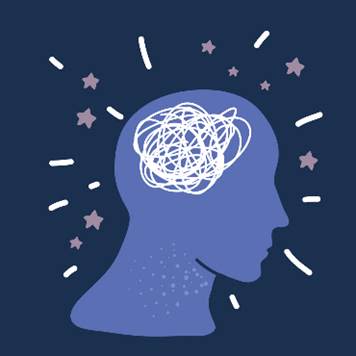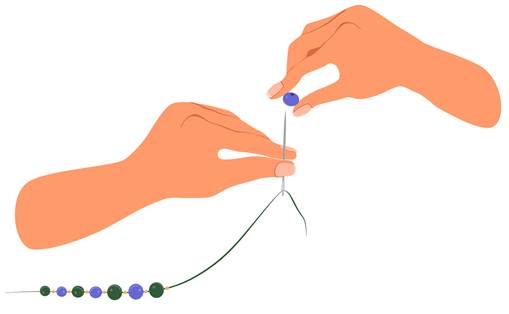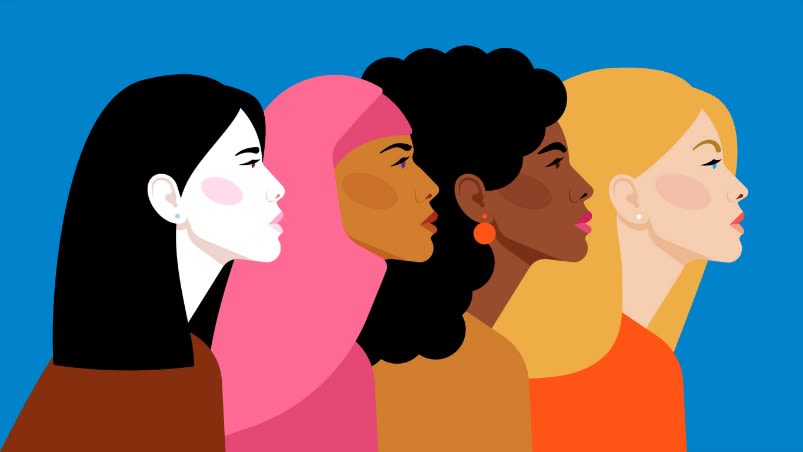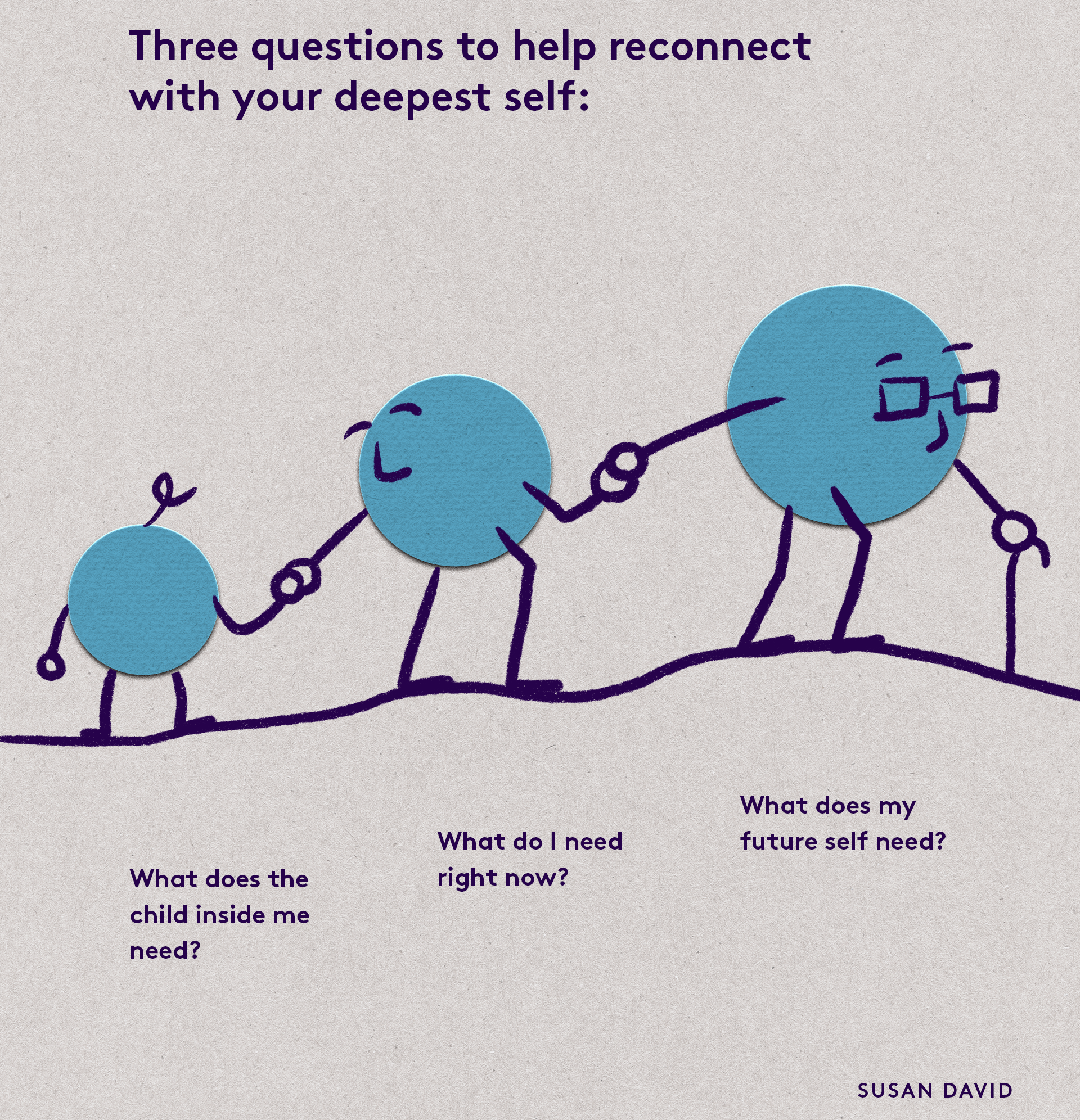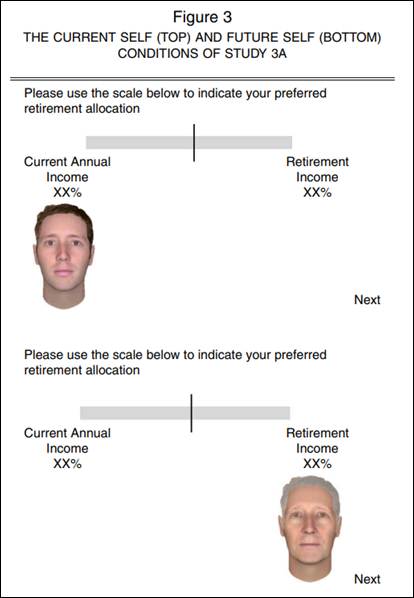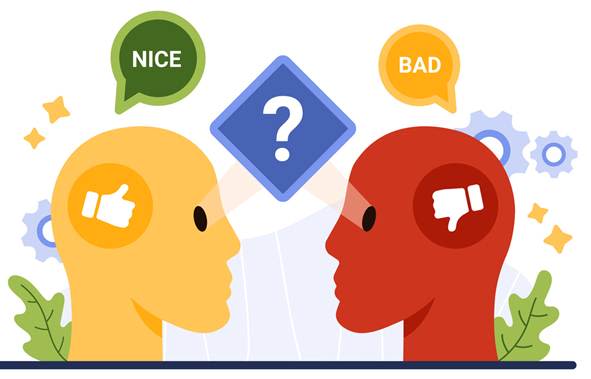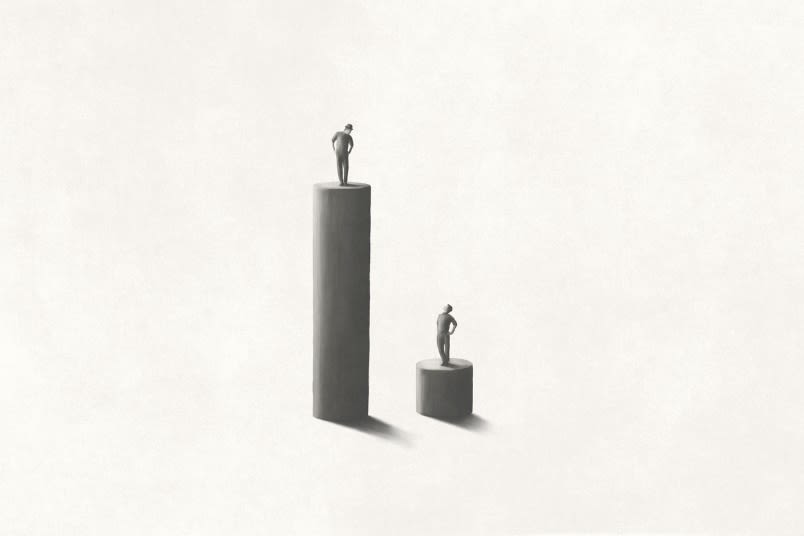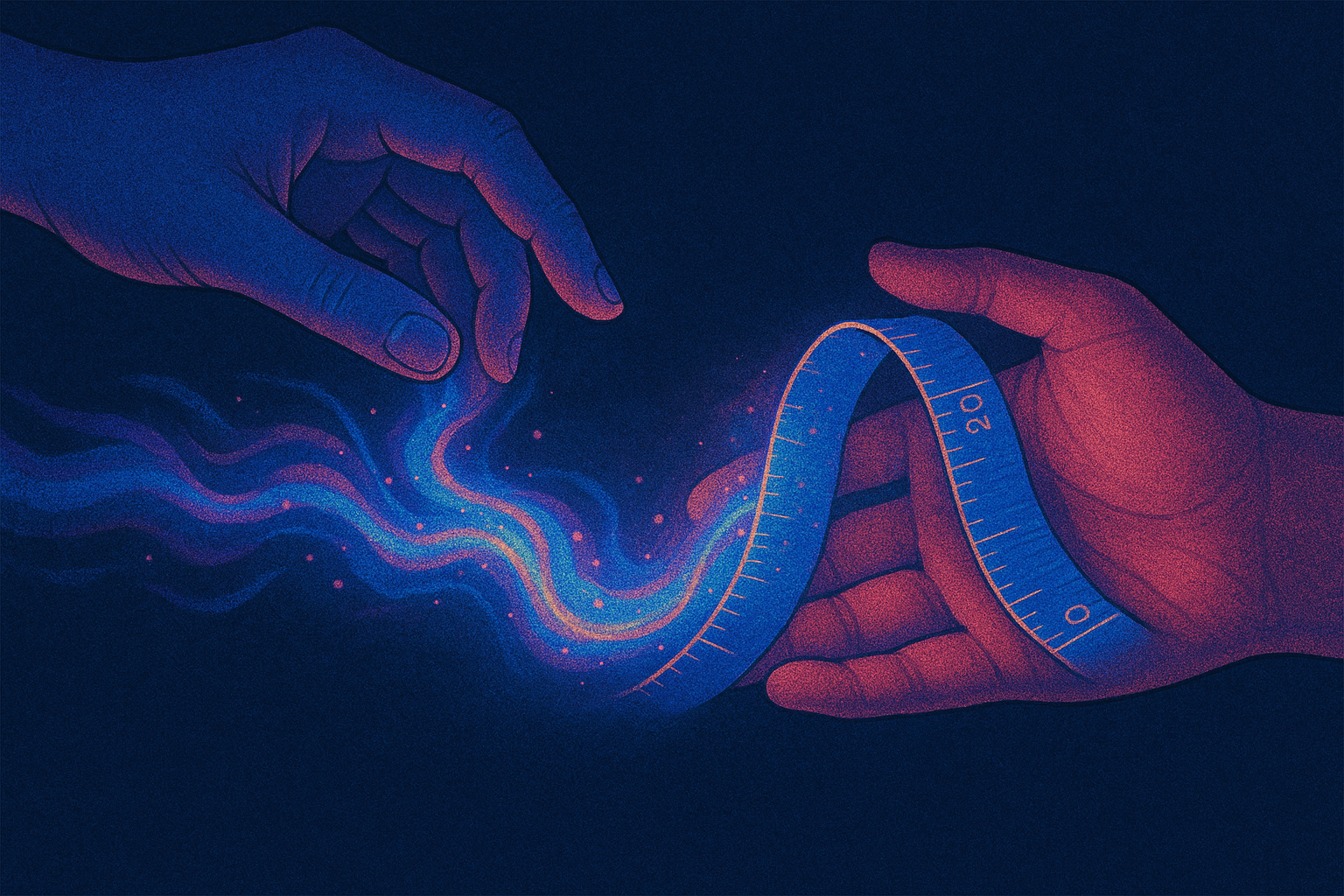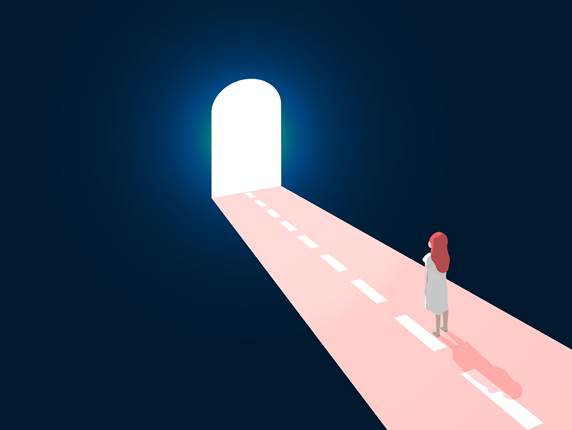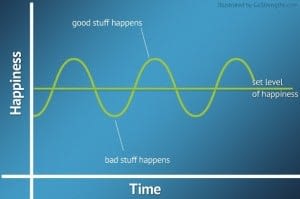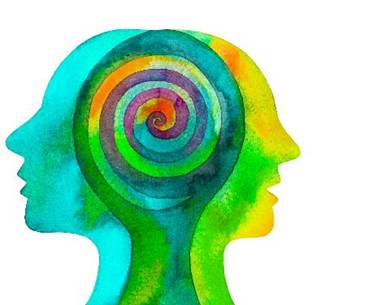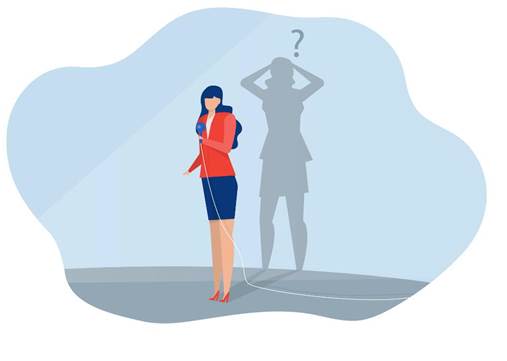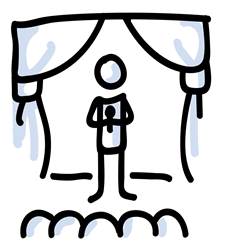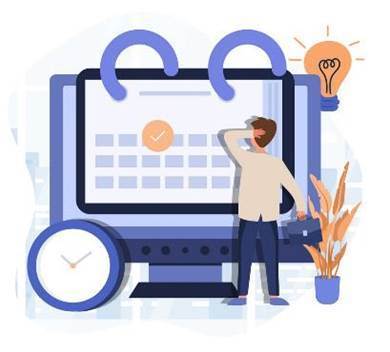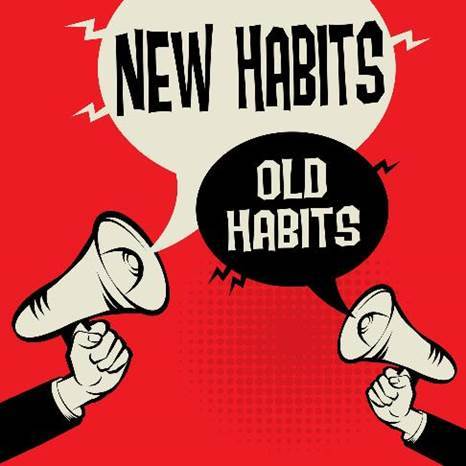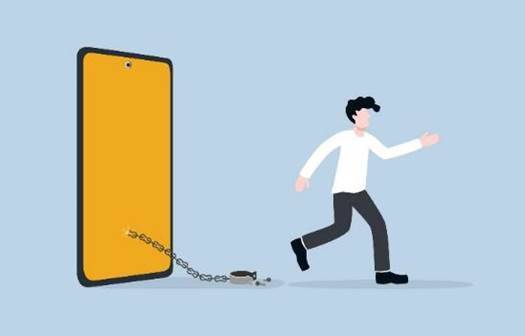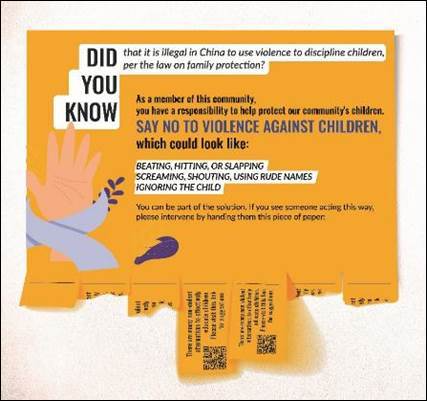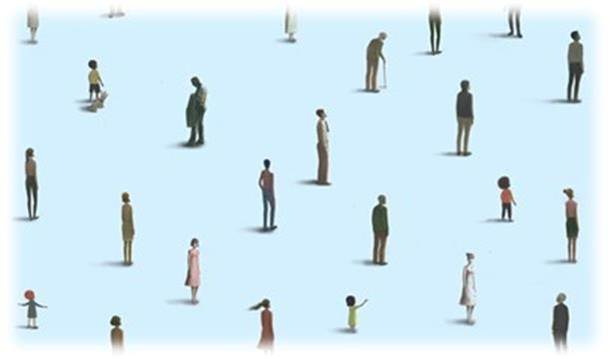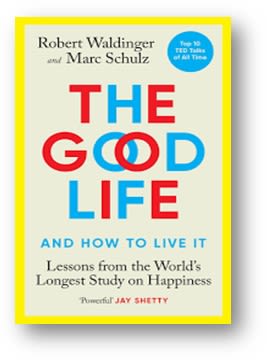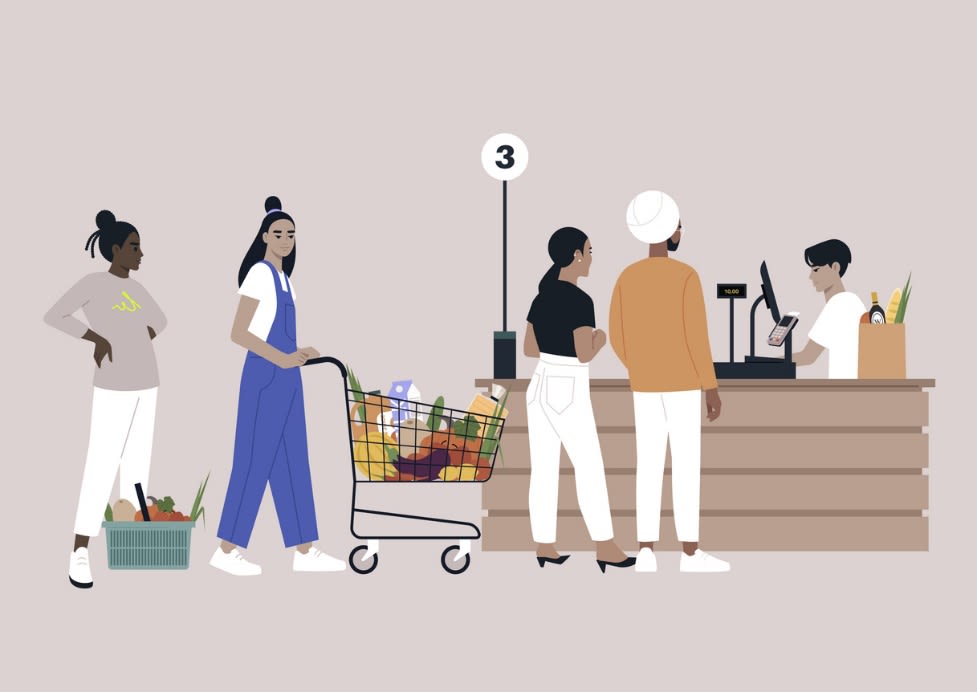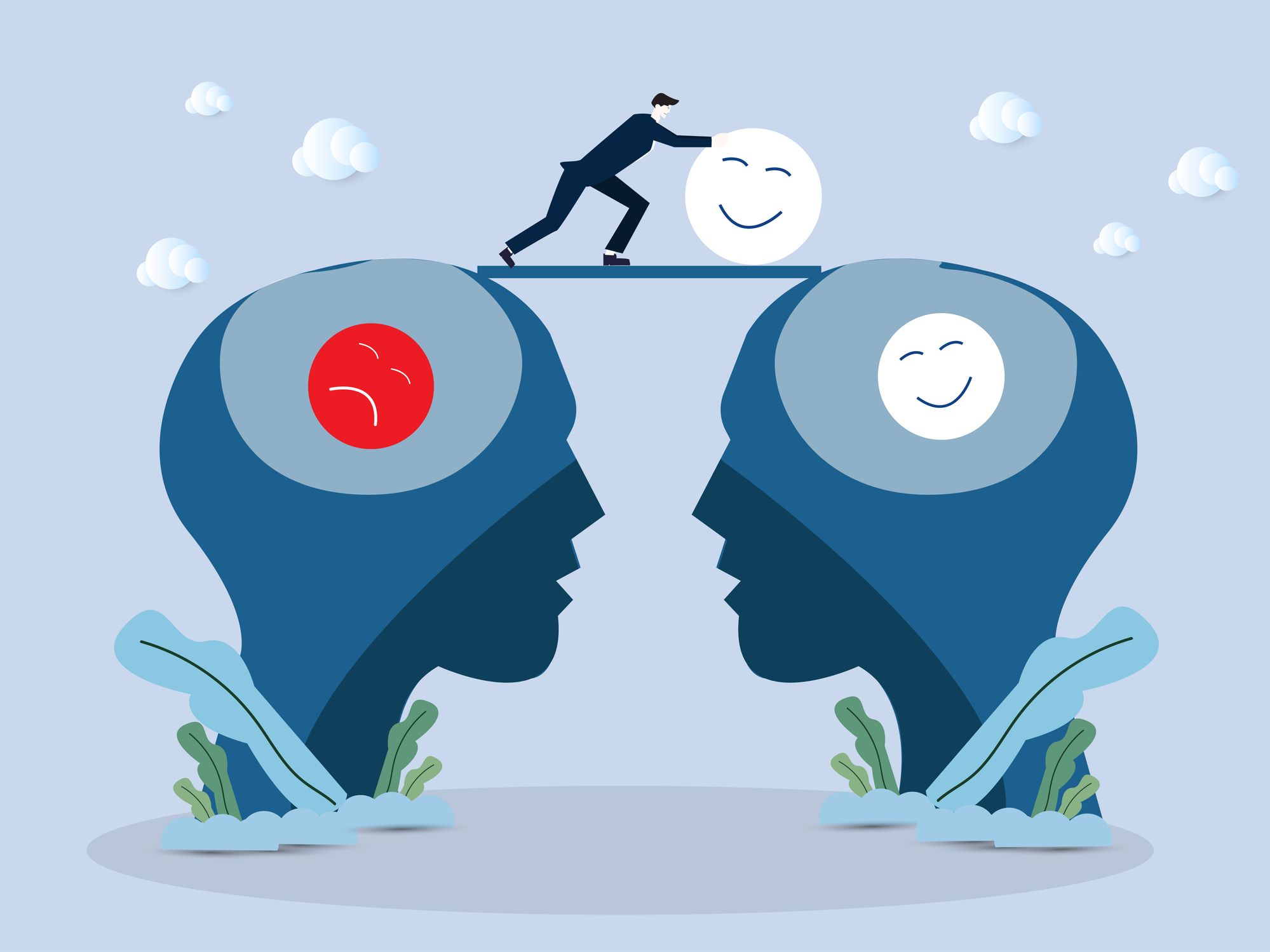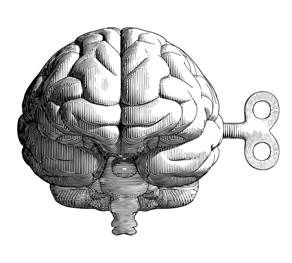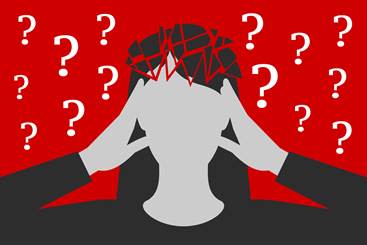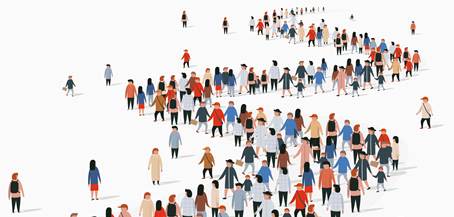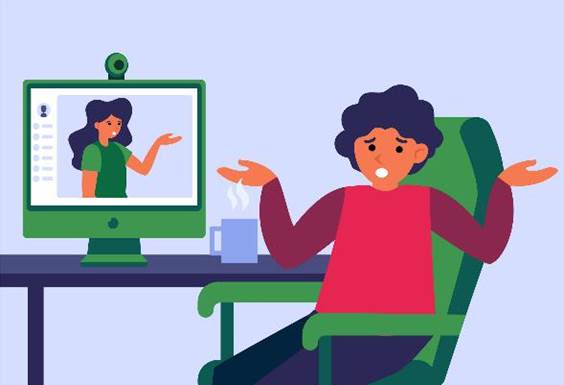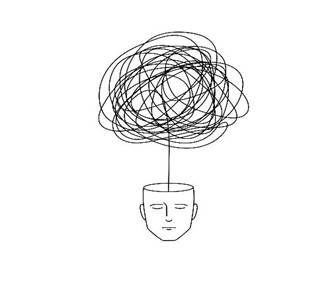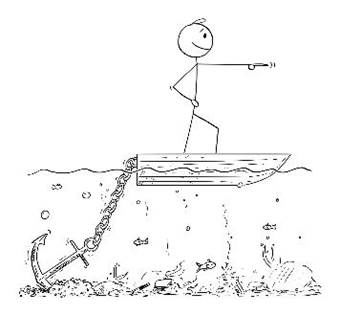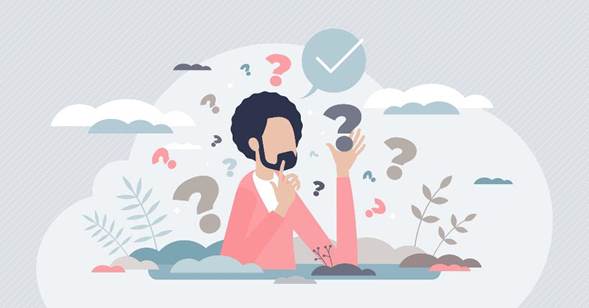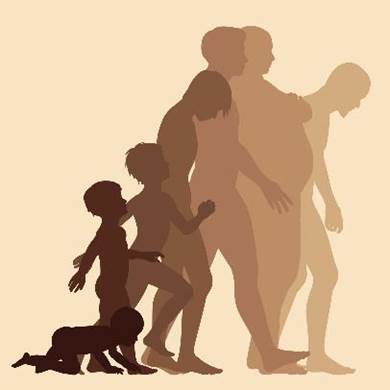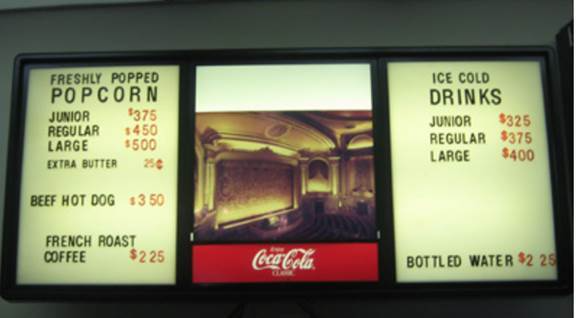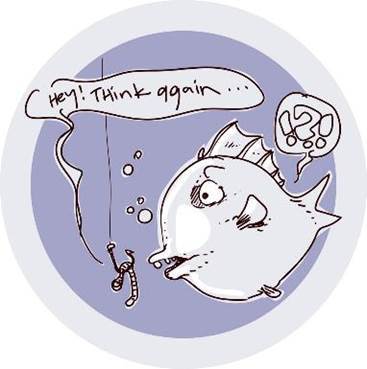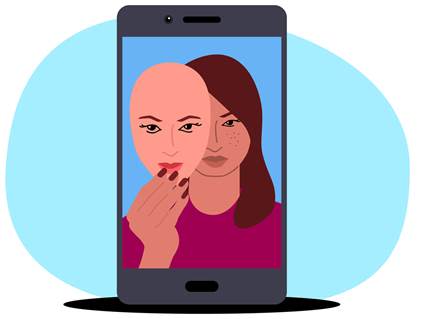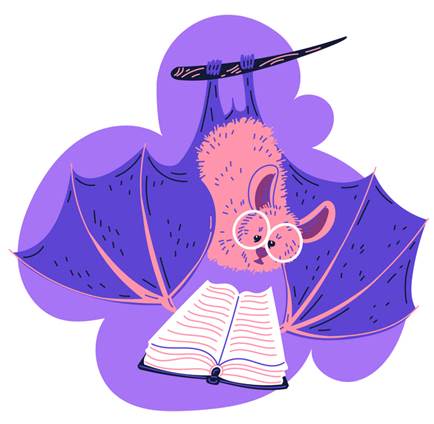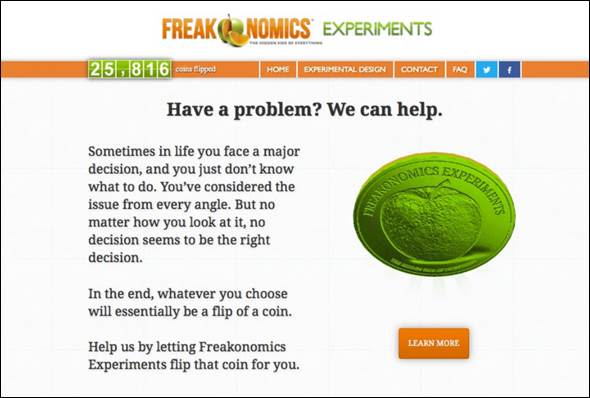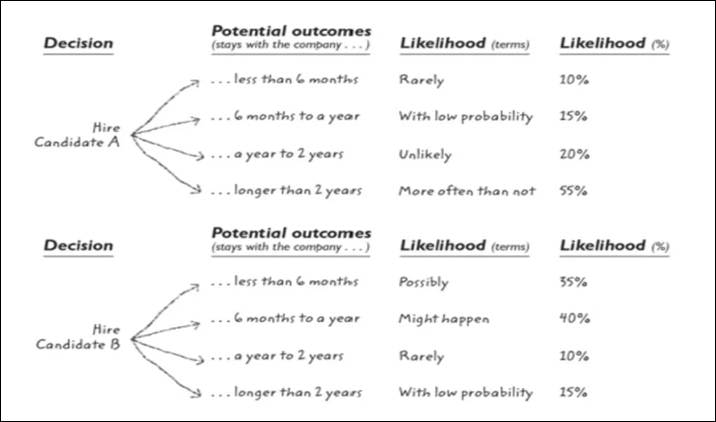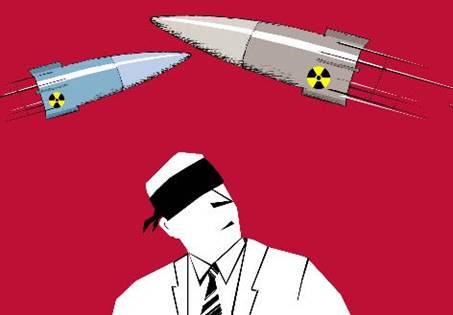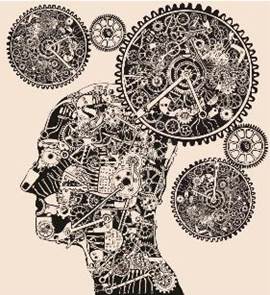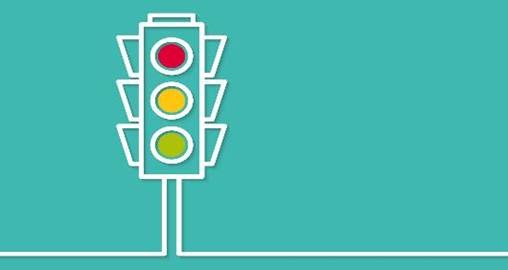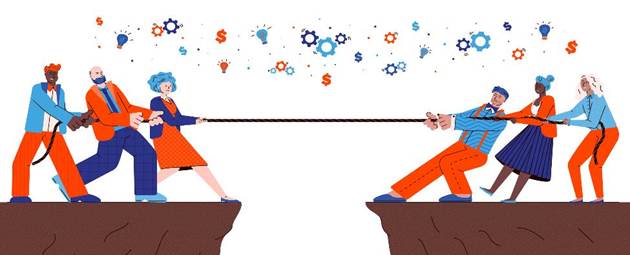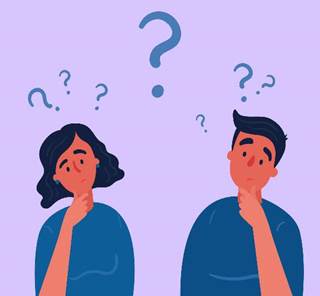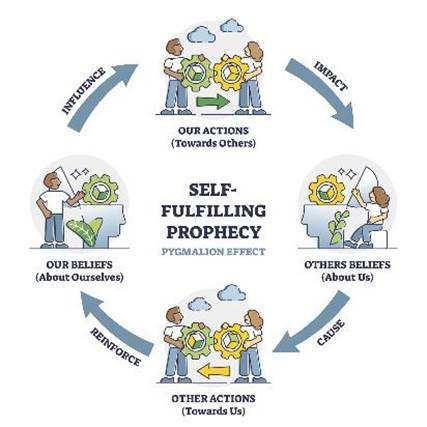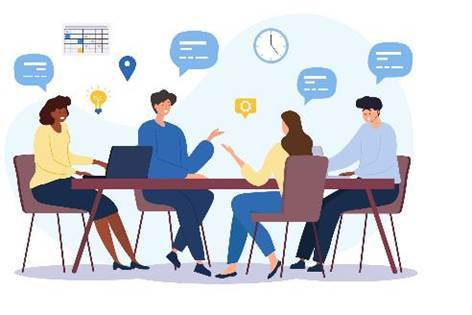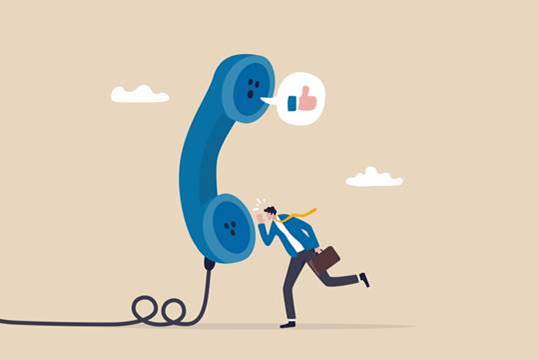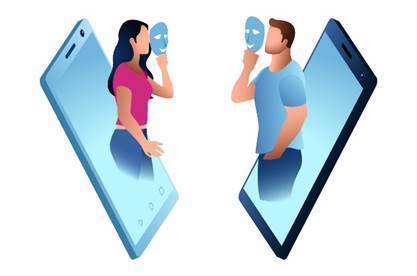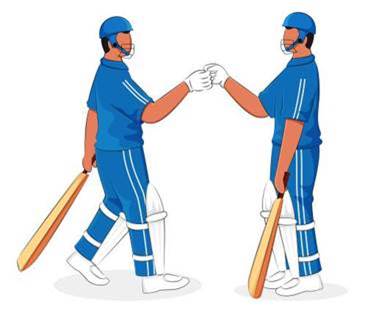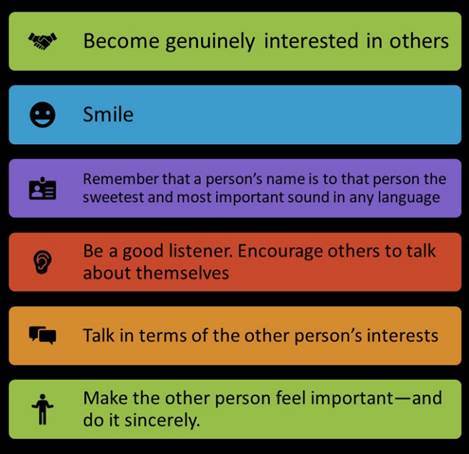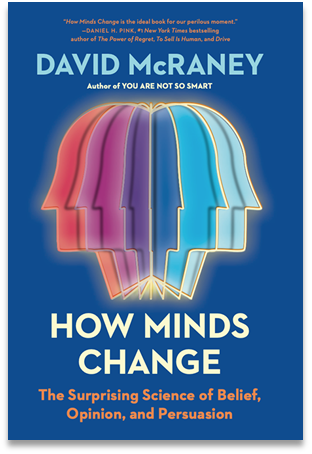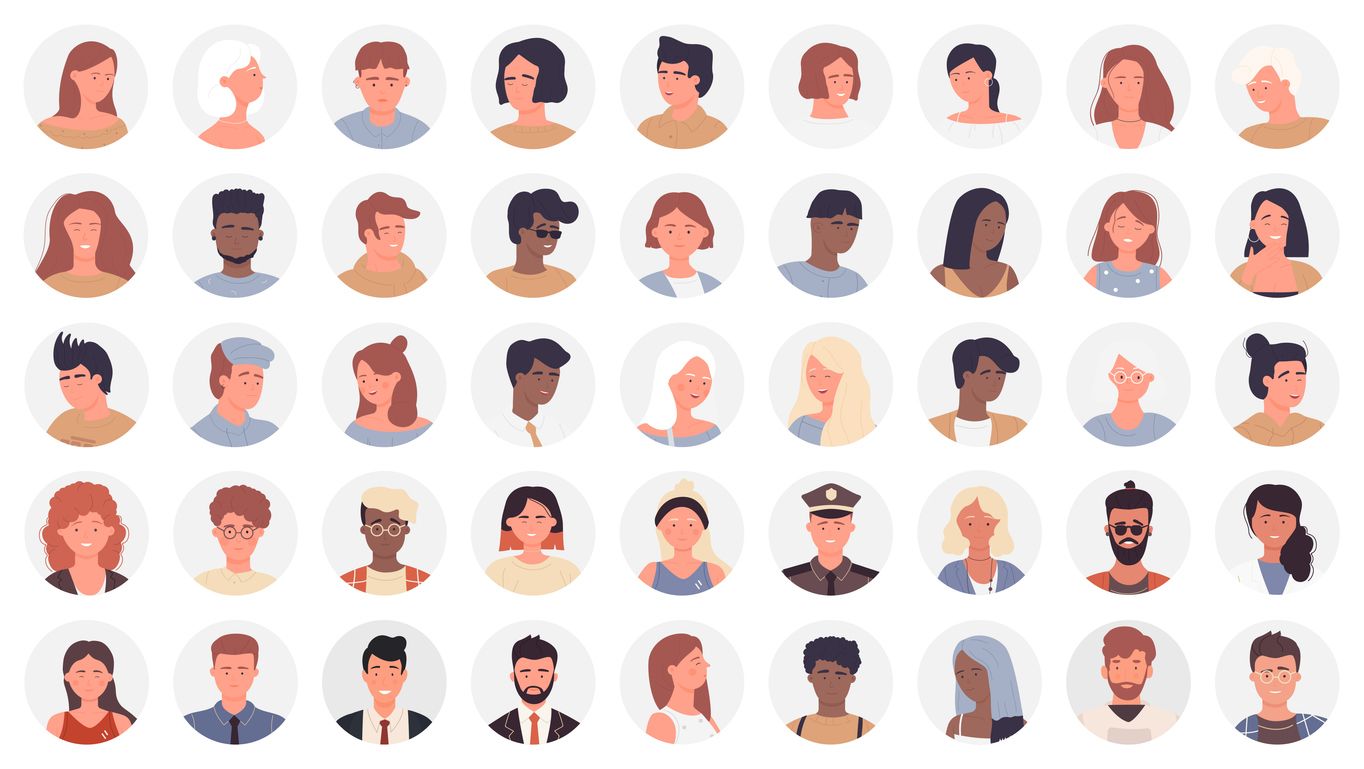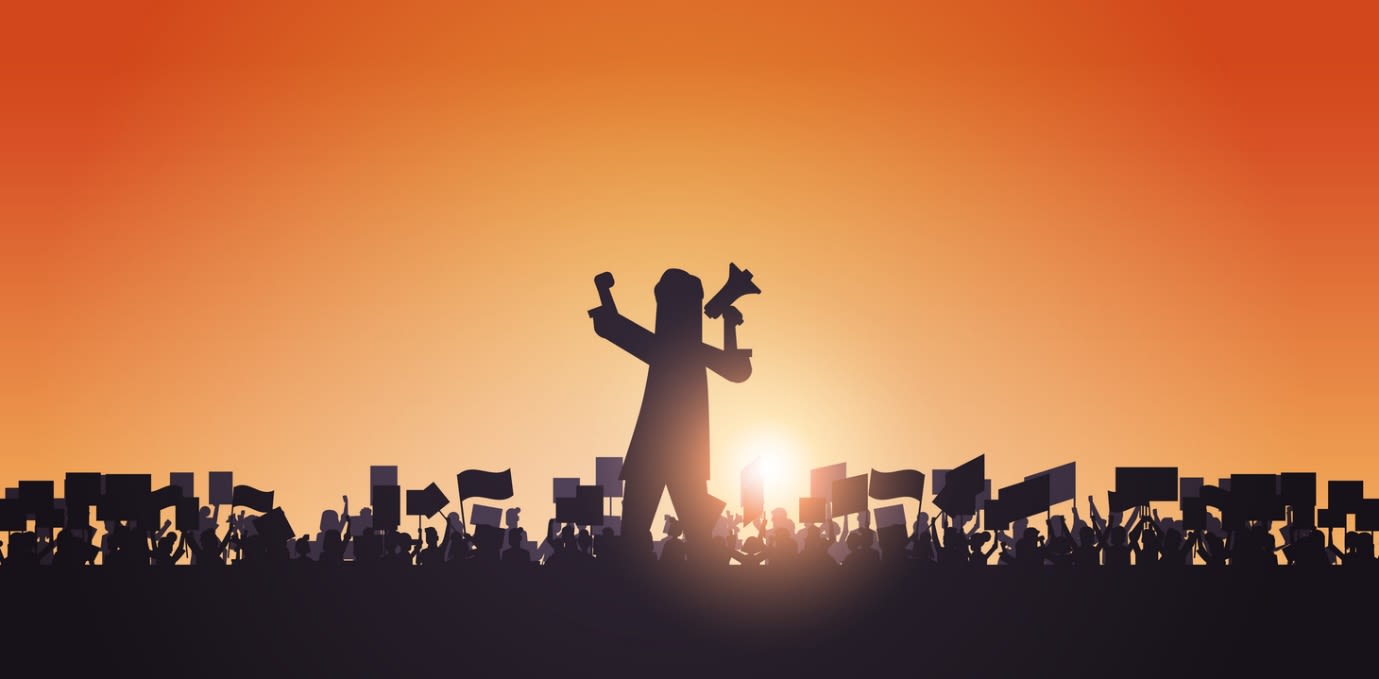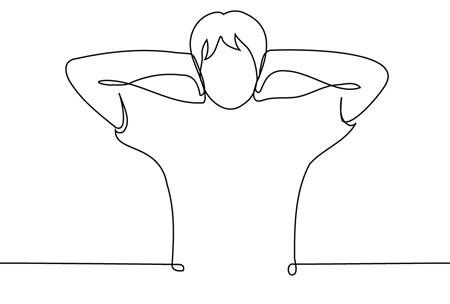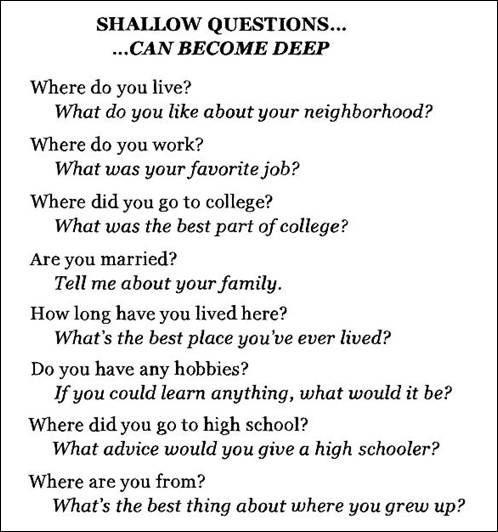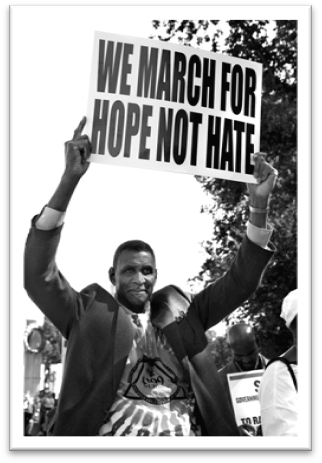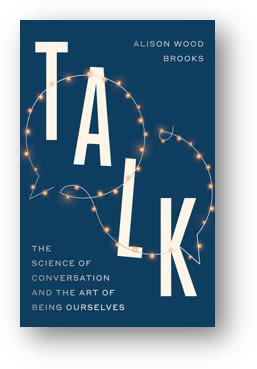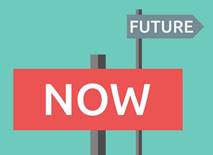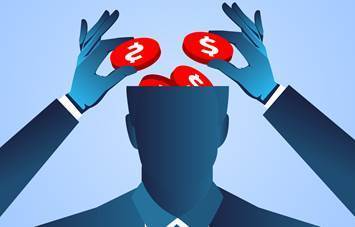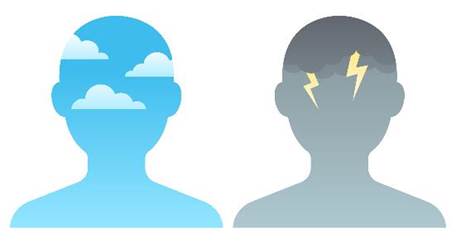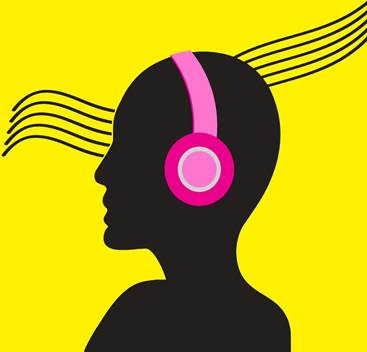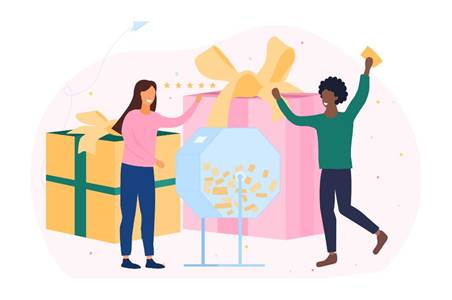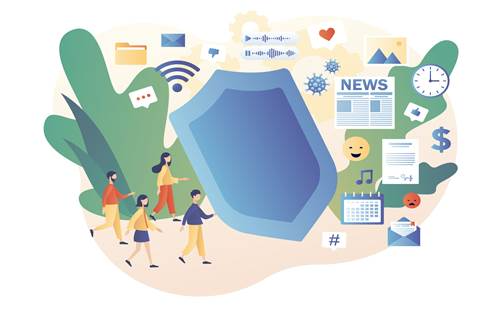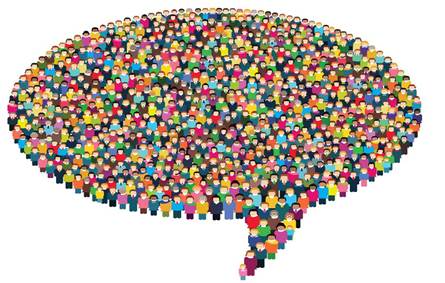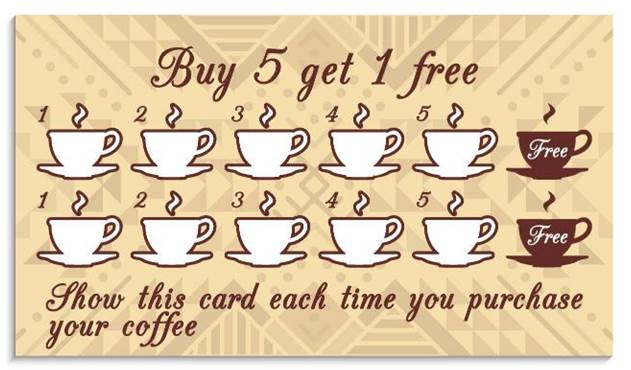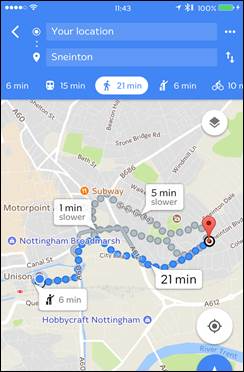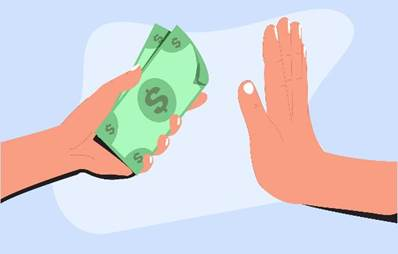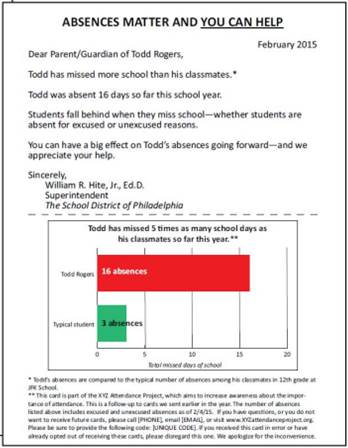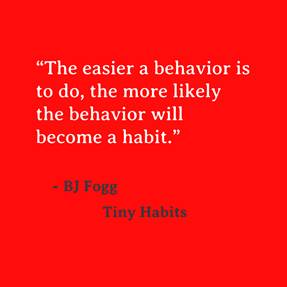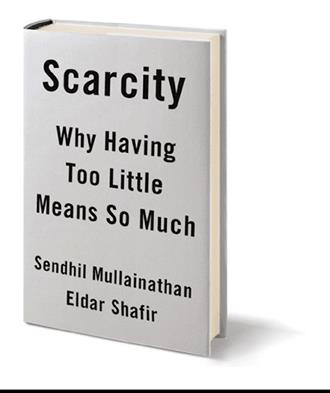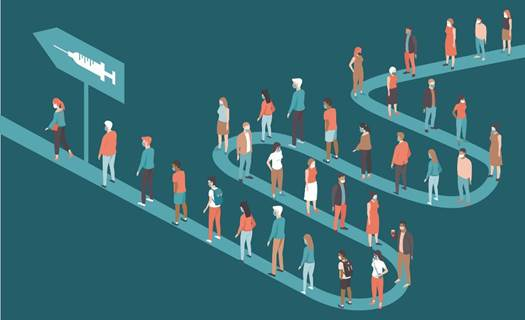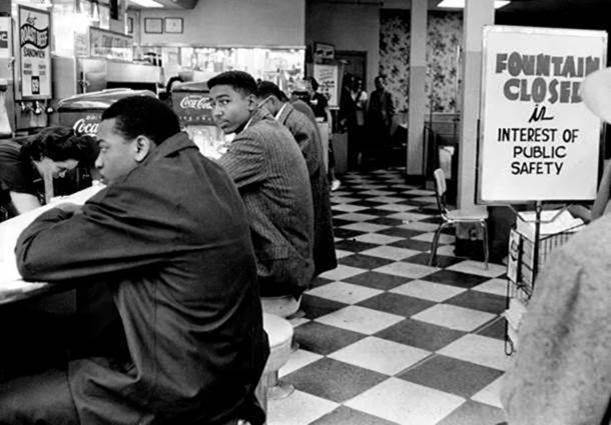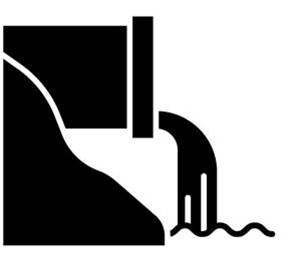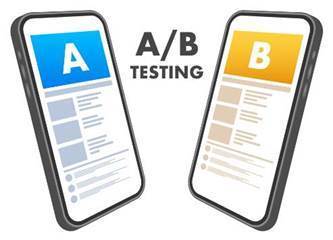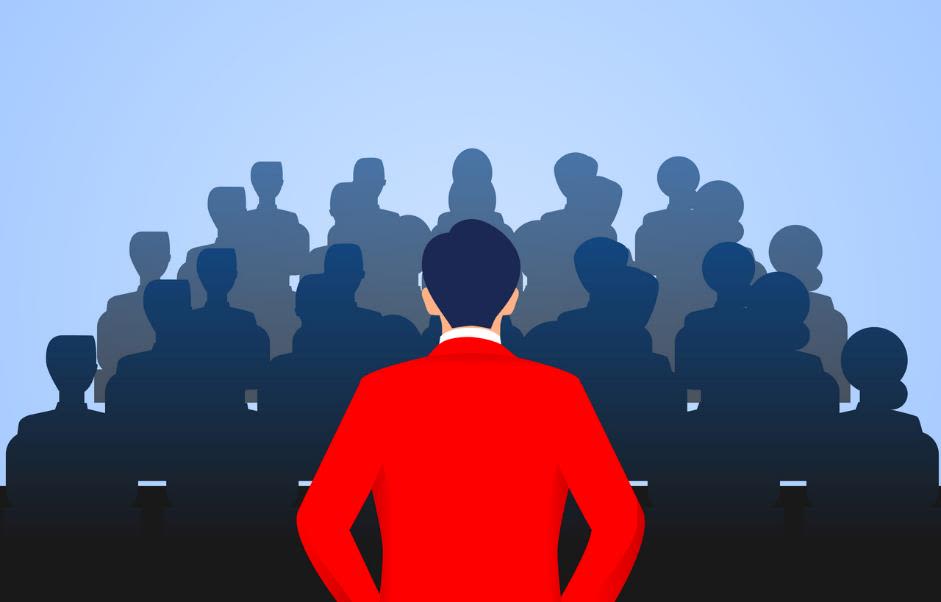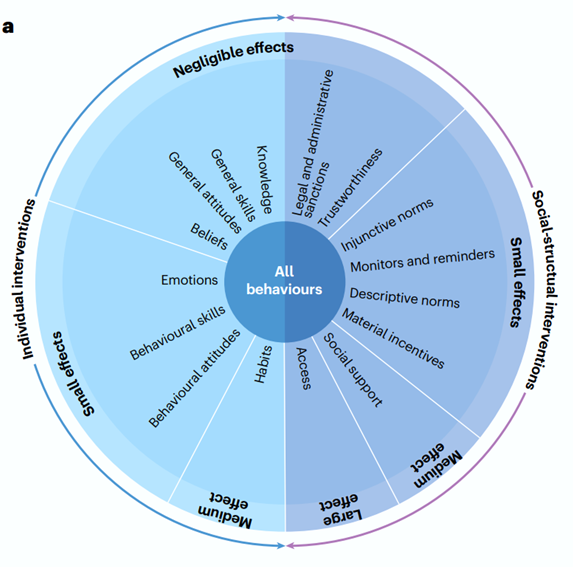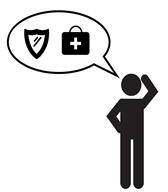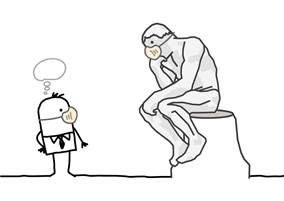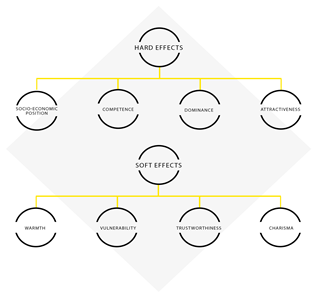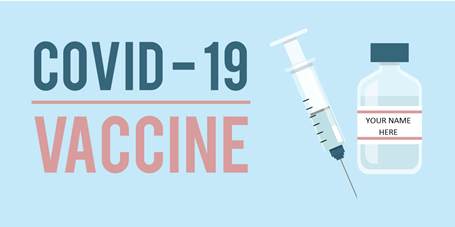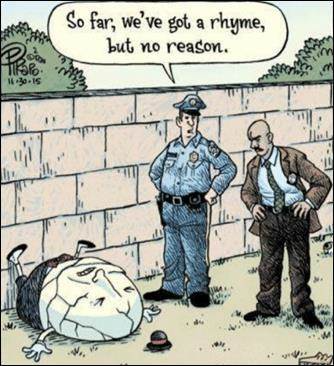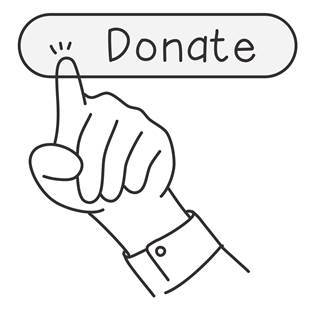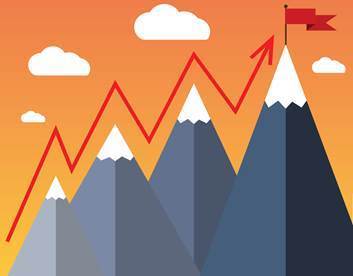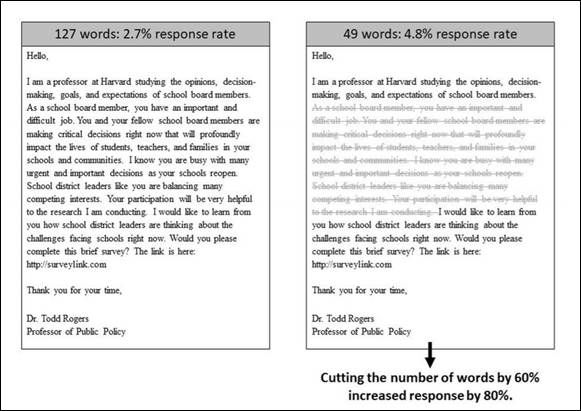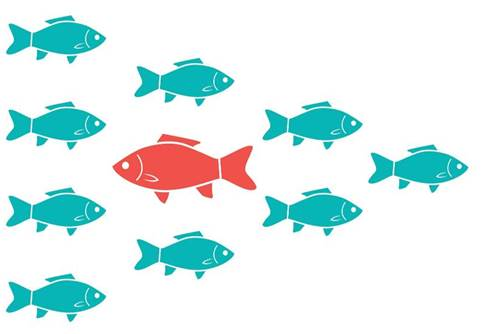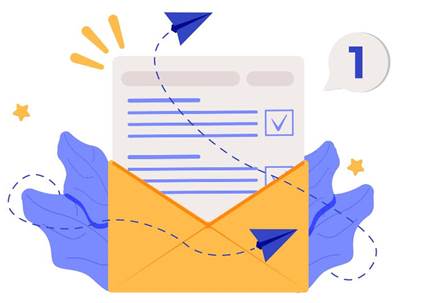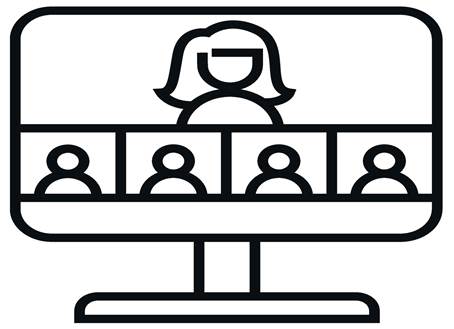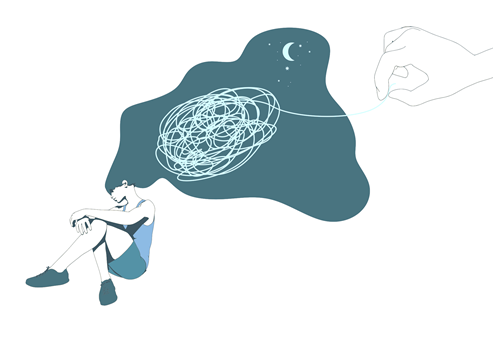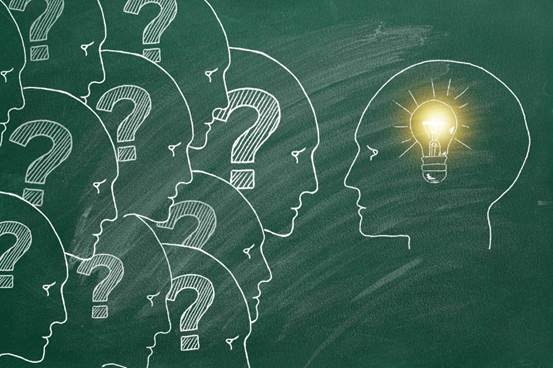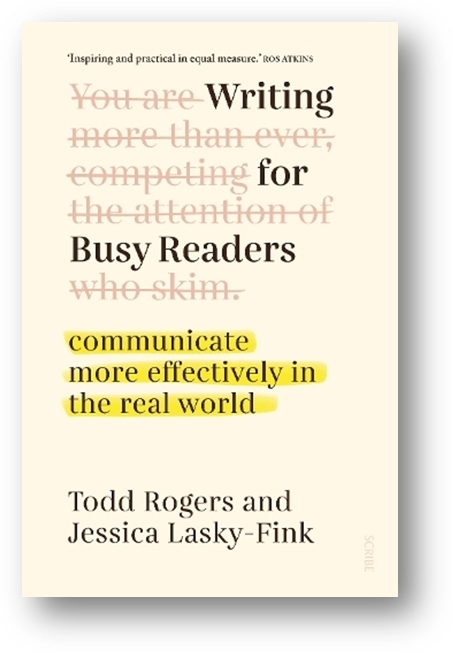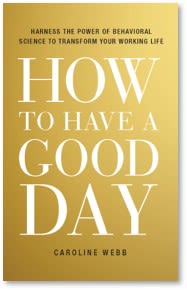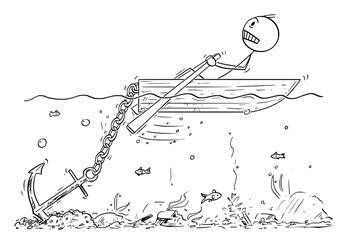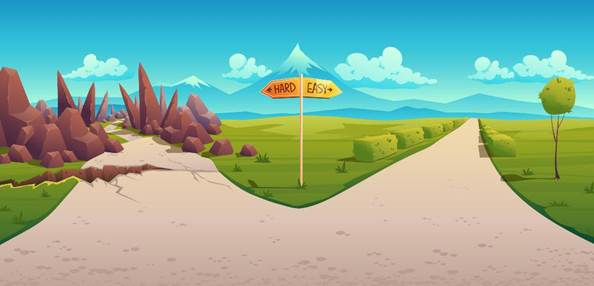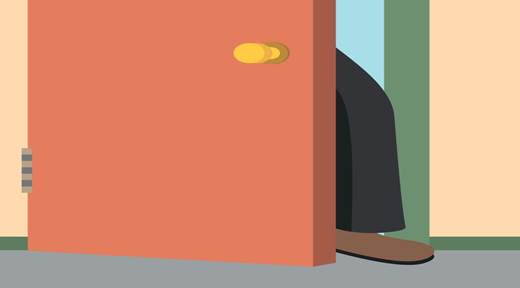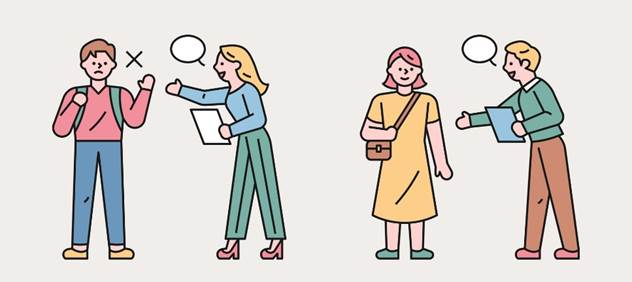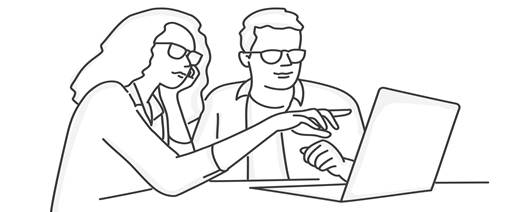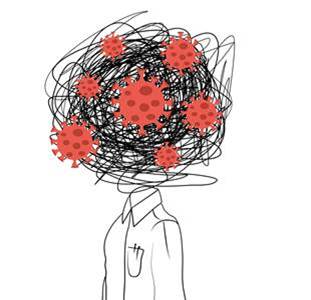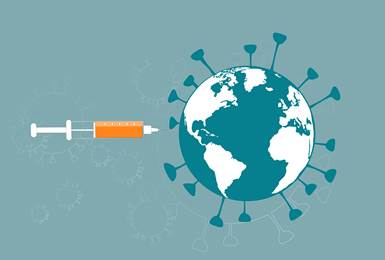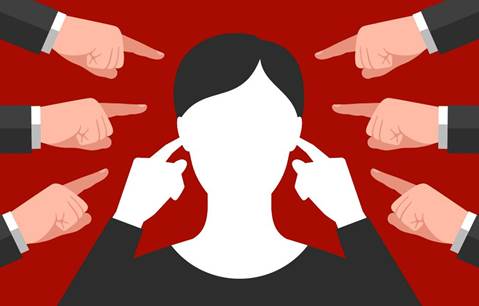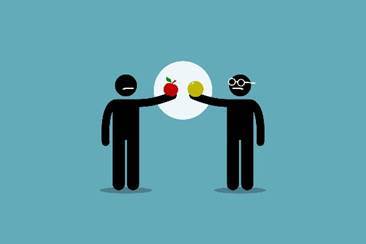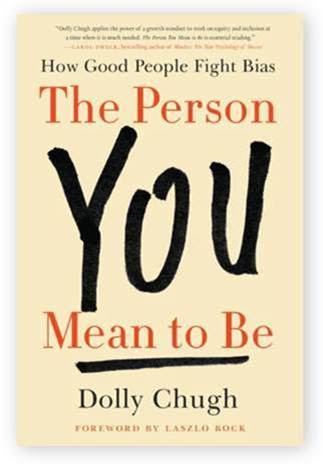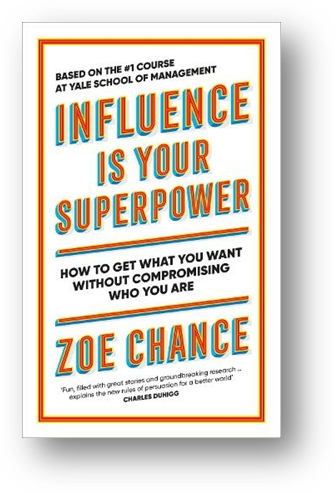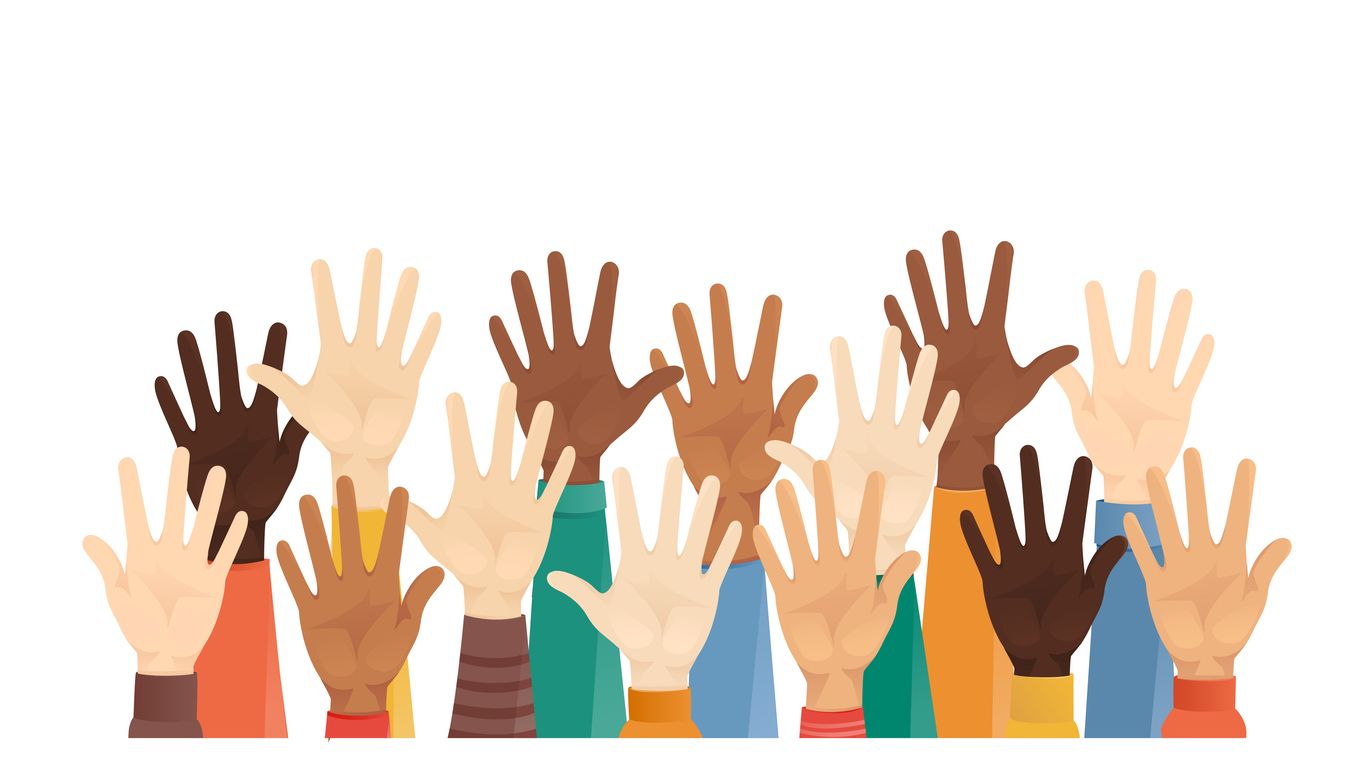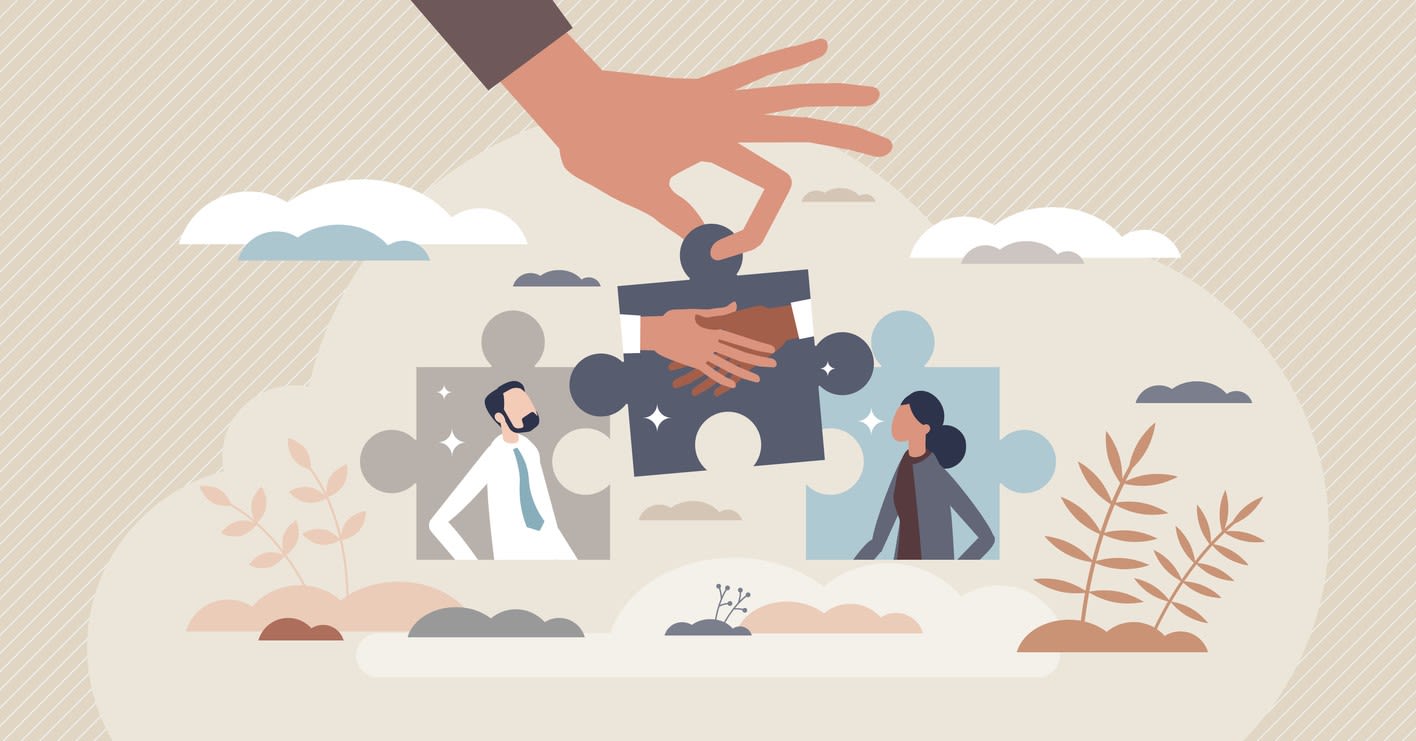In a Nutshell
–
By The Center for Utilizing Behavioral Insights for Children (CUBIC)

WHAT IS "IN A NUTSHELL"?
“In a Nutshell” is a collection of behavioral science principles, explained in 150 words or less, written by CUBIC for Save the Children staff around the world.
One new “Nutshell” is emailed to staff each week. This webpage was created so staff, partners, and supporters can easily find and learn about these behavioral
science principles.
WHY BEHAVIOURAL SCIENCE?
Human decision-making is complex. We are influenced by a myriad of different factors which means we don’t always act and behave in our best interests, despite good intentions. Simply providing good information isn’t always enough to encourage positive behaviour change.
Sometimes small behavioural changes and interventions can tackle big problems. Behavioural science can provide a cost-effective way to better understand people’s actions and inform more effective programmes, delivering better results for children.
". . . the key ‘insight’ of Behavioral Insights is that much of our behavior is nonconscious, habitual, and driven by cues in our environment or the way in which choices are presented. We are capable of making decisions in a considered, deliberate way, but this happens less often than we assume."


Reaching Our Goals

The Power of a Fresh Start
In a Nutshell #17
Human beings apply different rules to money, and place it in different mental accounts.
We also place time in mental accounts, such as by designating specific hours for work, family, or relaxation. More broadly, when we consider our lives, we pay attention to temporal landmarks, significant periods like birthdays, holidays, job changes, or major world events.
As described in the Fresh Start Effect, such landmarks disrupt our focus on day-to-day minutiae and help us step back and consider our goals. We can therefore use these landmarks as turning points, disconnecting from “our old selves” and starting new, positive behaviors.
In our work, we can utilize the Fresh Start Effect by launching programs on days that are meaningful for the communities we serve. We can also begin thinking about “fresh start opportunities” that arise from this pandemic, perhaps the greatest temporal landmark of our generation.
When Ignorance isn’t Blis
In a Nutshell #22
Have you ever postponed stepping on a scale, getting your cholesterol tested, or checking your bank balance?
If so, then you likely fell prey to the “ostrich effect,” the human tendency to avoid negative information that could help one take corrective action. We do this because we fear how the information will make us feel, or we worry about how it might impact our lives, or require us to change our behavior (or our self-image). In our work, the ostrich effect often comes into play when people avoid getting tested for a stigmatizing disease.
If you find yourself avoiding useful negative information, try to determine why you’re doing so, and remind yourself of your goals, such as financial security or a rewarding and productive life. Then try to note down all the actions you could take to overcome the problem, and the benefits these would have in the long run.
Bridging the Gap
In a Nutshell #23
Raise your hand if you’ve ever:
- Planned to exercise, but ended up on the couch
- Started a diet, then found yourself eating cake
- Vowed to save money, then splurged on a new purchase
These examples demonstrate a key focus of the behavioral sciences called the intention-action gap: basically, people often know what we should do, and we have good intentions, but we have trouble following through on these intentions. There’s a gap between what we want, and what we do.
There are countless reasons for this, including that people usually care more about the present than the future, we are hugely influenced by our surroundings and other people, and starting (or breaking) habits is difficult.
While there’s no “one-size-fits-all” solution to bridging the intention-action gap, it’s important to recognize it and design interventions to address it, such as by making the desired behavior easier to do – or harder to forget!
Simple Plans, Real Actions
In a Nutshell #24
Last week I wrote about the intention-action gap: how human beings often know what we should do, but we have trouble following through on our good intentions.
One method for addressing this gap is called a planning prompt, a.k.a. implementation intention plan. This is a simple intervention through which people are prompted to decide when, where, and how they will do something. For example, research in the U.S. demonstrated that prompting voters to make a plan that included setting a time, locating their polling place and identifying how they’ll get there, led to more people showing up to vote. Building on this concept, in South Africa, a plan-making tool actually reduced youths’ likelihood of engaging in and falling victim to violent crime.
Planning prompts often work because scheduling tasks helps to overcome procrastination and reduce forgetfulness; to boost their effectiveness, try telling a friend or family member about your plan.
Make it a Habit (Part 1)
In a Nutshell #32
Have you been thinking about making a New Year’s resolution? Perhaps you want to exercise more, lose weight, or learn a new skill?
If so, I’ve got a secret for you – as explained in this podcast, “Conscious willpower is not the driving force behind behavior change.”
According to Dr. Wendy Wood, author of Good Habit, Bad Habits, people who successfully create good habits focus on their immediate environment – they set up their surroundings to help them repeat desired behaviors, while they remove temptations and make “bad behaviors” harder to do.
For example, Dr. Wood actually slept in her running clothes when she endeavored to begin jogging at 6 a.m. everyday. In a similar vein, if you want to lose weight, no longer keeping your favorite treats at home can help you avoid eating them.
Make it a Habit (Part 2)
In a Nutshell #33
Previously, we talked about the importance of adjusting your environment to support good habits.
Another critical step is intentionally creating a cue, such as a post-it note or alarm on your phone, to remind you to practice that habit until it has become automatic. Moreover, you can “piggyback” your new habit onto an existing routine (this is called habit stacking.) Finally, think small and get specific to start a new habit.
For example, if you want to learn French, you could make this plan: “After I make my morning cup of coffee, I will study one 5-minute Duolingo lesson.” Then you stick a post-it note reminder to your coffee maker, so you’ll be unlikely to forget. Voilà.
If you’d like to create a new habit in 2021, try taking ten minutes to use this tool that applies 11 behavioral science principles to help you develop a personalized “Habit Canvas.”
StickK to Your Goal
In a Nutshell #35
Are you struggling with your New Year’s resolution? Or have you been pondering some form of self-improvement, but haven’t begun yet?
If so, I have a simple, behavioral science-backed idea for you: the commitment contract.
This one seems obvious – when we actively commit to achieving a goal, we are more likely to achieve it. Written commitments that are made publically, and include a penalty for failure, are particularly effective.
Fortunately, there’s a free, easy tool for this: the StickK app. StickK helps you create a goal and interim targets, and encourages you to make your commitment public by enlisting supporters and adding a “referee” to monitor your progress. StickK also allows you to add financial stakes by setting up automatic donations to a charity or anti-charity (organization you oppose) if you don’t meet your targets. (I personally found this anti-charity feature VERY motivating!)
License to Err
In a Nutshell #59
Have you ever finished some intense exercise, and then later rewarded yourself with an indulgent dinner or dessert?
Moral licensing is a phenomenon via which human beings give ourselves permission to do something “bad,” because we’ve already done something “good.” We conduct psychological bargaining, and let ourselves off the hook because “we’ve earned it.”
For example, some people who recycle regularly may feel more justified in driving gas-guzzling cars. Similarly, as described by Malcolm Gladwell, people may make racist remarks – but feel they’re not prejudiced – “because they have a black friend.”
So what can we do? As explained in this well-researched Ted Talk by a Shanghai teenager, we can stop labeling our actions as “good” or “bad” and evaluate each decision without considering our past actions. In addition, we can make our goals part of our identity, and think “Is this what a healthy, green, or racially-conscious person would do?”
Oh What the Hell!
In a Nutshell #61
Imagine this: You’re on a 1500 calorie/day diet when your spouse brings home freshly-baked cookies. You decide to have just one, then realize you’ve exceeded your daily calorie limit. Oh, what-the-hell, you think, and eat four more – you’ll restart your diet tomorrow.
The “What-the-Hell” Effect is the actual term for this psychological phenomenon. As described in The Willpower Instinct, “Giving in makes you feel bad about yourself, which motivates you to do something to feel better. And what’s the cheapest, fastest strategy for feeling better? Often the very thing you feel bad about.”
The “What-the-Hell” Effect can also undermine goals such as stopping smoking, reducing drinking, or limiting Netflix binge-watching. To combat it, make plans to address slip-ups (e.g. If I find myself smoking one cigarette, I’ll flush the pack.) In addition, avoid the “shame-splurge cycle” by forgiving yourself after a transgression, and congratulating yourself for keeping that setback small.
Lead Us Not Into Temptation
In a Nutshell #75
How many of these experiences have you had?
- You started a diet, then went to a dinner party and overindulged
- You planned to exercise after work, then watched Netflix instead
- You quit smoking, then had a drink and decided “just one won’t hurt”
The restraint bias refers to the human tendency to overestimate our ability to control our impulses in the face of temptation. This occurs in part due to the Hot-Cold Empathy gap (Nutshell #28, attached) – people are terrible at predicting how we will actually make decisions when we’re hungry, tired, stressed, excited, or feeling any strong emotion.
To address this bias, start by reflecting on your past and taking note of which situations – and in which emotional states – you’ve slipped up before. Next, instead of relying on future (fickle) willpower, focus on removing or avoiding temptations in your environment, until your goal behavior really has become a habit.
Break it down!
In a Nutshell #111
Did you make any New Year’s resolutions?
If so, remember to break down your resolution into smaller, manageable goals.
One of the first studies on “sub-goals” was in 1981, when psychologist Al Bandura worked with students with poor math performance through sessions focused on subtraction problems. In the treatment condition, the instructor suggested children complete six pages per session. The research revealed “Children who set themselves attainable sub-goals progressed rapidly in self-directed learning, achieved substantial mastery of mathematical operations, and heightened their perceived self-efficacy and interest in activities that initially held little attraction for them.”
Today, the psychology-based weight loss app Noom asks users to determine how many kilos they want to lose, by when, and then encourages three daily sub-goals:
1. Logging all meals
2. Regular weigh-ins
3. Reading short lessons
These small actions give users a sense of progress and success, and help many achieve their overall aspiration.
A High Price to Pay
In a Nutshell #137
Are you trying to save money for the holidays, a new vehicle, or school expenses?
Do you ever find yourself spending money impulsively on a new gadget, clothes, or an expensive dinner, despite your savings goals?
If so, one of the culprits may be “The Cashless Effect,” which explains that people are usually more willing to pay when they use a credit card or shop online, compared to when they use cash.
When we part with physical money, we really feel the loss – this is called “the pain of paying.” Handing over a plastic card doesn’t feel as bad. Additionally, our credit cards let us make spontaneous purchases, since we don’t have to collect the cash first.
To counter this effect, we can:
1. Take a few days to consider large purchases
2. Lower our credit card limits
3. Leave credit cards at home unless we plan to use them
Approach that goal!
In a Nutshell #140
Did you set any New Year’s resolutions?
In the US, the 2nd Friday in January is known as “Quitters Day” because many people have already abandoned their resolutions by then.
If this sounds familiar, don’t give up!
Research has shown that how you frame your goal matters:
- Avoidant goals: what you DON’T want to do, e.g. “eat less junk food” or “stop scrolling on my phone at bedtime.”
- Approach goals: what you DO want to do, e.g. “eat fruit when I crave a snack” or “read a book at bedtime.”
As Cognitive Scientist Dr. Maya Shankar explains in this podcast, avoidant goals can give us a sense of relief (“I didn’t screw up today”) but they are negative and less motivating. They also bring to mind what we DON’T want to do, and can trigger that exact behavior. Conversely, approach goals are positive, help us feel proud, and promote endurance.
A Little Change of Scene
In a Nutshell #149
Are you a parent worried about your teenager’s ability to study and stay on task?
Or perhaps you yourself find it difficult to concentrate on “deep work”?
Research with high school and university students, led by Dr. Angela Duckworth, determined that – while we often promote greater willpower to resist distractions – this was not the most helpful technique.
Instead, situation modification strategies, in which students intentionally changed their physical circumstances, were more effective. During this research, students watched an animated video and an expert interview that recommended they remove temptations from sight, and choose their own ways to adjust their environment, such as by putting their phone in a drawer or face down.
The results were conclusive: students who were introduced to situation modification achieved their study goals more often than those encouraged to exert more willpower.
Considering this, what might YOU change in your work setting, to make focusing easier?
Sorry, no.
In a Nutshell #157
When was the last time you were rejected? Was it painful? Did you dwell on it?
Fear of rejection is very common. Unfortunately, it can prevent us from achieving our goals because we don’t ask for what we want.
When Jia Jiang moved from China to the US, he dreamed of becoming an entrepreneur. However, he knew his fear of rejection was holding him back. Jiang therefore embarked on 100 Days of Rejection, during which he made ridiculous requests to strangers, such as borrowing $100 or asking for Olympic-style doughnuts. Jiang overcame his fear, his videos went viral, and he became CEO of Rejection Therapy.
Rejection therapy is a form of stress inoculation training that increases our confidence through exposure to mild stress. Additionally, by seeking out rejection, we begin associating rejection with success rather than failure.
Want to assess your rejection resilience? Take this quiz, then go get rejected!
Elastic Habits
In a Nutshell #162
Have you ever tried to establish a daily habit, like morning exercise or taking an online course, only to start strong but eventually stop completely?
One reason this happens is that human motivation is fickle, it fluctuates throughout the day and week – doing yoga before dawn might sound great on Monday, but by Friday, it seems unbearable.
In addition, while practicing the same behavior at the same time and place each day does help foster a routine, it can also backfire. Research by world-renowned behavioral scientist, Dr. Katy Milkman, highlights the importance of flexibility in habit-building. As she summarizes, habits should be elastic, meaning if you can’t manage yoga at 6 am today, you have a backup plan of doing it at 6 pm instead. So, when you’re trying to build a new habit, jot down a Plan A, B, and C, and you’ll be more likely to succeed.
Give yourself some slack
In a Nutshell #193
Are you trying to build a new habit, like exercising regularly, cutting late-night snacking, or learning a language? Do you ever fail to achieve your daily goal? If so, you know how demotivating this can be, so much so that you might even give up completely.
Research by Marissa Sharif and Suzanne Shu reveals one helpful strategy to reduce the urge to give up: emergency reserves. In their step goal study, participants were divided into groups with different goals: one aimed for 7 days a week (“hard”), another for 5 days (“easy”), and a third for 7 days with 2 “emergency skip days.”
Those with skip days ended up achieving their goals on 40% more days. As Sharif explains, “What the emergency reserve does is it's this built-in failure system such that people can fail without really feeling like they violated their goal. They feel like it's still in sight.”
Working Effectively

Are you Bikeshedding?
In a Nutshell #39
Imagine this is your morning “to do” list:
- Respond to email on training
- Schedule meeting with colleague
- Approve timesheets
- Write lessons learned section of report
Which task do you do first? Which do you do last?
I’m guessing that, for most of you, drafting the lessons learned section would come last.
Parkinson’s law of triviality, also called bikeshedding, explains the human tendency to prioritize and devote more time to less important issues. This happens because complex issues make us nervous, while simpler issues are easier to understand, so we feel more comfortable working on them. Bikeshedding is also common in organizations (remember that meeting when you discussed office renovations for fifty minutes and the strategic plan for ten?)
While bikeshedding is pervasive, we can begin to overcome it by recognizing it, routinely blocking time in our calendars to work on difficult tasks, and planning separate meetings for any complicated issue.
Assume Forgetfulness
In a Nutshell #74
In her new book, How to Change, behavioral scientist Katy Milkman highlights the pervasive yet overlooked problem of forgetfulness. She cites one study that found adults forget three things per day, as well as The Forgetting Curve, a model that explains people forget 50% of what we learned in 20 minutes, and 70% within 24 hours.
Forgetting is an underlying reason for many serious challenges, from low healthcare uptake to poor voter turnout. People intend to “do the right thing” but then – simply – forget.
If you’ve ever found yourself saying “I’ll make a mental note” and then completely forgotten, you’re not alone. Mental notes are unreliable in part because they’re intangible. Instead, take some kind of action immediately, such as:
- Setting a phone alarm
- Writing it down
- Emailing yourself
- Blocking it in your calendar
By assuming you are likely to forget, you’ll make it easier for “future you” to remember.
In Memory of . . . .
In a Nutshell #78
Do you ever wake up at night and then ruminate over a work or personal problem?
One reason for this is the Zeigarnik Effect – basically, our brains remember unfinished tasks better than those we’ve completed, and they keep reminding us of unresolved issues.
The Zeigarnik effect is one reason that TV series often end with cliffhangers, and “click bait” ads (example below) can be so effective – lack of resolution feels uncomfortable, so we are driven to figure out what happens next.
If you find yourself deliberating at 3 am, try keeping pen and paper next to your bed, and jotting down a brief plan for how you’ll deal with the issue tomorrow – this may ease your mind. On the other hand, you can also take advantage of the Zeigarnik effect by intentionally splitting study or prep sessions over a longer period, which can help you remember more of the content.
Beating Meeting Overload
In a Nutshell #79
What do you think – do most meetings make you more or less productive?
According to this excellent Harvard Business Review article, at least six cognitive biases and psychological phenomena lead to excessive meeting schedules. The first two are:
- Meeting FOMO (Fear Of Missing Out): We worry that colleagues will judge us – or forget us – if we don’t accept every invitation.
- Selfish Urgency phenomenon: Meeting leaders book meetings based on their own needs and convenience, without considering others’ priorities and schedules.
To address these challenges, managers can make it clear when attendance is optional, encourage their teams to decline unnecessary meetings, and model this behavior themselves.
Additionally, managers can speak to their teams about how meetings are impacting their lives, and use this meeting cost calculator to estimate how much staff time each meeting costs. (My calculation of a two-hour, 30-staff Save the Children average “coordination meeting”: USD 3514.)
Lest We Forget
In a Nutshell #114
Have you ever used Google Maps to explore a new city, when you realized your phone battery was about to die? If you’re like me, your next thought, “On no, how will I get back!?”
The Google Effect, also known as digital amnesia, is the tendency to forget information that is available online or on our phones. Since 2007 (one year after “Google” officially became a verb), researchers began discovering that the digital world was changing the way people thought – we became less likely to commit information to memory because instead, we knew where to find it.
While some argue that this is increasing human efficiency, greater reliance on our devices means we are not actually learning as deeply as we could.
To counter digital amnesia, we can pause and intentionally work to commit essential information to memory. Alternatively, try taking handwritten notes or reading key documents on paper.
Come to Attention
In a Nutshell #143
Do you ever struggle to get through your daily to-do list, silently berating yourself, “If only I could stay focused!”
In psychologist Gloria Mark’s book, Attention Span, she dispels the myth that we should always strive to be 100% focused to be productive. Instead, she clarifies, people’s attention naturally ebbs and flows. In the morning, our pool of attentional resources is usually full. By late afternoon, after five meetings, dozens of emails, thirty texts and Teams messages, much of these resources have been spent, and we’re more easily distracted.
Dr. Marks recommends a number of solutions, including:
- Planning your daily schedule to do the most cognitively difficult work when your attention is greatest
- Alternating challenging activities with easier, rote tasks (e.g. completing a timesheet or checking your LinkedIn)
- Taking mental breaks when your mind feels fatigued (e.g. going for a walk, chatting with a friend, or even washing some dishes)
UNDERSTANDING OURSELVES & CULTIVATING PERSONAL GROWTH
The Barnum Effect
In a Nutshell #91
Does this describe you?
- You tend to be critical of yourself
- Sometimes you doubt your decisions
- You pride yourself as an independent thinker
- At times you’re outgoing, while sometimes you’re reserved
If you feel I’ve described you surprisingly well, you’ve just experienced the Barnum Effect, in which the human brain attaches personal meaning to general statements; this leads us to believe in their predictive power, though they could apply to anyone.
Named after circus owner P.T. Barnum, this cognitive bias has been exploited by astrologists, psychics, and magicians for decades. Bertram Forer first demonstrated this effect when he administered a personality test to 39 students, then shared individual character descriptions and asked his students to rate their accuracy on a 0 to 5 scale. The average rating was 4.26, even though all descriptions were identical.
So next time you read your horoscope – enjoy! Just don’t let it influence your decisions.
A Little Knowledge
In a Nutshell #26
On the eve of a pivotal day, I’d like to share one particularly enlightening cognitive bias (a.k.a. “mental mistake”): the Dunning-Kruger effect.
In 1999, Cornell psychologists Dunning and Kruger conducted experiments that tested participants’ logic, grammar, and sense of humor. They discovered that those who performed in the bottom quartile rated their skills far above average. Basically, due to a lack of self-awareness, people who perform particularly badly in a certain area tend to overestimate their abilities. They also face a “dual burden” in that the same skills and knowledge necessary to be good at something are required to realize they are not good at it. (Think teenage drivers, or tone-deaf singing competition contestants.)
Sadly, we are all susceptible to this bias. But take heart: by continually working to expand our expertise, and soliciting frank constructive criticism, we can reduce the likelihood of a little knowledge becoming a dangerous thing.
It’s All Under Control
In a Nutshell #80
Do you wear a special piece of jewelry on a “big day,” or put on a lucky shirt when your favorite sports team plays a match?
The Illusion of Control is the human tendency to believe we have more control over events than we actually do. This illusion plays a role in gambling (e.g. blowing on the dice), belief in superstitions, and sports rituals, as well as dealing with personal or even external crises.
Believing we have control over what happens is important for our mental health; however, thinking we have more control than we do can lead to misdirected effort, as well as regret and self-blame when things don’t go our way.
To overcome the Illusion of Control in a particular situation, try jotting down all the factors that do affect it, to broaden your perspective, or consider asking others about how much influence they think you actually have.
Mindsets Matter
In a Nutshell #30
Did you know that intelligence isn’t “set in stone”? As explained in this Ted Talk, with practice, our brains’ neural networks grow stronger and new connections are formed – and knowing this is powerful.
In her book, Mindset, Stanford Professor Carol Dweck explains the difference between a “fixed mindset” (assuming that our intelligence and abilities are static) and a “growth mindset” (thriving on challenge and seeing it as a means to develop), with the latter leading to greater motivation, achievement and success.
Growth mindset interventions can have impact at scale – in a nationally representative US study, a 50-minute online exercise led to improved grades among lower-achieving 9th graders. Similar results were demonstrated by the World Bank in Peru.
In our own lives, we can encourage a growth mindset by replacing praise of children’s intelligence or abilities with “process praise”— focusing on how hard work and good strategies lead to better learning.
Don’t quit your day job (try this instead!)
In a Nutshell #105
Do you ever feel unfulfilled, dissatisfied, or bored with your job?
If so, one way to tackle this is called “job crafting,” or tailoring your job to your interests, strengths and passions. Two decades of research in organizational behavior and psychology has shown that job crafting can improve employee engagement and wellbeing, as well as increase organizational effectiveness.
As explained in this brief paper, anyone – from nurses, cooks, cleaners, technicians, or officer workers – can potentially job craft in three ways:
1. Task crafting: expanding or reducing their scope of tasks, or how they perform different tasks
2. Relationship crafting: altering the nature or extent of interactions with other people
3. Cognitive crafting: reframing how they perceive their duties, role, or purpose
While job crafting is essentially employee-driven, managers also have a role: to create job descriptions that achieve organizational goals, while also ensuring a supportive environment that fosters beneficial customization.
The Room Where It Happens
In a Nutshell #113
What do you remember about your primary school classrooms? Were they stuffy, cold, or dark? Or bright and airy?
It turns out your classroom environment may have had a significant impact on your education.
In a monumental study, researchers in the UK assessed 153 classrooms to identify the impact of their features on 3766 students’ learning. Through detailed evaluation and statistical analysis, they determined that seven design parameters together explain 16% of the variation in pupils’ academic progress, with the first three (in bold) contributing to half of this impact:
1. Light
2. Temperature
3. Air quality
4. Ownership
5. Flexibility
6. Complexity
7. Color
The fascinating podcast “Can our Surroundings Make Us Smarter” discusses this and similar studies, and how the built environment affects us at school, home, and work. On that note, what do you think: could YOUR workspace be improved to foster deeper thought, concentration, and learning?
Reality Check
In a Nutshell #122
Has this happened to you?
You’re on a hiring panel and you’ve just finished four back-to-back interviews. You launch into discussion with the other panelists – you’re sure the best candidate is obvious. But . . . wait . . . the others have two different top choices. How can that be?
Naïve realism is the human tendency to believe our own perception of the world is correct, and reflects it exactly as it is. We’re surprised when we learn others’ beliefs, preferences, and what they see are completely different (remember The Dress controversy?)
Actually, our reality is subjective, and is influenced by our experiences, culture, emotions, values, and biases. When we don’t recognize this, we’re likely to judge others’ views as ‘wrong’ or ‘stupid.’
Fortunately, simply being aware of naïve realism can help keep our minds open. For more insights into this phenomenon, listen to this revealing (and funny) podcast.
No Two Ways About It
In a Nutshell #125
Would you call yourself a “binary thinker,” someone who sees only two sides, such as right or wrong, or us vs. them?
I’m guessing you’d say, “Of course not!”
However, research reveals that people systematically demonstrate a “binary bias,” meaning our brains (unconsciously) sort information into two opposite categories. As explained on No Stupid Questions, this mental shortcut helps us rapidly process information, and decide whether or not we will act. Podcast host Stephen Dubner describes how this helped early humans survive: “You’re walking across the savannah . . . and you hear a rustle in the grass. Do you run? Do you not run?”
However, in today’s world, binary thinking can lead to oversimplification, polarization, and stifled creativity. To reduce it, we can:
· Recognize this bias in ourselves (and others)
· Practice perspective-taking and seek alternative views and options
· Embrace ambiguity, “grey areas,” and uncertainty as normal aspects of life
Get out!
In a Nutshell #126
Do you feel a little happier when you take a walk, or find yourself surrounded by green?
Well, it’s not just you.
British researchers studied the effect of the immediate environment on subjective wellbeing. They created a smartphone app called Mappiness that signaled nearly 22,000 participants at random moments, and asked them what they were doing, where they were, and how they were feeling. The researchers also gathered GPS locations, so they could determine the participants’ exact environments.
While controlling for weather, light, activity, and companionship, the researchers determined that participants were significantly happier outdoors, and in all natural habitats, compared to being inside, or in urban environments.
Coastal locations were by far the happiest locations, followed by other green places, such as mountains, forests, and fields.
So the message is clear: to enhance wellbeing, go outside! And try to find some trees, or a shoreline, while you’re at it.
On a Positive Note . . . .
In a Nutshell #127
Do you ever find yourself struggling to “stay positive”?
If so, there’s good news – the Pollyanna Principle (named after a perpetually cheerful book and movie character) explains that most people subconsciously focus on the positive in our conversations, and recall more positive memories. We discuss more good news than bad, we’re upbeat in most texts and emails, and we describe others more positively than negatively, too.
A 2015 study affirmed this by examining over 100,000 words across 10 languages, analyzing data from Twitter, Google, books, newspapers, movie and TV subtitles, and music lyrics. In every sample, the researchers uncovered a positivity bias.
While excessive optimism can be detrimental (and irritating), it’s all about finding a healthy balance between positivity and realism. So when you’re having a bad day, remind yourself that human beings are hardwired to look on the bright side – you may be better at it than you think.
The Prosociality Paradox
In a Nutshell #136
Do you ever think about offering help to a stranger, or reaching out to a long-lost friend, but then find yourself holding back? Perhaps you worry your action will be awkward or misconstrued?
Psychologist Amit Kumar has researched this hesitation, which often results in “failures of kindness.” In this compelling podcast, he explains that “givers” and “receivers” view acts of kindness from two different lenses:
· Givers worry primarily about their competence, e.g. “Am I doing the right thing, at the right time?”
· Receivers care less about whether the deed is perfect, and more about the warmth of someone showing that they care.
Givers therefore underestimate their acts of kindness, compared to how much receivers appreciate them. Kumar terms this “The Prosociality Paradox.”
The lesson is clear: Don’t hold back. Offer help, give a compliment, make a phone call, send a thank you note. It will mean more than you think.
Don’t Give it Another Thought
In a Nutshell #138
Are you ever troubled by unwanted, taboo, or frightening thoughts suddenly popping into your head? Perhaps you find yourself wondering what a stranger would look like naked, or you're enjoying a beautiful view from a cliff and you think, "What if I just step...?"
Good news: you are not alone. As explained by Psychologist Angela Duckworth, such negative, uninvited musings are very common. Called “intrusive thoughts,” they are harmless as long as they don’t become strong urges or actual behaviors.
Dealing with intrusive thoughts can be tricky – the paradox of thought suppression demonstrates that the more we try NOT to think about something, the more LIKELY we are to think about it.
Duckworth therefore advises us to acknowledge intrusive thoughts, then let them pass. Alternatively, we can consciously redirect our focus to something else, like upcoming plans, a favorite TV show, or a recent conversation.
Are You Keeping Busy?
In a Nutshell #150
Picture this:
You’ve arrived early at your dentist’s office when you realize you forgot your phone at home. You look around – there are no magazines, no TVs, nothing to do.
How do you feel?
Researchers from Chicago and Shanghai conducted three experiments on idleness, specifically the state of doing nothing. They tested whether study participants would choose to walk for 15 minutes, or disassemble and reassemble a bracelet, under different conditions. Their paper, Idleness Aversion and the Need for Justifiable Busyness, asserts:
- People dread idleness.
- BUT they need a reason to be busy (even a spurious one), or else they will choose idleness.
- People who are busy are usually happier than those who are idle.
While this study hasn’t yet been widely replicated, it’s worth pondering: do people in your culture feel idleness aversion? Do YOU? And if so, would you rather avoid idleness, or become more comfortable with it?
Coming of Age
In a Nutshell #153
Do you ever long for your younger days, when you could work harder and stay out later, you faced fewer aches and pains, and . . . um . . . where was I . . . you could remember everything?
Well, there is some good news about getting older: a robust body of psychological research confirms that, in terms of our character and emotional stability, we get better with age.
As highlighted in this podcast, the maturity principle explains that, in general, people become more conscientious, compassionate, understanding, self-aware, and considerate as they progress through adulthood. We also experience fewer negative emotions, such as fear, frustration, anger, and pessimism.
So, whether you’re in your twenties and still riding emotional rollercoasters, or you’re approaching or experiencing middle age (or older), remember you have something to look forward to: navigating life’s challenges will get easier, as we grow older and wiser.
What is the meaning of YOUR life?
In a Nutshell #161
When you picture “therapy,” what comes to mind? Perhaps reflecting on one’s upbringing, experiences, emotions, and behaviors?
Logotherapy – or “healing through meaning” – takes a more future-focused approach, as it’s based on the premise that our primary motivational force is to find meaning in our lives.
Logotherapy was founded by Austrian Neurologist and Psychiatrist, Dr. Viktor E. Frankl, who published Man’s Search for Meaning in 1946. This inspiring autobiography documents Frankl’s three years surviving four concentration camps during the Holocaust.
Describing his fellow prisoners, Frankl writes:
“They offer sufficient proof that everything can be taken from a man but one thing: the last of the human freedoms – to choose one’s attitude in any given set of circumstances, to choose one’s own way . . . whoever was still alive had reason for hope . . . whatever we had gone through could still be an asset to us in the future.”
Connecting the Dots of Your Life
In a Nutshell #167
Have you been feeling adrift or disconnected from “who you are” lately? Sometimes disruptive life events like job transitions, relationship changes, or health issues can cause an unsettling loss of sense of self, a feeling psychologists call "self-discontinuity."
Self-continuity, on the other hand, is the feeling of being connected to who you've been across time, and it provides a sense of stability and purpose. Fascinatingly, research has found that engaging in nostalgia – revisiting fond memories from the past – can restore a sense of continuity between our previous and present selves by:
· Highlighting key “chapters” or milestones in our life – including challenges we overcame
· Casting our past selves and experiences in a positive light
· Filtering out negative memories
If you're feeling a little lost amidst change, try some nostalgia. Savor a few memories, stories, or mementos from your past. Connecting with who you’ve been, can help reveal who you still are.
When I'm Sixty-Four
In a Nutshell #176
Did you make any New Year’s Resolutions? One common resolution is to save more money, which can be difficult because it requires sacrificing now for payoffs later.
While establishing an automatic investment plan can work, researchers have also investigated a more novel approach: fostering ties with our “future selves.”
Professor Hal Hershfield and colleagues hypothesized that one reason we care less about our distant selves is that we unconsciously think of our older selves as different people. Thus, vivid images could help connect us to our future selves and motivate us to save.
Via four studies, research participants interacted with age-progressed photos and virtual reality avatars of themselves – as Hershfield predicted, participants who did so allocated significantly more money to savings.
Want to see whether an older version of yourself can motivate you today? Try the Age Filter on this website or the (more forgiving) Time Machine Lens on Snapchat.
You, but different
In a Nutshell #182
Picture yourself in 10 years: Will you still be the same? How much will your personality, values and preferences change?
Now think back 10 years: How different were you then?
Through a series of six studies, researchers asked over 19,000 people aged 18 – 68 questions like these. They discovered a consistent pattern: people believed they had changed a lot in the past but would change very little in the future.
Researchers termed this The End of History Illusion, explaining that “Both teenagers and grandparents seem to believe that the pace of personal change has slowed to a crawl and that they have recently become the people they will remain.”
So, when you are making important life decisions, remember that “future you” could have very different likes, dislikes and priorities – asking older individuals what they value and focus on may help you develop a more accurate image of your evolving self.
Thin Slices, Big Insights
In a Nutshell #185
Have you ever sat on an interview panel and felt you knew whether to hire someone within minutes?
Our initial judgments are often automatic, intuitive – and surprisingly accurate. In social psychology, a “thin slice” refers to a brief sample of someone’s behavior, from just a few seconds to five minutes. One meta-analysis of 26 studies on thin slices found that:
· A 10-second video of interviewees greeting the panel strongly correlated with their final evaluations.
· A 20-second silent video of school teachers revealed their level of bias towards students’ work.
- A 30-second clip of research participants was enough for observers to assess four of the “Big 5” personality traits: extraversion, agreeableness, openness and conscientiousness.
While the researchers assert that thin-slice assessments are reliable due to the “real-world, rich, social knowledge that people have acquired,” they do share words of caution, including that accuracy is higher when judging people from similar cultures.
You Can't Unsee It
In a Nutshell #188
Have you ever learned about something new – for example, Perplexity AI or e-foiling – and then suddenly you started spotting it again and again? Wow, you think, this is becoming really popular – it’s everywhere!
While there could be some truth to this, you’re likely experiencing the frequency illusion. Also known as the Baader-Meinhof phenomenon, this cognitive bias occurs when, after noticing something for the first time, you start seeing it everywhere, making it seem more common than it actually is.
This illusion is fueled by three mental tendencies: selective attention (your brain is now primed to notice it), confirmation bias (you focus on information that aligns with recent experiences), and the recency effect (your brain puts more emphasis on what’s new).
So now that I’ve brought the Baader-Meinhof phenomenon, Perplexity AI, and e-foiling to your attention, you can look forward to noticing them again and again over the next few weeks!
Are YOU above avergae?
In a Nutshell #189
On a scale from 1-10, how would you rate your intelligence?
What about your attractiveness?
Your work ethic?
I’m guessing you probably scored yourself between 6 to 8 in most of these areas.
The better-than-average effect is a cognitive bias where people overestimate their abilities, qualities, or performance compared to others, even though it’s statistically impossible for everyone to be above average. A meta-analysis of 124 articles confirmed that the better-than-average effect is robust and widespread (though it is more pronounced in individualistic than collectivist cultures). For example, 88% of U.S. drivers and 77% of Swedish drivers rated themselves as safer than the average driver, while prisoners in the UKassessed themselves as above average in kindness and morality (and – ironically – average in law abidingness).
While this bias boosts self-esteem and well-being, on the other hand, it can also contribute to overconfidence, and stifle our desire to learn and improve.
Bad Juju, Good Juju
In a Nutshell #190
Imagine you're at a World War II exhibit, and the museum guide asks if you’d like to try on a sweater once worn by Adolf Hitler. You’d likely feel disgusted. Why?
Magical contagion is the unconscious belief that objects can carry and transfer the “essence” of those who touched them; amazingly, it tends to persist despite the fact that people rationally know it’s not possible.
This deep-seated belief can influence behavior, such as consumer resistance to second-hand clothing, even when items are sanitized and like new.
But magical contagion isn’t always negative. Research shows that items once possessed by celebrities often gain value, like a tape measure owned by John F. Kennedy that sold for $48,875.
Perhaps by embracing this positive magical contagion we could encourage donations to support humanitarian crises, such as by auctioning off personal items from celebrity supporters like Enrique Iglesias, Luke Evans or K-pop star “V.”
Improving Happiness & Well-being

That Which Does Not Kill Us . . .
In a Nutshell #60
Think back to the most difficult experience of your life, perhaps a severe illness, an accident, a disaster, or the death of a loved one.
How did it change you?
While many people are familiar with post-traumatic stress disorder (PTSD), a less known, yet more common experience following suffering caused by trauma is called “post-traumatic growth.” First coined by psychologists in 1996, post-traumatic growth can occur as survivors come to terms with terrible events, leading to one or more of the following benefits: closer relationships, openness to possibilities, awareness of personal strengths, spiritual connection, increased compassion, and enhanced sense of purpose and appreciation for life.
According to psychologist Dr. Scott Kaufman, while most survivors would rightly prefer to have never experienced the trauma, the key to turning adversity into growth is fully experiencing the resulting sadness, grief and anger, and – when the time is right – searching for meaning in it.
Getting Off the Treadmill
In a Nutshell #62
Fill in the blank: If I could only __________ I would be happier.
Regardless of whether you’re longing for a new car or home, wishing to relocate or get a promotion, or hoping to improve your health or a relationship, it turns out there’s a flaw in this logic: in general, neither positive nor negative events actually make significant, long-term changes to our happiness.
Hedonic adaptation (also called the “hedonic treadmill”) explains that while most people feel bursts of joy after positive life changes, and sadness after setbacks, we all have a baseline level of happiness that we return to. We “get used to” nearly everything.
So if major events don’t lead to increased happiness, what does? This article recommends ways to overcome the hedonic treadmill, such as spending money on experiences or other people rather than things, seeking variety in our daily lives, and conscientiously savoring what we enjoy.
Your Rose-Colored Glasses
In a Nutshell #65
Think back to a time when you did something physically challenging, like hiking a mountain or competing in a race. How do you feel about it now? Do you smile or get a warm glow?
Now, during that event, how was it, really? Were you exhausted, thirsty or sore?
Now, during that event, how was it, really? Were you exhausted, thirsty or sore?
Rosy retrospection is a cognitive bias that results in our remembering the past more fondly than we actually experienced it. We perceive the past through rose-colored glasses because negative memories decay more quickly than positive ones, and we think of events in the abstract, rather than remembering the details.
While reframing experiences more positively can be beneficial, when large populations idealize former times, this can lead to major political shifts (think Brexit and “Make America Great Again.”) Sadly, there is no magic bullet for countering this bias, though reminding ourselves of its prevalence, and considering the past more skeptically, can help.
The Complexity of Happiness
In a Nutshell #87
Have you ever gone on a hike that was much harder than you expected? Perhaps you felt exhausted, sore, or too cold or hot – maybe somewhat miserable?
Then the next day when you flipped through the photos, how did you feel? Proud, exuberant, happy?
In this thought-provoking Ted Talk, Nobel laureate Daniel Kahneman explains that our notion of happiness is confused by the fact that we have “two selves.” The “experiencing self” lives every moment, and feels pleasure, pain, and other emotions and sensations, while the “remembering self” keeps score, maintains your life story, and makes decisions.As Kahneman explains, “You can know how satisfied somebody is with their life and that really doesn’t teach you much about how happily they’re living their life, and vice versa.”
By understanding the complex differences between our “two selves,” we are more likely to find the balance between daily joy and reflective contentment.
Our Inner Imposter
In a Nutshell #89
Do you ever secretly worry that you’re not skilled, experienced, or talented enough for your current position?
I do.
The imposter phenomenon describes the self-doubt that many people experience, despite our accomplishments. It’s the feeling that acclaimed actor Tom Hanks describes: “When are they going to discover that I am, in fact, a fraud?”
The imposter phenomenon affects both men and women, and can impact minorities even more. Research has shown that it’s linked to anxiety, depression, and lower student grades, but on the plus side, it can also drive greater achievement.
If you sometimes experience the imposter phenomenon, you can combat it by:
- Regularly writing down your accomplishments, and reviewing this list when you feel self-doubt
- As Michele Obama explains: “Whenever I doubted myself, I just told myself, let me put my head down and do the work. And I would let my work speak for itself.”
I’m So Excited!
In a Nutshell #58
Do you feel anxious before speaking publically, giving an online presentation, or taking a test? Have you wondered how you could calm down?
Fascinating research by Harvard’s Alison Wood Brooks reveals that perhaps you shouldn’t even try, because it’s extremely difficult to quell a racing heartbeat and shift from a “high” to “low arousal” state.
Instead, emotional reappraisal, or relabeling anxiety as excitement, can help. In one experiment, Brooks asked people to sing Don’t Stop Believin’ in front of an audience. Before they sang, each participant was randomly assigned to say either “I’m really nervous about this,” “I’m trying to calm down,” or “I’m really excited about this.” The “excited” participants actually sang better.
Why does this work? It turns out that when you feel excited, you shift from a threat mindset to an opportunity mindset, and focus on the positive outcomes – and therefore you’re more likely to create them.
The Free Time Sweet Spot
In a Nutshell #97
Do you ever long for more free time, or dream of retirement, when you can finally relax all day?
Researchers have determined that there is a free time “sweet spot.” By analyzing data from over 35,000 Americans and conducting two experiments, they learned that less than two hours/day of discretionary time (i.e. time not devoted to work or family duties) leads to more stress and lower reported well-being.
However, more than five hours a day of discretionary time also leads to reduced life satisfaction because lots of free time is associated with more solitude, and relaxation day-in and day-out can cause people to feel a lack of purpose.
While more research is needed in different countries, this is food for thought: to improve your well-being, try to make room for 2 – 5 hours/day of activities you enjoy (exercise, hobbies, socializing, movies, etc.) To hear more, check out this great podcast.
Yes... Damn!
In a Nutshell #102
Have you ever been asked – two months in advance – to attend a daylong event that sounded interesting but wasn’t really a priority? You check your calendar and it’s clear. Why not? you think, and accept the invitation.
Then the week of the event arrives and you’re slammed with a presentation, a report, and 33 meetings. Why did you agree to that event?
The Yes . . . Damn! Effect explains the phenomenon of committing to an activity, social occasion, or work task (“Yes”), then regretting that commitment because you’ve overbooked yourself (“Damn!”). This happens because humans consistently overestimate how much time we’ll have in the future.
To avoid this trap, remember that the best predictor of how busy you’ll be in two months is how busy you are now. If you would not make time for an invitation or request now, then do your “future self” a favor and decline.
Replace It to Break It
In a Nutshell #103
Do you ever wish you could stop a bad habit, but find yourself falling back into the same pattern?
By nature, habits are hard to break – they’re automatic behaviors we perform with little thought. Habits became entrenched because they provide us some reward and often release dopamine, the brain’s “feel good” chemical.
One method for breaking bad habits is substitution. As explained by Elliot Berkman, “It's much easier to start doing something new than to stop doing something habitual without a replacement behavior. That's one reason why smoking cessation aids such as nicotine gum or inhalers tend to be more effective than the nicotine patch.”
Other examples include:
- Replacing swear words with similar inoffensive phrases
- Keeping frozen yogurt instead of ice cream at home
- Reading a captivating book rather than scrolling social media at bedtime
To learn more about substitution, watch this 3-minute video or read about Habit Replacement Loops.
A Race Against Time
In a Nutshell #108
Pop quiz!
Which option would save you more time while driving?
A. Increasing from 30 km/h to 40 km/h
B. Increasing from 70 km/h to 110 km/h
If you’re like most people, you picked option B . . . . which is wrong.
The time-saving bias explains that drivers consistently underestimate the time saved when increasing from a low speed, and overestimate the time saved when increasing from a high speed. We assume the relationship between increasing speed and reducing time is linear, but it’s not (it’s curvilinear).
To compare the numbers yourself, try this simple speed calculator.
Why does this matter? Speeding increases both the likelihood and severity of road crashes, however many of us succumb to it when we’re late or stressed, hoping it will save us more time than it actually will. So next time you’re tempted to speed, take a breath, and crunch the numbers first!
Put it away
In a Nutshell #109
When you sit down for a meal with your friends or family, what do you do with your phone?
Researchers in Canada conducted an experiment to determine how phone use affects social interactions. They recruited 300+ participants, in groups of 3-5 friends or family members, to dine at a café. Half of the groups were randomly assigned to set their phones on the table with the ringer or vibration on, and the other half were asked to silence their phones and leave them in a container. After their meals, everyone completed a survey.
What did the researchers find? Participants who left their phones on reported significantly lower enjoyment, and they felt more tense, bored, and distracted than those who put their phones aside.
So if you really want to enjoy face-to-face gatherings, remember to put your phone away. This small action can make a big difference to your experience.
Don’t just stand there – do something!
In a Nutshell #110
If you found yourself choking or suffering a heart attack, would you rather be in a crowded room, or one with 2-3 people?
Actually, you may fare better in the latter.
The bystander effect refers to the phenomenon in which the greater number of people there are, the less likely they are to help. This occurs because the presence of many onlookers diffuses individual responsibility, and when most people fail to act, others assume assistance is unnecessary.
To overcome this in a crisis, be the first to step in – or, if you are the victim, point to one person and say, “I need YOUR help!”
In a recent CUBIC research project with the China Country Office, we wanted to encourage onlookers to intercede when they witnessed violence against children, so we created small paper intervention slips to make it easier to do so.
A Silent Epidemic
In a Nutshell #121
Pop quiz!
Which human condition can lead to a decrease in life expectancy equivalent to that of smoking 15 cigarettes a day?
According to research involving 3.4 million people worldwide, this public health threat is . . . loneliness.
As Psychology Professor Lauri Santos explains in her illuminating podcast, loneliness is more harmful and prevalent than we think. There are three types:
· Intimate loneliness – lack of a close confidante
· Relational loneliness – lack of friends to spend time with
· Collective loneliness – lack of a shared identity with a community
To gauge your own level of loneliness, take this 2-minute UCLA Questionnaire.
While feeling lonely can make us want to withdraw, Santos explains we need to resist that urge. Instead, we can nurture old friendships and intentionally cultivate new ones, and join classes or groups (hiking, yoga, book clubs, etc.) that align with our interests. Our wellbeing – and longevity – depend on it.
Do the Hard Thing
In a Nutshell #123
Do you ever have trouble motivating yourself to exercise, meditate, or study, even though you KNOW you’ll feel better afterwards?
It turns out the composition of the human brain is a key reason this is difficult.
As explained in the podcast You Can’t Always Want What You Like, our brains contain limited regions that focus on “liking.” In contrast, there are more and larger regions that drive “wanting,” or craving.
Because of this, we naturally desire instantly enjoyable sensory experiences, like sweets, cigarettes, or Netflix, whereas we have to convince ourselves to pursue healthier endeavors.
So, what can we do when our brains are sabotaging our best intentions?
According to Psychologist Hedy Kober, we can try savoring, or focusing on the positive aspects of an effortful activity to make ourselves want it more. Then we intentionally bring these rewards to mind next time we’re persuading ourselves to do it again.
The Secret to Happiness, Health and Longevity
In a Nutshell #139
Pop quiz!
According to Harvard’s 85-year study, what is the #1 secret to a long and happy life?
- Healthy diet
- Exercise
- Exposure to nature
- Positive relationships
As explained by the study’s director, psychiatrist Robert Waldinger, in his Ted Talk, after researchers followed 724 youth from 1938 until now, their main learning was clear: “Good relationships keep us happier and healthier, period.”
Yet their finding is not unique – a meta-analysis of 148 studies determined that strong social connections increased human survival rates by over 50 percent.
As the book about the Harvard study, The Good Life and How to Live It, concludes: “Recognize that the good life is not a destination. It is the path itself, and the people who are walking it with you . . . Year by year you can find purpose and meaning through the lives you enrich and the relationships you cultivate.”
Get Away from it All (a Lot)
In a Nutshell #141
As you’re developing your 2024 plans, are you also thinking about your potential holidays? Perhaps you’re scheduling family trips during the school breaks, or taking a month off over the summer?
It turns out that HOW you schedule your leave matters:
- A German study of teachers determined that the beneficial effects of holidays fade out within a month, so more frequent vacations lead to greater positive outcomes.
- An Israeli study of industrial workers concluded that the ameliorative effect of vacations on stress was the same for short vacations as long ones.
- A US survey revealed that people who take regular trips reported higher wellbeing, and that regular getaways were a greater predictor of wellbeing than income!
So to maximize your time off, plan a number of breaks throughout the year – not only will you repeatedly reap the benefits, but you’ll also have more to look forward to!
Four thousand Weeks
In a Nutshell #151
Do you ever feel overwhelmed by your expanding “to do” list?
In his thought-provoking book, Four Thousand Weeks: Time Management for Mortals, Oliver Burkeman reframes the constant pursuit of greater productivity. He counters that we must accept that there will always be too much to do, and we’ll sometimes have to say ‘no’ to things that are worth doing.
Moreover, he questions modern society’s obsession with using time well:
“We treat everything we’re doing – life itself, in other words – as valuable only in so far as it lays the groundwork for something else.”
Burkeman calls this the “when-I-finally” mind, meaning “when I finally reduce my workload OR find my soulmate OR get a promotion, then I can finally relax and live my life.”
Instead, an alternative approach Burkeman proposes is to pay more attention to every moment, and find wonder in your life now. For more ideas, read his book!
Reaping those Rewards
In a Nutshell #155
Do you ever tell yourself, “I’ll just check Instagram/Tik Tok/Facebook for five minutes, then I’ll go to bed”?
If you’re like me, you find yourself still scrolling 30 minutes later.
Apps like these have perfected the use of variable rewards. As Nir Eyal, author of the books Hooked and Indistractable explains, pursuing unpredictable rewards releases dopamine in our brains. This motivates us to keep searching for the next chuckle-worthy or goosebump-inducing video, or an interesting post from a friend. We don’t know what will come next, so we keep scrolling.
Variable rewards can be harnessed to encourage a positive behavior, like regularly studying a language or getting your kid to eat broccoli. But they can also foster bad habits. So, if you suffer from too much nighttime scrolling, try:
1. Charging your phone outside your bedroom.
2. Removing the tempting app for 3-4 weeks, to help break the habit.
Let's Chat
In a Nutshell #156
Think back to the last time you took the train, bus, or a flight – did you strike up a conversation with the person next to you, or fixate on your phone and put your earphones in, so you wouldn’t have to speak to anyone?
If you’re like me, you probably did the latter, certain that you’d be happier keeping to yourself.
Research by Psychologist Gillian Sandstrom, however, reveals that in these situations, our instincts are often wrong. Numerous studieshave demonstrated that short interactions with “weak ties,” such as coffee baristas, service workers, and acquaintances, improve our social and emotional wellbeing.
As explained in this podcast, Sandstrom’s research shows that, when we overcome our reluctance to talk to strangers and initiate more of these conversations, we actually increase our happiness and satisfaction with life. (To see how one Dutch grocery chain is encouraging connections, read about “chat checkout lanes” here.)
This Too Shall Pass
In a Nutshell #160
Have you been feeling stressed lately, perhaps due to an impending work deadline, conflict with a colleague or family member, or the Fit for Future restructure?
One simple technique you can try to help manage this stress is called “temporal distancing” – rather than only thinking about how difficult your situation is now, picture how you’ll think about this stressor in one or two years’ time. Will it still matter then? How will you feel about it then?
In a recent study, researchers in California determined that more frequent use of temporal distancing was associated with reduced negative emotions like sadness and anxiety, and greater positive emotions, like happiness and a sense of calm. While this method doesn’t remove the stressor, it reminds us that our current situation should pass, and our feelings about it will change – and that gives us hope.
(To learn more distancing techniques, check out this podcast.)
This Too Shall Pass
In a Nutshell #168
When was the last time you felt pressed for time? (I’m guessing it wasn’t that long ago!)
While too much time pressure can be stressful, there are also upsides. Research has shown that temporal scarcity – the perception or reality that time is running out – can be beneficial by:
1. Helping us focus and prioritize what matters (remember when you whipped off a presentation the day before it was due?)
2. Encouraging us to stop procrastinating, plan well, and work more efficiently
3. Catalyzing creativity and innovation
4. Inspiring us to lead more intentional lives by investing in – and cherishing – our relationships, pursuits, and experiences
To appreciate temporal scarcity in your own life, try this simple online calculator, which will estimate how many weeks you have left if you live to 91.
Then consider: what else can you do to make your time left as meaningful and rewarding as possible?
Share the Joy
In a Nutshell #175
Have you ever felt particularly moved, and connected to those around you, while you were at a concert, a religious ceremony, or a sporting event?
As psychologist Dr. Shira Gabriel explains, this powerful feeling is called collective effervescence, and it’s a form of awe we feel when we experience something transcendent with others.
Gabriel’s research reveals that collective effervescence fulfills the human need for belonging, and can improve our wellbeing by reducing loneliness, increasing our sense of meaning, and building confidence.
While joining large crowds may not be for everyone, we can also experience collective effervescence in unexpected places, like on this flight in South Africa when passengers burst into song after their plane turned back in a storm.
So, during this holiday season, keep an eye out for opportunities to enjoy some effervescence with those around you – or consider creating a little magic if things don’t go as planned.
Just Bin it
In a Nutshell #179
Think back to a time you felt really angry, perhaps after you argued with a colleague or family member.
Did you do anything to calm down, like distract yourself or reframe the situation?
While these approaches can work, one small yet rigorous Japanese study revealed a remarkably simple technique to reduce anger: writing down your thoughts, then discarding them.
Via two experiments, research participants wrote essays, and then received insulting feedback to provoke anger. Next, while all participants wrote down their angry thoughts, some were instructed to set that paper aside, while others were told to throw it in the trash or shred it. Those that disposed of it felt calmer.
According to researcher Nobuyuki Kawai, “We expected that our method would suppress anger to some extent, however we were amazed that anger was eliminated almost entirely.”
(Surprised? Skeptical? Me, too . . . but it’s worth a try!)
If life gives you lemons
In a Nutshell #183
When the world is crumbling around you, old adages like “look on the bright side” or “make the best of a bad situation” can sound flippant or hollow.
And yet, there is actually scientific truth in such advice.
“Positive Cognitive Reappraisal” is a psychological strategy by which someone actively changes their interpretation of a situation to see it in a more positive way.
In 2022, seven German and Dutch researchers published a systematic review of Positive Cognitive Reappraisal and resilience – after analyzing 99 studies, they concluded that this technique can help us regulate strong emotions, reduce stress, and increase our wellbeing. However, they also noted that it’s rarely used.
So how can you apply it? Try asking yourself these questions:
- Are any positive outcomes possible from this situation?
- In what ways could I learn or become stronger from this experience?
- What can I still be grateful for, despite this situation?
How to say "no" more
In a Nutshell #186
Do you ever say “yes” when you’d rather say “no”?
Dr. Vanessa Patrick studies this common struggle. As she explains in The Power of Saying No, and this podcast, our social nature makes it hard to say “no,” since “yes” feels expected.
Patrick’s research reveals that agreeing to things we don’t want can leave us feeling resentful and disappointed in ourselves. Conversely, saying “no” boosts confidence and gives us a sense of control.
Patrick recommends several ways to say “no,” including:
1. Strategic postponement – delay your response by saying “let me get back to you,” so you don’t say “yes” when under pressure.
2. Personal policies – share guiding rules, like “I don’t lend money to friends.”
3. Empowered refusals – say “I don’t” instead of “I can’t,” and tie it to your identity, e.g., “I don’t take meetings between 6–8 pm because I aim to be a really ‘present’ parent.”
Act the Opposite
In a Nutshell #187
Have you been feeling anxious, sad, or angry?
As explained by Psychologist Jenny Taitz in this excellent podcast, while our instinct is to act on these emotions, doing so often makes them worse. “People think that acting how they feel will help them,” she says, “but this tends to intensify our feelings.”
Instead, Taitz recommends a surprising, research-backed technique from dialectical behavioral therapy: act the opposite.
Our actions have a huge influence over our emotions, so if we act the opposite, we can change how we feel. For example:
- Feeling sad? Instead of withdrawing, call a friend, go out, or exercise.
- Feeling anxious? Rather than avoiding or overthinking, face the task you’re tempted to avoid, or redirect your focus outward.
- Feeling angry? Instead of ranting or retaliating, do something kind, or inject some humor into the situation.
While this technique takes practice, Taitz calls it the “ultimate mental health hack.”
Making Better Decisions

Think Slower
In a Nutshell #10
Pop quiz!
Question 1: What is 2 x 2?
You got it!
Question 2: What is 17 x 24?
Think about it….
If you DID think about it, then you just experienced “System 1,” then “System 2”.
Nobel laureate Daniel Kahneman explains these two ways of thinking in his book, Thinking Fast and Slow.
System 1 is fast, automatic, intuitive, and emotional. It feels easy, and we can’t control it. We use System 1 most of the time.
System 2 is slower and deliberate. We use System 2 when we make complex choices, conduct analysis, or write reports. System 2 requires our attention and takes effort.
Why do these systems matter? Because mistakes often arise when we use System 1, instead of slowing down and using System 2. This over-reliance on System 1 is at the root of many behavioral challenges. Watch this video to learn more from Kahneman himself.
At the End of the Day
In a Nutshell #29
Imagine this: It’s 5 p.m. Monday, and you’ve just opened a long URGENT email requesting your agreement on 3 issues. Ugh! You review it quickly and reply “agreed on all!”
At 9 a.m. the next day, you look at the same email trail and realize you agreed to something that doesn’t actually make sense – oh no!
Decision fatigue occurs when people make worse decisions as the day progresses and mental exhaustion sets in. Decision fatigue reduces the quality of our choices because as our brains get worn out, we take more mental short-cuts, and tend to go with the status quo.
Fortunately, we can reduce decision fatigue by minimizing the number of choices we make on inconsequential issues, arranging our schedules so that we engage in important work in the morning, and making sure we don’t make critical decisions when we’re hungry, since low glucose levels contribute to mental exhaustion.
Following the Crowd
In a Nutshell #31
Think back to pre-COVID times, when travel was common. You just arrived in a new airport with poor signage, in a country where you don’t speak the language. Where’s immigration? Where’s baggage claim? What do you do?
It’s simple: you follow everyone else!
Introduced in Robert Cialdini’s book Influence, social proof is one of the most powerful behavioral forces. Basically, people try to determine what do by looking at what others are doing – particularly in times of uncertainty. We are influenced by celebrities, experts, large numbers of people, and most importantly – people around us and like us.
As we begin to encourage COVID-19 vaccinations, we can utilize social proof by sharing videos and testimonies of people who get vaccinated – not only celebrities’ and world leaders’ stories, but also our own. And when vaccines become available to the communities we serve, we must work to make vaccination a visible social norm.
Are you a Maximizer
or Satisficer?
In a Nutshell #48
Which of these statements better reflects you?
A: During meetings, I often suggest questions, processes, and areas to explore, and it worries me when others aren’t assessing all the information and possibilities.
B: During meetings, I often get frustrated with new suggested questions, processes, and topics, and try to steer the group toward making decisions.
If you selected A, you may be a “maximizer,” someone who aims to evaluate all options and make the best choice possible. If you selected B, you could be a “satisficer,” someone who aims for a “good enough” choice so as to move on. (Check out the Maximization Scale in this paper to assess yourself.)
Maximizers may make objectively better decisions, but they ruminate and regret them more. Satisficers may miss the optimal solution – but they feel more content. By recognizing these decision-making styles, we can capitalize on each other’s strengths – and become more tolerant.
Recognizing (and Reducing) Motivated Reasoning
In a Nutshell #50
Picture this: you’re invited to speak during an upcoming webinar. You’re about to confirm, when you notice the date is on a long-awaited holiday. You reread the invitation, and decide that they already have too many presenters, and you’re not really an expert on the topic. You politely decline.
Motivated reasoning occurs when we search for rational arguments not to determine what is true, or to make the best decision, but to justify the conclusion we intuitively prefer, based on our automatic emotional reaction. This unconscious process is extremely common, and leads people to make poorer decisions and cling to false beliefs, despite substantial evidence.
To reduce motivated reasoning, when you’re faced with a tough decision, consult with trusted advisors first. Additionally, when you think you spot it in others, consider what may really be motivating them (e.g. fear, pride, or exhaustion) and how you could sensitively address that emotion.
But I Didn’t Do Anything!
In a Nutshell #63
Picture this: it’s 1995, and the chickenpox vaccine has been released. Which of these scenarios is morally worse?
A. Parents of a toddler wait to get her vaccinated, then she contracts the disease at preschool and dies
B. Parents of a toddler send her to a chicken pox party to build immunity while young, and she contracts the disease and dies
I’m guessing you think “B” is more reprehensible. But why? The omission bias is the systematic cognitive error through which people believe that harm caused by inaction is more acceptable than harm caused by action, even when the outcome is the same. This bias contributes to many issues, including underreporting of fraud, and staying silent when witnessing abuse.
While the omission bias is difficult to overcome, once we’re aware of it, we can address it by reminding ourselves of the consequences of inaction whenever we – and others – make decisions.
How Sunk Costs Keep You Stuck
In a Nutshell #66
Have you ever spent months working on a project, learning a new skill, or reading a long book, when you realized it wasn’t paying off? You may have considered calling it quits, but then thought, “I’ve devoted so much time to this, I can’t stop now!”
The sunk cost fallacy describes the human tendency to stick with a course of action, and continue to spend time, money or energy on it, even though it’s no longer serving us well. We do this primarily because “giving up” makes us feel guilty and regret what we consider “wasted” investments. However, we should prioritize our future costs, benefits, and opportunities – after all, what we’ve already spent is gone!
To become more forward-looking, try to consider each decision as if you’re starting from scratch. In addition, read through this article’s questions, or listen to this excellent podcast, to make changing course a little easier.
Our Craving for Closure
In a Nutshell #67
Think back to a time when you were making a difficult decision. Were you anxious during that time? Did you feel relieved when you finally decided?
The need for cognitive closure is the human desire for a definite answer to a question, coupled with an aversion toward ambiguity. While we all experience this, people have different baseline levels of need for closure (take this quiz to assess yours), and context matters – our need for closure increases in uncertain environments, when we’re overwhelmed by information, and when we’re tired or under pressure.
While the need for closure can contribute to enhanced productivity and decisive leadership, it can also cause us to consider fewer options and misdiagnose problems, and in extreme cases, latch on to conspiracy theories. To make sure you’re not rushing to judgement, try writing down and evaluating the possible consequences of different choices, before you make an important decision.
The Devil You Know
In a Nutshell #70
Imagine you are booking a weekend away, and there are two Air BnB’s available – both are the same price and look lovely. One has a 4 star rating, and the other has no reviews yet. Which do you choose?
If you’re like most people, you picked the one with 4 stars (which, incidentally, is below the Air BnB average.)
The ambiguity effect describes our unconscious aversion to options that are uncertain or have missing information. We prefer to play it safe, picturing the unknown as the worst case scenario, and forget that it could be very positive.
Like any cognitive bias, the first step is to recognize it, then instead of avoiding options you’re uncertain about, identity what information is missing and gather it. For example, if you’re unsure if you should vaccinate your child, rather than postponing the decision, speak to your pediatrician and read about the clinical trials.
When I Grow Up . . .
In a Nutshell #94
Think back to your teenage years. How did you envision your adult life? What career did you want? What were you passionate about?
Now consider your real life – do you have that career, and the same interests? For most of you, I’m guessing the answer is “no.”
The projection bias is the mistaken tendency to overestimate how much our future selves will share our current preferences, beliefs, and values, sometimes leading to short-sighted decisions. For example, we might enroll in an intense graduate program that we regret after having our first child, or we might save less for retirement because we wrongly assume we’ll always have the energy and desire to work.
While this bias is difficult to overcome, we can try to address it by:
1. Identifying decisions where it could come into play
2. Gathering evidence about how others actually experienced those future situations, before making your decisions.
Read at Your Own Risk
In a Nutshell #106
Have you had this experience?
You’re standing at a car rental desk when the agent asks, “Would you like full insurance?” It’s expensive, but as you imagine how even a minor accident would ruin your trip, you shudder. You accept the full coverage.
Zero risk bias explains that humans naturally prefer complete elimination of risk, even when the likelihood of a negative event is very low. When faced with uncertain situations, we usually don’t base our decision on probability/cost calculations. Instead, we’re swayed by how we feel about a potential loss. This bias can lead to poorer decisions by individuals, organizations, and even governments (e.g. China’s “zero COVID” policy.)
So next time you’re attracted to a “no risk” option (including warranties and money back guarantees), stop and assess whether fear is influencing your decision, and determine if it’s really worth it to you to eliminate that risk – or not.
Spotting the Decoy
In a Nutshell #118
Have you ever found yourself debating which size popcorn or drink to buy at the movie theater? Take a look at the old photo below – faced with the Junior, Regular, or Large options, which would you pick?
This cinema is actually utilizing the decoy effect – by adding obviously inferior “regular” options, they drive more moviegoers to the most expensive options (their “targets”), which seem like the best deals.
The decoy effect can cause us to buy more than we actually need, including costlier streaming services or high-end smartphones. Decoys affect our decision-making subconsciously. We believe we’re making a rational decision based on value for money, and the choice feels easy.
To reduce the likelihood of falling prey to the decoy effect, try defining what you need and determining your preferences beforehand, and beware of “trusting your gut” – when decoys are present, the obvious choice is not always the smartest one.
Think again
In a Nutshell #124
Do you remember the last time you realized you were wrong?
In his book, Think Again: The Power of Knowing What You Don’t Know, organizational psychologist Adam Grant encourages us not just to develop knowledge and experience, but to hone the skill of rethinking. Grant asserts that too often we favor feeling right over being right, and we slip into one of three mindsets: preacher, prosecutor, or politician.
He recommends we aspire to emulate Nobel Prize winning psychologist Daniel Kahneman, who says, “I change my mind at a speed that drives my collaborators crazy. My attachment to my ideas is provisional. There’s no unconditional love for them.”
To do this, Grant proposes these approaches:
1. Think like a scientist – recognize our knowledge gaps and remain curious
2. Open minds – ask more questions and find areas of agreement
3. Resist viewing issues as two-sided – consider the full range of perspectives instead
The First Instinct Fallacy
In a Nutshell #133
When you were in high school or university and studying for a multiple-choice exam, did you ever receive the advice, “Go with your gut – don’t change your first answer”?
Unfortunately, decades of research has demonstrated that the majority of answer changes are actually from wrong to right. So why do we believe a lie?
Researchers in the US conducted four studies to find the underlying cause of The First Instinct Fallacy. They discovered that we feel more regret when we switch to the wrong answer, just like we kick ourselves when we move to a cashier queue that then starts moving slower. Because we feel worse, “switching” mistakes are seared in our memories, so we believe they are more common.
While there is no single rule for deciding when to go with your gut, this excellent 5-minute video includes great tips for test-taking, slowing down and thinking things through.
The Ugly Side of Beauty
In a Nutshell #145
Have you ever judged someone by their appearance, and later realized you were wrong?
In The Ugly Side of Beauty, psychologists Zayas and Johnson discuss “the beauty bias,” the subconscious way we treat attractive people differently. According to numerous studies, beautiful people are more likely to:
- Be considered competent, strong, happy, and intelligent.
- Earn more money.
- Be given more attention by teachers.
- Receive lighter sentences from judges.
There is an exception, however – in some business settings, attractive women were judged as less trustworthy, while this didn’t apply to men.
These biases are hard-wired in the brain and are difficult to overcome, though being aware of them helps. At an organizational level, recruitment teams can establish systems to combat bias, for example:
- Removing the names and photos of short-listed candidates from their applications, before sharing them with the hiring panel
- Disabling the camera for meeting attendees before interviews begin
If Truth be Told
In a Nutshell #148
Which of the following statements are true?
- Bats are blind.
- We lose most of our body heat through our heads.
- Eating sugar makes kids hyperactive.
- MSG can make people sick.
- We only use 10% of our brains.
It turns out (as the hyperlinks explain) . . . none are true.
If you’re like me, you probably believed at least some of these myths. But why?
As Professor Tali Sharot describes in this podcast about the Illusory Truth Effect, in the above cases, rumors were repeated often. When we hear something frequently, we are more likely to believe it’s true, because we spend less time processing the information. Sharot explains, “The more familiar it is, the ‘truthier’ it is. We don’t stop to think about it.”
So, what can we do? When you feel suspicious, do some research, and trust only the most reputable, expert sources.
Flip Your Own Script
In a Nutshell #166
Have you ever struggled with a big decision – like whether to split with your partner or change jobs – and found you couldn’t make up your mind?
Innovative research led by Steven Levitt, prominent economist and Freakonomics co-author, revealed a surprising rule of thumb in these situations.
Levitt conducted a real-world study in which Freakonomics podcast listeners and Reddit readers were invited to join an online experiment. Each participant was asked what decision they were wrestling with, and then they were asked questions to help them decide. If they remained uncertain, they were instructed to flip a virtual coin:
· Heads: they were told to make the change.
- Tails: they were told to stick with the status quo.
Over 20,000 people flipped the coin, and then were surveyed two and six months later.
What did Levitt find? For important decisions, those who made the change were substantially happier than those who didn’t.
I knew it all along!
In a Nutshell #169
Have you ever chosen an investment, started a relationship, or made a decision at work that turned out badly?
Did you find yourself ruminating on the signs you should have noticed and kicking yourself for not making a different decision?
Hindsight bias – also known as the “knew-it-all along” effect – is the tendency to view an unpredictable event in retrospect and believe it was predictable. As explained in this podcast, one reason we do this is because we want the world to feel orderly. We build a logical narrative and selectively choose information to support it.
Hindsight bias can make us judge our own – and others’ – decisions too harshly. On the other hand, it can also lead to overconfidence in our predictions.
To counteract hindsight bias, write down important decisions when you make them, along with the factors involved – this can help you remember what you actually understood at that time.
Oh, Honey, you shouldn't have!
In a Nutshell #171
Are you someone who loves choosing gifts, or does the thought of picking out gifts fill you with dread?
According to Professor Jeff Galak, much of what we think about gift-giving is wrong. As described in this podcast, research shows that there is often a mismatch between what the giver prioritizes and what the recipient prefers.
Givers tend to focus on the moment the recipient opens the gift – they care about the “wow” factor and mistakenly believe the gift will only be valued if its unexpected. They avoid giving the same gift again, even if the recipient loved it the first time.
Recipients, on the other hand, care more about whether they will actually use the gift and enjoy it in the future.
While sentimental gifts (like photobooks) and experience gifts (like event tickets) tend to be winners, Galak has one top recommendation: “Just ask. You’re almost always better off.”
How to Decide
In a Nutshell #184
Are you facing any big decisions at the moment?
If so, DON’T use a pros and cons list!
Dr. Annie Duke, decision science expert, world champion poker player, and author of the book How to Decide, has bad news about pros and cons lists: they don’t help us compare choices, and they’re prone to bias. They help justify the choice we already want, rather than identify the objectively better choice.
Instead, Duke recommends important steps for better decision-making:
- Identify the reasonable set of possible outcomes for one option.
- Identify your preference for each outcome – to what degree do you like or dislike each outcome, given your values?
- Estimate the relative likelihood of each outcome unfolding.
- Repeat steps 1-3 for other options under consideration.
- Compare the options to one another.
This method may take a little practice, but for major decisions, the investment should pay off.
Becoming A Stronger Planner

The Best Laid Plans
In a Nutshell #18
Think back to the last time you created or collaborated on a substantial piece of work, perhaps a new presentation, a proposal or an important project.
Now – did it take more time, or less time, than you originally envisioned?
If you thought “more time,” then you’ve experienced the Planning Fallacy, the common human tendency to underestimate how long a project will take. Due to the optimism bias, we generally overestimate our own, and our team’s, capabilities. We plan for the best-case scenario, and have trouble foreseeing the problems or competing priorities that will arise.
To develop more realistic estimates, we can:
1. Record and analyze how long similar past tasks or projects took
2. Take the “outside view” by gathering external information on actual project completion rates
3. Break down a project into the smallest steps possible, develop time estimates for each step, and add 10 – 20% to these estimates
Only Time Will Tell (Really!)
In a Nutshell #27
When you first heard about the “novel coronavirus” in China, what did you think?
In January 2020, when I was in Lebanon, I wasn’t very concerned. By March, when we started planning our COVID-19 emergency response, our scenarios primarily focused on the next few months, not years.
This illustrates a critical learning from behavioral science: human beings are terrible at predicting the future.
The illusion of validity is a cognitive bias (or mental mistake) that describes our tendency toward overconfidence in predictions. We create stories based on limited information so as to make sense of a complex world – but these stories are usually wrong.
To address this bias, we can take the “outside view” and use probabilistic reasoning to consider information from similar situations (for example, the 1918 flu pandemic lasted two years). It’s also helpful to determine what evidence may be missing, and how it could affect any outcome.
The Science of Subtraction
In a Nutshell #47
Try to recall your 2021 goal setting conversation with your boss. Following this conversation, did you add any objectives or activities?
Now, on the other hand, did you remove any?
My guess is that you added more than you removed.
New research from the behavioral sciences, detailed in the book Subtraction: The Untapped Science of Less has revealed that the human brain defaults to adding when trying to improve systems, ideas, or our own lives; we overlook the fact that removing can lead to positive change. This may be one reason for our bursting calendars and complex programs and processes – subtraction either doesn’t occur to us, or feels more challenging.
As we progress through the strategic planning process, it may be worth deliberately subtracting components that are not essential. And when you review your 2021 objectives, consider cutting just one thing, and enjoy the relief and added focus that brings.
Everything’s Gonna Be Alright
In a Nutshell #85
Remember when we first heard about the “novel coronavirus” in January 2020? What was your reaction?
I remember mine: I was unfazed.
Normalcy bias is our brain’s tendency to assume that everything will be normal; we believe that because something has not happened before, it won’t happen. Normalcy bias is one reason people don’t prepare for crises even when there are signs of impending catastrophe (e.g. ignoring storm warnings, or underestimating the likelihood of Russia’s invasion.) Normalcy bias results in a “wait and see” approach when we should be taking action.
As with any cognitive bias, the first step to overcoming it is to recognize it and realize we may be affected by it. When we see hints of disaster, instead of relying on our intuitive “it’ll be fine” feeling, we should:
1. Consider alternative outcomes
2. Research what we need to prepare
3. Take actual steps to do so
Writing is a medium of communication that represents language through the inscription of signs and symbols.
Our Flawed Forecasts
In a Nutshell #129
Are you planning a holiday this year? Perhaps you’re picturing the sheer joy you’ll feel when you can finally relax.
Now, think back to your last holiday. Was it as amazing as you imagined, or somewhat marred by unexpected issues?
According to Affective Forecasting research, it turns out that people are generally bad at predicting how we’ll feel in the future. We overestimate both the intensity, as well as the duration, of positive and negative emotions. This occurs because we focus on a small part of the imagined picture, e.g. tropical paradise, and neglect to consider travel delays or bad weather. Conversely, if we envision the loss of a loved one, we focus primarily on the heartbreak, and overlook our coping skills and support networks.
There is good news, though: as we grow older, we become better at predicting our emotional states. So that’s something to (really) look forward to!
Building Collaboration

A Question of Time
In a Nutshell #77
Have you ever noticed that you view time differently than others in your life? Perhaps you’re usually focused on the future, while your partner “lives for the moment” and your sibling ruminates about the past?
Psychologist Philip Zimbardo has researched such differences and categorized them into 5 time perspectives:
1. Past-Negative
2. Past-Positive
3. Present-Fatalistic
4. Present-Hedonistic
5. Future-Oriented
These time perspectives affect our decisions and actions, and each has their own upsides and downsides. Take this 8-minute quiz to see which time perspectives you prefer – you can then print the report and plot your scores against the “ideal” balanced time perspective chart.
Our time perspectives are influenced by our childhood, religion, language, economic status, and culture. By understanding that people consider time differently, we can empathize and collaborate more effectively. We can also adopt different time perspectives depending on the situation (e.g. choosing Present-Hedonistic when you take a holiday!
The Benjamin Franklin Effect
In a Nutshell #90
Have you ever wished you could make an opponent like you?
Benjamin Franklin, an American writer, scientist, and founding father, pioneered a novel approach to winning over rivals. After an oppositional legislator publically lambasted him, Franklin – a respected book collector – wrote him a letter and asked to borrow a rare book. Flattered, the man sent it, and Franklin replied with a thank you note. The next time they met, his former antagonizer spoke cordially to Franklin, and they became friends.
The Benjamin Franklin Effect explains that we tend to like people more after we’ve done them a favor. This happens because our own behavior changes our attitude toward them – after all, if we’ve been kind to them, they must be worthy of our kindness.
The moral of the story? When you find yourself in conflict with someone, resist your intuitive reaction to avoid them, and instead, ask them for help.
The Benefit of the Doubt
In a Nutshell #38
Has this even happened to you? You’re driving and slowing down for a red traffic light, and you see a car speed straight through it. “What a jerk!” you think, “That driver is a reckless, selfish person!”
Now think back – have YOU ever driven through a red light? If so, I’m guessing the sun was in your eyes, or you were distracted by your kid, or you noticed it too late to stop. Oops!
The fundamental attribution error is the tendency for human beings to overemphasize personality-based reasons for other people’s behavior, rather than considering the situational influences they apply to their own behavior.
This cognitive bias means we often make incorrect judgements about others, such as in this powerful 4-minute Albanian film.
The solution? When you find yourself resenting another’s behavior, remind yourself of their positive traits, and as the saying goes, give them the benefit of the doubt.
Us vs. Them
In a Nutshell #54
Think for a second – which groups do YOU belong to?
Are you conservative or progressive? Are you religious or not? What state or province are you from? Do you have a favorite hobby or sports team?
Human beings love to categorize things – including ourselves. Social identity theory explains that our self-identities are based in part on the groups we associate with, and we tend to behave in ways that are aligned with these groups. Unfortunately, to boost self-esteem, members of an “in-group” tend to seek negative aspects of an “out-group.” This “in-group bias” is a key underlying cause of racism, conflict, and polarization – as well as the politicization of mask-wearing and vaccination in some countries.
While group allegiances and divisions have existed for millennia, research has shown at least two ways to bridge gaps: by fostering interaction between groups, and by promoting a person’s self-interest over that of their group.
The Liking Gap
In a Nutshell #93
Now that in-person events are more common, have you ever found yourself meeting and chatting with someone new, then later critiquing the discussion in your head? (“If only I’d been wittier/smarter/more interesting!”)
Research by Psychologist Erica Boothby has revealed that, when people are first becoming acquainted, they systematically underestimate how much their conversation partner likes them; both people enjoyed the conversation, but think the other enjoyed it less. Coined “The Liking Gap,” this social illusion is greater for people who are shyer, and it can persist for months.
As Boothby describes in the Hidden Brain podcast, we can counter this self-doubting tendency by:
Turning to friends or family members for their more objective perspectives.
Approaching first meetings with the goal of learning as much about the other person as possible – this shifts attention away from ourselves and our social anxiety, while also making our conversation partner feel valued and engaged.
A Self-Fulfilling Prophecy
In a Nutshell #98
Which kind of manager would you prefer, one who has high or low expectations of you?
Named after the Greek myth in which a sculptor, Pygmalion, brings his statue to life through his love, the Pygmalion Effect demonstrates that, when someone thinks highly of us, we endeavor to meet their expectations and our performance improves, and they in turn work harder to help us succeed, causing a “self-fulfilling prophecy.”
Dr. Robert Rosenthal and School Principal Lenore Jacobson established this effect in 1968: they administered an IQ test to primary students, and then chose students at random and told their teachers privately that they were “intellectual bloomers.” At the end of the study, children labelled intellectual bloomers – especially younger ones – improved more on the final IQ test than other students did.
The message for parents, teachers, coaches, and bosses is clear: expect more if you want to help others achieve more.
Are you loafing?
In a Nutshell #117
Imagine this: You’re attending a workshop and have been divided into large groups. One member agrees to take notes and another begins leading the discussion. Phew! You sit back and check your email on your phone.
Social loafing is the tendency for individuals to put in less effort when collaborating in a group than when we are working alone. Moreover, as a group size grows, people reduce their own effort.
As explained in this humorous podcast, there are numerous reasons for this phenomenon, including that people don’t feel individually responsible, think they have nothing to contribute, believe participation is optional, or find the task dull.
To reduce social loafing, try:
1.) Creating smaller groups
2.) Assigning group members specific roles, ideally based on their strengths
3.) Establishing clear rules and expectations
4.) Allowing members to choose their tasks and/or how they do them
5.) Evaluating both group and individual performance
I heard you
In a Nutshell #128
Think about where you live – which accents are “desirable,” and which are not?
Professor John Baugh explains in an enlightening Ted Talk that how people speak can lead to linguistic profiling: when someone is denied access to available goods or services by phone, sight unseen, based exclusively on the sound of their voice.
Baugh conducted pioneering research in California, calling hundreds of landlords to schedule rental apartment viewings. Using his linguistic dexterity, he varied his accent, using African American English, Chicano English, and Standard American English. As expected, he secured more appointments when he used the latter accent, and overall, wealthier communities demonstrated greater discrimination.
According to Baugh, who has conducted research in Brazil, the Caribbean, South Africa, France, and the UK, linguistic profiling is a global problem, “If you’re willing to accept others whose linguistic backgrounds are substantially different than your own, that is how this problem gets solved.”
To Be So Bold
In a Nutshell #130
Have you ever been “attacked” online, or felt shocked by the aggressive responses from strangers to a post?
Coined by Psychologist John Suler, the online disinhibition effect explains that many people say and do things online that they would not do face-to-face. Factors include:
· Anonymity: ability to hide some or all of one’s identity, and compartmentalize their online self
· Invisibility: when people can’t see each other, or have to deal with eye contact or facial expressions, they feel more daring
· Asynchronicity: ability to carefully craft messages then “post and run”
· Dissociative imagination: creation of internet personas that abide by different rules and norms
As described in this video, while online disinhibition can lead people to act out, it can also have positive effects – by reducing fears of social repercussions, it can inspire greater self-disclosure and intimate conversations, and promote a sense of trust among participants in some games and forums.
Whose team are you on?
In a Nutshell #131
Think about where you live. Which groups are the most polarized: opposing political, ethnic, or religious groups?
In India, the caste system divides Hindus into hierarchical, inherited social classes; while the constitution bans caste discrimination, divisions between castes persist in many communities.
To bridge these divides, researchers in Uttar Pradesh conducted a fascinating experiment – they recruited 1,261 men from all castes to join a cricket league, playing 640 matches. Participants were randomly assigned to teams, as well as a control group.
After the experiment, researchers determined that the league increased cross-caste friendships by 45%, primarily due to exposure to “other-castes” as teammates. However, importantly, many “other-caste” friendships developed outside of the league, too. Nevertheless, while collaborative contact promoted social interaction, adversarial contact destroyed it – players who faced more “other-caste” opponents made fewer “other-caste” friends.
Their key takeaway? Intergroup contact can reduce prejudice, but only when it is collaborative, not competitive.
Six Ways to Make People Like You, by Dale Carnegie
Six Ways to Make People Like You, by Dale Carnegie
Good question!
In a Nutshell #135
Have you ever read How to Win Friends and Influence People? According to this classic 1936 book by Dale Carnegie, five of the six ways to make people like you (see image below) involve focusing on them.
Over 80 years later, Harvard researchers confirmed Carnegie’s advice. Across four studies, Dr. Karen Huang and collaborators determined that people who ask more questions, particularly follow-up questions, are better liked by their conversation partners. This is because they are perceived as more responsive, meaning they understand, validate and care about the person they’re speaking to.
Huang’s research even demonstrated that, in speed-dating sessions, people who asked more follow-up questions secured more second dates.
Now here’s the kicker: despite the beneficial effects of asking questions, overall, most participants didn’t know that doing so would make people like them more.
At least, now, you know . . . and how do you feel about that?
How Minds Change
In a Nutshell #144
When was the last time you tried to change someone’s mind? How did it go?
In How Minds Change, David McRaney describes one of the few approaches that has been shown to change minds – Deep Canvassing. Fine-tuned by Learn Act Build (LAB), an LGBTQ rights organization, Deep Canvassing involves volunteers going door-to-door and:
- Establishing rapport
- Asking voters how they feel about an issue, including whether they know anyone affected by it
- Telling a personal story
- Encouraging voters to share their own experiences
- Listening without judgement
In a randomized trial, researchers determined that these conversations led to one in ten people changing their views.
As a LAB trainer explained, “There is no superior argument that is going to change their mind. The only way is by changing their own mind – by talking themselves through their own thinking, things from their own life that they see differently.”
What if I don't belong?
In a Nutshell #146
Think back to your first days at university – do you remembering wondering if you fit in?
Belonging uncertainty refers to the state of mind in which we doubt whether we are fully accepted in a particular environment. We might feel this at a social event, in our first weeks in a new job, or perhaps most commonly, as children and adolescents in school.
As Psychologist Geoffrey Cohen describes in this insight-packed video, feeling that we belong is critical to our health, motivation, and performance. On the other hand, Cohen explains, “The experience of exclusion activates the same regions of the brain associated with the experience of physical pain. Exclusion hurts.”
While Cohen highlights that structural reform is paramount to dismantling systemic bias, there are also proven methods teachers, parents, and leaders can apply to promote belonging, including:
- Expressing belief in potential
- Sharing personal stories
- Affirming one’s values
Have we met?
In a Nutshell #152
Have you ever traveled to a country where people were a different race than you? Did you have any trouble distinguishing people there?
Decades of research demonstrates that people are worse at recognizing faces from other racial groups. This is called the other-race effect, or the cross-race effect. Dr. Jennifer Eberhardt popularized this effect with two stories:
- She recounts her childhood experience moving from a predominantly black neighborhood to a predominantly white neighborhood – she initially had trouble making friends because she couldn’t remember who she’d interacted with.
- A group of black teenagers were stealing purses from women in Chinatown. When questioned, the teens said they targeted Asian women because, when faced with a lineup, they "couldn't tell the brothers apart."
Eberhardt highlights that this effect is due to exposure. The more exposed we are to different races, the more we can tell people apart. (Watch this video to learn more.)
It’s not my place . . . or is it?
In a Nutshell #164
When people encounter situations we find unfair or reprehensible, we often feel angry or outraged. And yet, most of us do not intervene in issues that don’t affect us directly.
Why?
While the answer to this question is complex, one compelling paper highlights a key factor in this decision: psychological standing, or rather, whether or not we feel it is legitimate for us to get involved.
According to the authors, people feel we have psychological standing when we ourselves are significantly impacted by an injustice. However, even if we don’t have a vested interest in the issue, we can develop psychological standing by:
· Determining we have a moral obligation to protest.
· Linking issues together (e.g. when US gun control was framed as a child protection issue, more women got involved).
· Being explicitly invited, such as by MÄN, a Swedish feminist organization that targets men.
· Observing other “non-vested” individuals pushing back.
I see you
In a Nutshell #165
“Why don’t people care?”
I’m sure this question has crossed your mind at some point, whether in response to devastating conflicts or other crises affecting the communities we serve.
Unfortunately, as explained by Psychology Professor Mina Cikara in this podcast, parochial empathy – the tendency to feel more empathy for "in-group" members than for those outside the group – is common. We instinctively empathize more with people who share our background, religion, political views, or even personal interests.
While overcoming parochial empathy is hard, a promising approach emerged from a series of three experiments in the US. The researchers found that participants expressed greater empathy for out-group members after reading short narrative descriptions that humanized them.
Importantly, these narratives focused on the out-group member’s internal world – such as their personalities, thoughts, and hopes – rather than their physical traits. These passages helped participants focus more on the human being, rather than their group.
Old beliefs die hard
In a Nutshell #172
Do you know anyone who – despite being presented with strong evidence – continues to hold false beliefs about climate change, vaccinations, or other issues?
Belief perseverance describes the tendency to cling tightly to initial conclusions and resist changing our minds, even when faced with contradictory evidence.
We do this for a few reasons, including:
· Cognitive dissonance – we feel uncomfortable encountering contradictory information, so we dismiss it to avoid discomfort
· Confirmation bias – we direct our attention towards confirming information and ignore disconfirming evidence
- Ego defense mechanisms – recognizing a belief as incorrect may feel like a failure, so we reject opposing evidence to protect self-esteem
While addressing belief perseverance is difficult, the following techniques may help:
1. Approach the conversation with curiosity, without judgement
2. Ask open-ended questions to uncover why the belief is held
3. Gently ask questions like "what would it take for you to reconsider this belief?" to foster self-reflection.
How to Become a Supercommunicator
In a Nutshell #177
Do you ever wish you could improve your conversation skills?
Pulitzer Prize-winning journalist Charles Duhigg spent years investigating the science of communication. In his excellent book, Supercommunicators: How to Unlock the Secret Language of Connection, he explains that during great conversations, our brains become “neurally entrained” – we synchronize with each other. While a small proportion of people (supercommunicators) foster such connections intuitively, the rest of us can learn these skills, including:
1. Recognizing the three primary types of conversations:
· Practical – solving problems and making plans together
· Emotional – expressing feelings and seeking empathy
- Social – talking about our identities and how we relate to society
- Matching the type of conversation the other person is having.
- Signaling that we want to understand by asking lots of questions (supercommunicators ask 10-20 times more questions than others.)
- Signaling that we want to understand by asking lots of questions (supercommunicators ask 10-20 times more questions than others.)
- Replacing shallow, factual questions with deeper ones by enquiring about feelings, experiences, beliefs or values.
I Feel You
In a Nutshell #180
“This is insane!”
If you have been feeling shocked, scared, or angry lately, you are not alone.
As described by Psychologist Amit Goldberg in this enlightening podcast, while most of us don’t think about emotions as collective experiences, they are, in fact, shared. Emotional contagion is the human tendency to adopt the emotions of our social surroundings. We quickly pick up on how our friends, family, colleagues, and leaders are feeling, and (unconsciously) use their emotions as guideposts for how we, too, should respond.
Unfortunately, emotional contagion is quicker and stronger for negative emotions because our brains are wired to pay more attention to threats.
But there is good news: as Goldberg explains, “One of the unique things about collective emotions is that feeling negative emotions together . . . feels good. And that's a strong reason for why people join together to demonstrate and to generate collective action.”
Ummmmmm . . . . . .
In a Nutshel #192
Do you ever wish you were a better conversationalist?
In her excellent book, Talk: The Science of Conversation and the Art of Being Ourselves, Harvard Professor Alison Wood Brooks introduces her research-backed maxims for improving conversations:
· TOPICS: Choose good topics and manage them well.
· ASKING: Ask more, and better, questions.
· LEVITY: Use humor and warmth to keep conversations fizzy and engaging.
- KINDNESS: Prioritize your partner’s conversational needs.
One surprising recommendation is topic prep: noting down what we might discuss before we attend a party or meet a friend for lunch.
According to Brooks, “Topic prep frees up our mental space during conversation, so we can be more attentive, feel less panicked, and speak more fluently . . . In studies I’ve worked on, telling participants to think ahead about possible topics even for just thirty seconds increased the fluidity of their conversations, especially at the often-awkward transition points between topics.”
Increasing Program Effectiveness

Reduce Friction to
Increase Uptake
In a Nutshell #3
Have you ever started doing something online – perhaps cancelling a subscription, registering to vote, or completing a performance review – when your screen freezes, or you can’t remember your password? After two seconds of frustration, you quit. This is the power of “friction.”
As highlighted in EAST: Four Simple Ways to Apply Behavioural Insights:
“The lesson that comes through strongest from the behavioural literature and our own work is that small, seemingly irrelevant details that make a task more challenging or effortful (what we call ‘friction costs’) can make the difference between doing something and putting it off – sometimes indefinitely.”
In our work, “friction” may be the late timing of a community meeting, the complicated instructions that accompany a disinfection kit, or a long line at a health clinic. If such friction can be reduced, we can increase the number of people who actually use the services and support we provide.
The Power of Present Bias
In a Nutshell #6
Here’s another term for you: “cognitive bias” (or “bias” for short.) A “bias” is a mental mistake, a faulty way of thinking that is hard-wired into the brain.
Present bias is one of the most powerful influences on our lives – it’s the tendency to overvalue small rewards now, compared to larger future benefits. This is why we often choose chocolate now (yum!) instead of losing weight, we postpone a dentist appointment (I need more time today), and we buy a new gadget (fun!) instead of saving more.
In our work, we often encourage families to prioritize the future. We may be more successful if we simultaneously make the immediate behavior more rewarding. For example, to encourage parents to vaccinate their children, offer “vaccination cinemas” where kids can watch a Disney movie and parents can mingle. Or, to promote thorough handwashing, post the lyrics of a popular song above the sink.
Our (Somewhat Illogical) Accountant
In a Nutshell #16
Think about when you receive your salary each month. What do you usually spend it on? Perhaps groceries, rent or mortgage payments, utility bills, school fees, and other necessities.
Now imagine you entered a lottery and won the same amount as your monthly salary. Whoohoo! Now what would you spend it on? Maybe new clothes, a better phone, a fancy dinner, or an exciting vacation!)
This difference in spending choices is due to a common practice called mental accounting: even though money is completely fungible, we put it in different “mental accounts” and we apply different rules to it – and sometimes this leads us to make poor (though enjoyable!) financial decisions.
In our work, when designing interventions for vulnerable families, it’s important to recognize that they also use mental accounts, and determine ways we can create programs that acknowledge this widespread practice (such as in this project in Kenya).
Defaults by Design
In a Nutshell #21
Quick quiz!
Question 1: How much life insurance do you have?
Question 2: Did you actively choose that amount?
If you’re like me, you vaguely remember you HAVE life insurance, but have no idea how much. Instead, you accepted the standard package, “the default option.”
Human beings have a tendency to “go with the flow” and stay with the pre-set option, particularly when we are uncertain about a decision or feel overwhelmed. As such, careful selection of the default option can be a powerful behavioral influence – even on issues as important as registering as an organ donor or saving for retirement.
In our work, we can harness the power of defaults by automatically enrolling community participants into a second complimentary program. Or looking internally, we might also try automatically registering relevant staff into the Common Approach learning programs. (As long as – in both cases – “opting out” is a legitimate option!)
Hot vs. Cold
In a Nutshell #28
Picture this: It’s 8 a.m. Thursday, and you just received an invitation to an interesting conference, from 5:30 – 7:30 p.m. Cool! You accept the invitation.
Now it’s 5 p.m. You’re exhausted from a long day, and hungry. You skip the conference.
The Hot-Cold Empathy Gap is a cognitive bias (or mental mistake) under which people underestimate the influence of emotional states on our own – and others’ – future behavior. We’re in a “hot” state when we’re hungry, afraid, exhausted, or experiencing another strong emotion; we’re in a “cold” state at other times, when we think more logically.
In our work, it’s important to recognize that people participating in our activities are generally in a “cold” state, however they’re often in a “hot” state when they should be practicing desired behaviors (e.g. using positive discipline, or choosing nutritious foods). Emotions are powerful influencers – by predicting them better, we’ll have a greater impact.
The IKEA Effect
In a Nutshell #36
Have you ever baked a cake using packaged cake mix? When this product was introduced in the 1950’s, users only had to add water. The product flopped – it felt too easy. When manufacturers removed the egg, and required customers to add it themselves, cake mix sales soared.
The IKEA Effect explains that people value something more when we build it ourselves, in part because creation enhances our feelings of competence. Another reason for this effect is “effort justification”: when we’ve worked hard, we want to believe there was a good reason. (This can lead us astray – for instance, when we spend hours on a difficult project, we’ll tend to believe we produced something fantastic, even if evaluators disagree!)
Fortunately, we can also utilize the IKEA effect, such as by including children in preparing vegetables to increase their consumption, or by involving governments and families in designing the programs we implement.
Familiarity breeds . . . fondness?
In a Nutshell #40
Think back to when you first heard your favorite song. You probably liked it. So you played it again, then again, then added it to your playlist. After a week, you loved it!
The mere exposure effect explains that we develop preferences for things simply because we are familiar with them. This is true for ideas, organizations, products, and even people. With repeated exposure, we “warm up” to nearly everything!
Unfortunately, the mere exposure effect can have negative consequences when it enhances people’s belief in misinformation, or leads people to make choices based on familiarity, rather than merit (for example, hiring someone you had seen speak at a conference, rather than the most skilled candidate.)
In our programs, however, there can also be benefits – for example, regular visits to a community likely increases their openness to our work, and repeated promotion of a message should enhance its likelihood of acceptance.
And the winner is . . .
In a Nutshell #43
Have you ever bought a lottery or raffle ticket? I have. I enjoyed musing about what I’d do with the prize (until, inevitably, I lost!)
While they may not be wise investment strategies, lotteries can be surprisingly effective for encouraging positive behaviors because they can make an unappealing task more motivating (and people tend to focus more on the prize, rather than their chance of winning.)
The Behavioural Insights Team has employed lotteries to increase voter registration, encourage mammogram scheduling, and promote timely tax payments. When I was the Lebanon Country Director, we tested three behavioral interventions to encourage staff to complete an online training, and the lottery intervention was the most successful (and fun!)
So if you are trying to encourage a “one off” behavior, like attending a training or completing a survey, consider offering an attractive prize and a public drawing – it may be a gamble worth taking!
Our Undivided Attention
In a Nutshell #52
Think back to the last time you visited your bank, doctor or dentist’s office. Were their informational posters or leaflets there? What did they say?
What – you have no idea?
One principle that behavioral science teaches is that it’s wise to assume that people are paying much less attention to our programs, materials, trainings, and emails than we’d like them to. For example, in one observational study in fast food restaurants, only 6 (0.1%) of the 4311 customers looked at a nutritional poster or leaflet.
Human attention is extremely limited – we focus on one thing at a time and neglect everything else. Even multitaskers are just shifting their attention quickly from one area to another. So gaining someone’s attention is often the first, most overlooked piece of any behavior change intervention, and one reason information or messages alone usually don’t lead to change – it’s likely many people never noticed them.
We Couldn't Agree Less
In a Nutshell #53
Consider this statement: COVID-19 regulations and penalties where I live should be stricter.
Do you agree or disagree?
Now, do you think most people agree with you?
If you thought “yes,” you may be influenced by the false consensus effect, a cognitive bias which causes people to overestimate how much others share their beliefs, opinions, and behaviors. We all have a tendency to assume that our ideas and values are “normal,” in part because we are so familiar with them. This bias can lead us astray in many areas, for example, if we design interventions based primarily on our own preferences, or if leaders spearhead projects they’re personally passionate about, but have weak support.
To prevent the false consensus effect, it’s important to consider alternative views, gather objective data, and seek actual perspectives from colleagues and the communities we serve – and make sure they feel empowered to tell the truth.
Give them a Head Start
In a Nutshell #68
Has a café employee ever given you a loyalty card (like the one below), and smiled and stamped out 2-3 spaces, instead of the 1 you deserved?
Perhaps you thought “Aren’t they nice?” or “Lucky me!”
Actually, these savvy baristas were taking advantage of the head start effect: when a task is already partially completed, people feel more motivated to try and finish it. This principle was utilized brilliantly by researchers who pre-populated financial aid applications for low and moderate income families in the US, actually increasing high school seniors’ university enrollment rates by 30%.
In our work, we can make it easier for our workshop participants to complete an assignment by first helping them get started. Similarly, to overcome your own procrastination when faced with a proposal or report, convince yourself to open the document and type just two sentences, and it’s likely the rest will feel less daunting.
Practicing What THEY Preach
In a Nutshell #69
As Save the Children staff, we often give advice to the people we serve, such as how to set aside savings, build job skills, or eat healthier food. But what if we asked them to become the advisors?
Research by the University of Pennsylvania reveals that giving advice can actually improve outcomes for the advisor. In a randomized controlled trial with 1,982 high school students, the treatment group engaged in an 8-minute online activity in which they advised younger students on optimal study strategies – this led to a significant increase in the advisors’ grades in two classes.
While why this works is still being investigated, there are a few possible reasons, including that giving advice:
1. Helps advisors reflect more, and create concrete strategies that are customized to themselves
2. Naturally prioritizes areas within the advisor’s control
3. Motivates the advisor to practice their own advice to avoid cognitive dissonance
Houston, we have a problem
In a Nutshell #191
Do you ever wish you – or your team – could “think outside the box” more?
Functional fixedness is a psychological phenomenon that limits our ability to innovate and creatively solve problems – basically, once we know what something is for, it’s harder to imagine alternative uses. Interestingly, children under five show little functional fixedness, but it begins developing around age six. That is why young children solve this candle and tacks experiment more quickly than adults.
As explained by Decision Lab, we can break free from this mental block by:
“Uncommitting” to the problem by eliminating the details about it, reducing it to its core challenge
Drawing inspiration from unexpected places like other sectors
- Gathering insights from diverse disciplines via crowdsourcing
And, as recommended in this podcast, remember this line from Apollo 13: “I don't care what anything was designed to do, I care about what it can do."
The Path of Least Resistance
In a Nutshell #71
Imagine you’re in a new city using Google Maps to determine which way to walk to an appointment. You view three options: 18, 22 or 25-minute routes. Which do you choose?
The 18-minute route, right?
As explained by Nobel Prize winner Daniel Kahneman, “A general ‘law of least effort’ applies to cognitive as well as physical exertion. The law asserts that if there are several ways of achieving the same goal, people will eventually gravitate to the least demanding course of action.”
Human beings are lazy by nature. While we overcome this tendency regularly, we must recognize it, because it’s core to our reflexive decision-making.
In our work, we can address this by making what we want people to do easier, such as by bringing vaccines to doorsteps. Or if we want colleagues to adopt a new system, introduce them to a “cheat sheet” rather than offering a long training.
You Couldn’t Pay Me To Do That!
In a Nutshell #73
Think about your favorite hobby.
Now, imagine I told you I wanted you to do that for three hours every Saturday for a month, and I’ll pay you $10 each time.
It doesn’t feel very good, does it?
The overjustification effect (a.k.a. the crowding out effect) can occur when people are offered money or a reward for something they already enjoy, causing them to lose pleasure in it and “crowd out” their intrinsic motivation. The incentive instead makes people feel that they’re “doing it for the money” or are being coerced.
Research has shown that financial rewards can also undermine altruism, such as in Switzerland, where paying volunteers reduced their total hours, and within a US non-profit, where offering “thank you gifts” to direct mail recipients actually decreased donations.
The lesson? Apply incentives with caution, and only when people aren’t already enjoying something, or doing it out of good will.
It’s All Relative
In a Nutshell #81
Parents – two questions for you:
1. Can you count the number of school days your children missed this year?
2. Now, do you think that is more or less than their classmates?
Research has shown that students whose parents received this comparative information in a simple letter were 11% less likely to become chronically absent, and on average, missed one fewer day of school. The cost of this intervention equalled US$6 per additional day attended, compared to $500/day via a mentoring program.
This method, called Relative Ranking, has improved performance in energy conservation, charitable giving, and reducing antiobiotic presriptions. As inherently social creatures, we are motivated to improve when we learn our peers are doing better than us. However, it must be used carefully, because sharing the average rate can sometimes demotivate top performers, who then move toward the norm (case in point: school attendance awards that inadvertertly reduced attendance.)
Don’t Start With Motivation
In a Nutshell #84
In our work, we often focus on trying to motivate people to change. Motivation IS a factor in behavior change, and one of the elements of the fantastic Fogg Behavior Model, which explains that for any behavior to occur, we need three factors: Motivation, Ability, and a Prompt.
However, according to Stanford Professor B.J. Fogg, motivation is the LAST component we should address, because human motivation is fickle and changes along with our mood and daily pressures (ever enroll in an online course and drop it weeks later?)
Instead, Fogg’s order of prioritization is:
1. Prompt: work on the cue or reminder to trigger the behavior (because often simply forgetting is the primary reason we don’t do something)
2. Ability: make the behavior easier to do, usually by starting small
3. Motivation: make the behavior intrinsically rewarding, or include tools like public commitments
Watch Fogg’s 2-minute videos to learn more.
Making Space
In a Nutshell #86
Think back to your university days . . . did you ever put off studying for a big exam, and instead cram for hours the night before?
While you probably passed the test, I’m guessing you rapidly forgot most of what you learned (just like I did!)
The spacing effect explains that people retain information better when we “space out” short learning sessions over longer periods. The more we revisit what we’ve learned, the more we encode it in our long-term memory.
Online learning companies like Supermemo and 42courses are now incorporating the spacing effect by designing courses with short, engaging lessons and well-timed reminders, such as the latter’s excellent Behavioral Economics course.
In our work, we can take advantage of the spacing effect by replacing intensive 3-5 day trainings with brief weekly sessions conducted over a few months, and we can integrate frequent quizzes to support recall and retention.
The Impact of Scarcity
In a Nutshell #88
Imagine it’s 9 am, and you’re working on a report that’s due at noon. You’re stressed and concentrating, ignoring meetings and emails, when you learn the deadline has been postponed. Phew! You relax and check your email, and see you’d overlooked an important meeting in 10 minutes. Glad you didn’t miss that!
This example demonstrates the phenomenon described in the book Scarcity. When we have too little time, money, food, or even social connections, we “tunnel” and have less cognitive bandwidth for everything else. This is a primary reason the poor sometimes make less-than-ideal decisions (like borrowing from high interest money lenders): they are mentally stretched, and compelled to hyper-focus on immediate needs.
In his fantastic lecture and podcast, author Sendhil Mullainathan explains this phenomenon in detail. By recognizing scarcity’s impact, we can not only better empathize with families we serve, but also design more effective programs to support them.
Wait for It
In a Nutshell #95
Picture this: you’ve arrived at the doctor’s office in time for your appointment, so you sit down to wait. Thirty minutes later, your name still hasn’t been called, yet three people who arrived after you have been ushered in.
How do you feel?
Waiting for any service can be boring and frustrating – but it doesn’t have to be! In Donald Norman’s The Psychology of Waiting Lines, he explains key queueing design principles, including:
- Eliminate confusion
- Make the wait appropriate
- Set expectations
- Keep people occupied
- Be fair
With support from the Safe Back to School initiative, Save the Children Uganda and CUBIC conducted a behavioral science project to increase vaccination of teachers in Wakiso. We discovered that enhancing vaccination sites with a queuing number system contributed to a significant increase in satisfaction, while playing music made the wait more enjoyable, and attracted passersby to get vaccinated.
The Low-Cost Motivational Method We Often Overlook
In a Nutshell #99
Can you guess what “The Bear” and one trivia question have in common?
This award-winning French advertisement, and innovative health behavior research led by Dr. Evan Pollman (depicted in this video), both utilize “the curiosity gap” as a successful engagement and motivational tool.
As the American Psychological Association explains, humans are innately curious – we’re driven to seek answers to open questions. Therefore, a “curiosity gap” can be employed by providing just enough information to pique someone’s interest, but not enough to satisfy their curiosity without performing a desired behavior. While the curiosity gap is often exploited by marketers via “clickbait,” Pollman’s research demonstrates that it can also be utilized to motivate healthier choices at low cost.
In our work, might we utilize this method to encourage parenting session attendance, training completion, higher savings rates, or routine vaccinations?
NEXT WEEK: Stay tuned for an “In a Nutshell” edition like no other!
The Cobra Effect
In a Nutshell #101
Picture this: you’re about to launch an innovative conditional cash transfer program that you’re sure will lead to positive change.
But before you do – have you considered “The Cobra Effect?”
Legend has it that during colonial rule, Delhi was infested with cobras. The British announced a bounty on cobra skins, and soon began receiving thousands. Cobra farms had sprouted up! The rulers then halted the program, and farmers released the snakes into the city.
The Cobra Effect therefore refers to an incentive – designed to alleviate a problem – that actually makes the problem worse. Sadly, examples of this effect abound!
To avoid such unintended consequences, economist Steven Levitt recommends keeping any incentive program simple: “The more complicated you make something, the more opportunities there are to game it. If it’s simple, you can think about a lot of ways that people might respond, and prevent these unexpected, backfiring, overly zealous responses.”
Think Long and Hard
In a Nutshell #107
Think back to the last time you spent hours drafting a report, proposal, or presentation. Were you mentally exhausted toward the end, and finding it harder to construct your thoughts?
This feeling of “cognitive fatigue” can lead to declining performance among adults at work, as well as students in school. A groundbreaking paper, however, demonstrates that “cognitive endurance” – the ability to sustain effortful mental activity over a continuous stretch of time – can be developed.
Researchers conducted a randomized trial among 1636 Indian primary students, and determined that four months of short focused thinking sessions significantly improved cognitive endurance. Treated students performed better during long tests, and demonstrated increased attention in class.
Why does this matter? Because children from more disadvantaged backgrounds usually have fewer opportunities for independent, focused practice. Building this newly coined skill of “cognitive endurance” is, nevertheless, possible, and can contribute both to greater academic and lifelong achievement.
Practice. Practice. Practice.
In a Nutshell #112
In The Power of Moments: Why Certain Experiences Have Extraordinary Impact, the Heath brothers detail four “moments” we can craft: Moments of Elevation, Insight, Pride or Connection.
The chapter on “Moments of Pride” – when people show courage or conquer challenges – includes the recounting of the 1960 sit-ins to protest segregation in Nashville, U.S.A., when black students sat at “whites-only” lunch counters. The peaceful protestors were dragged away, assaulted, and arrested. This inspired thousands to boycott white-owned businesses, and hold marches, leading to the abolishment of the lunch counter policy.
As the authors explain, “The demonstrators didn’t just show courage. They practiced it. They rehearsed it.” The students spent weeks learning how to resist insults and terrifying threats at simulated lunch counters.
In our work, should we encourage more real practice under stressful circumstances?
· Should parents practice dealing with children having tantrums?
· Should teachers rehearse using non-violent techniques in rowdy classrooms?
Sludge
In a Nutshell #115
Have you ever tried to obtain a driver’s license, passport, or work/travel visa, and been frustrated by a complicated process including complex forms, numerous documents to obtain, and long wait times?
If so, you’ve experienced “sludge,” or excessive and unjustified administrative frictions. Harvard professor Cass Sunstein exposed this issue with his 2021 book, Sludge: What Stops Us from Getting Things Done and What to Do about It.
Administrative processes with unwarranted sludge can cause people to:
• Lose valuable time they could have spent earning a living or being with loved ones
• Give up entirely on accessing a benefit or service
• Find other ways to get what they need (e.g. pay bribes)
Last month, with the support of the ARO and Centre SLT, CUBIC launched a project to help simplify select SCI processes, with advisory support from a leading sludge expert, Dr. Dilip Soman. We’ll let you know how we go!
Test, Test, Test
In a Nutshell #132
Imagine this: you’re working on a health communication campaign to encourage vaccination, and your team has crafted three messages you think might work.
How do you know which will actually be effective?
Among behavioral scientists, the answer usually is: “Test them!” As described in this illuminating podcast (which includes discussions of Ben Franklin, “mesmerizing,” and fundraising) experiments, a.k.a. randomized controlled trials, are a rigorous way to determine which intervention (if any) will have an impact.
In 2022, CUBIC collaborated with the Pakistan Country Office to test three phone call-based Bulk Voice Messages (BVMs) to encourage COVID-19 vaccination, particularly among populations with lower literacy levels and limited smartphone access. Our A/B tests (one form of randomized trial) revealed that the message debunking myths about vaccination and pregnancy led to the highest engagement. Plus, we reached over 400,000 people at a cost of $0.02USD each. See GLEAN Edition #4 to learn more!
Saying is believing
In a Nutshell #154
I once heard a powerful story about Save the Children’s advocacy work in a politically sensitive country. Our teams wanted to gain the government’s support for a national breastfeeding campaign. They first began thanking the Ministry of Health publicly for their support (despite not yet having secured it). Then they convinced the Minister to speak about that support at the campaign launch.
Presto! The Minister and the MoH became campaign partners.
This strategy was effective in part due to the saying-is-believing effect, which arises when a speaker communicates a message to a group, and thereby increases their own belief in that message.
Psychologists have identified at least two reasons this effect occurs:
- Speakers tend to attune themselves to their audience’s attitudes.
- We all want to reduce cognitive dissonance (see Nutshell #34).
As behavioral science often teaches, when our actions change first, our attitudes and beliefs may follow.
What the Largest Study Says about Changing Human Behavior
In a Nutshell #159
Have you ever designed programs or activities with the goal of changing behavior? Did you wonder what really works?
New research led by Professor Dolores Albarracín from the University of Pennsylvania answers that question, and it’s not what people usually think. Albarracín’s team reviewed 147 meta-analyses focused on health or environmental behaviors and determined which interventions generally have negligible, small, medium or large effects.
As Albarracín explains in this article (just a 9-minute read), “Interventions targeting knowledge, general attitudes, beliefs, administrative and legal sanctions, and trustworthiness — these factors researchers and policymakers put so much weight on — are actually quite ineffective. They have negligible effects."
So . . . what does usually work (as portrayed in Figure A. below)?
- Interventions focused on access, such as providing transportation to vaccination centers or changing the default, had large effects.
- Interventions focused on habits and social support both had medium-sized effects.
The Truth about Teen Motivation
In a Nutshell #170
Do you have a pre-teen or teenager at home? Or do you work on programs focused on adolescents?
If so, you know this group presents unique challenges when encouraging behavior change!
Three prominent US-based psychologists shed light on this challenge in their article, Why Interventions to Influence Adolescent Behavior Often Fail but Could Succeed.
They assert that traditional interventions fail because they do not align with adolescents’ desire to feel respected and have social status. Instead, the researchers recommend harnessing this desire through interventions such as:
- Providing exposé articles about how the food industry pushes junk food, to encourage teens to resist manipulation
- Letting teens know they have the potential to change their place in life, by sharing scientific evidence, and real stories of people who were once “losers” or “bullies”
- “thetruth” antismoking campaign, which capitalized on youth’s desire for autonomy and rebelliousness through powerful ads like this one
Enhancing Public Communications

Don’t Repeat the Myth
In a Nutshell #1
The “Myth vs. Fact” format is popular in the media and often used by governments and international aid agencies. Research has shown, however, that the more people hear a claim, the more familiar it becomes. People who’ve heard a myth multiple times begin to “feel” it could be true – even if originally they knew that the statement was false. Additionally, circulated myths are often misattributed, and they can gain legitimacy from the agencies that are trying to debunk them, such as the infamous case of the Centers for Disease Control (CDC) magnifying rumors about flesh-eating bananas in 2000 (oops, I repeated it!)
So instead of restating a myth, focus on making the true information as easy to process and understand as possible via simple and clear messages, and repeating this true information often, so that listeners or readers become familiar with it.
Ease of Recall Breeds Belief
In a Nutshell #2
I have to introduce a term: heuristic. This means “mental shortcut.” That’s all. (But you sound smarter if you say “heuristic.”)
The availability heuristic is a mental shortcut by which people judge the likelihood of an event by how easily an instance comes to mind. For example, following 9/11, the attack was at the top of many Americans’ minds – this led some to overestimate the risk of flying and instead choose to drive. The subsequent increase in road deaths was six times the number of passengers who died on the planes.
In relation to COVID-19, some people already consider the risk high, partly due to non-stop media attention. For those who are not convinced, they may take it more seriously if they hear of a neighbor, friend of a friend, or public figure who contracted the disease. So sharing individual stories can be a powerful tool for encouraging preventive behaviors.
Losses Loom Larger than Gains
In a Nutshell #4
Picture this – you’re at the store, and you discover a forgotten $50 bill (or local equivalent) buried in your wallet. Feels nice, right? Now picture the opposite – you discover the $50 you thought you had is missing. It fell out! Aaaargh! Feels terrible, doesn’t it? You kick yourself for weeks.
Which of these experiences was more intense?
This scenario describes a principle called loss aversion – basically, people find the pain of losing nearly twice as powerful as the pleasure of gaining. Therefore we work hard to avoid losses of money, reputation, opportunities, and other things we value.
In our work, we can apply this by reframing a benefit as a loss. For example, to encourage school enrollment, we could tell parents that not enrolling their child could mean losing 12 years of education. Or to promote social distancing, we could (sensitively) encourage reflection on how losing a grandparent might feel.
Avoid “The Big Mistake”
In a Nutshell #5
Only 23% of people in Kuching are wearing face masks – this must change!”
Sounds like a strong campaign message, right?
Actually, this message commits “The Big Mistake,” a label coined by psychologist and author Dr. Robert Cialdini. Cialdini demonstrated “The Big Mistake” when he conducted an experiment in Arizona’s Petrified Forest National Park. Park officials were trying to reduce stealing of petrified wood. When Cialdini erected a sign urging visitors not to take wood – while depicting a scene showing three thieves in action – theft tripled. Conversely, a sign that highlighted that very few people stole wood, significantly reduced theft.
“The Big Mistake” occurs when we reinforce a negative behavior by highlighting that it’s the social norm. Instead, we should highlight positive social norms (“the majority of parents in Kuching are now wearing masks”) or focus on a positive trend (“more and more people in Kuching are beginning to wear masks”).
“The Big Mistake” occurs when we reinforce a negative behavior by highlighting that it’s the social norm. Instead, we should highlight positive social norms (“the majority of parents in Kuching are now wearing masks”) or focus on a positive trend (“more and more people in Kuching are beginning to wear masks”).
To Choose or Not to Choose . . .
In a Nutshell #7
Everyone likes ice cream, right? For most of us, buying an ice cream is a simple joy.
Now take another look at the above photo, and imagine walking into Venezeula’s Coromoto ice cream shop, which boasts 860 flavors. First you’re excited, then you feel stumped and overwhelmed, and finally you go with your old favorite.
This phenomenon is called “choice overload” –when people are presented with too many choices, we feel more stress, and we tend to postpone or completely avoid making a decision. If we do make such a decision, we are more likely to second-guess it later.
To prevent this, we can make choosing easier by limiting the number of options, and making their differences clearer. For example, if you are creating a list of resources, carefully prioritize them and share only the top three. Or, alternatively, highlight each of their advantages, and break them into useful categories.
More Ease, Please!
In a Nutshell #11
Which one of the following two statements is true?
Mahatma Gandhi suffered from acute dysentery.
Mahatma Gandhi suffered from malaria.
Think about it – did you pick one?
While I can’t read your mind, my guess is that most of you picked the second statement.
Actually, both are true.
This little experiment demonstrates cognitive ease – basically, when something is easier for our brains to process, we are more likely to like it, believe it, and invest time in it.
The opposite of ease – cognitive strain – makes us more vigilant and suspicious. On the plus side, cognitive strain encourages us to think through decisions carefully. However, it also makes us less likely to take action.
We can increase cognitive ease by using:
- Simple language
- Short sentences
- Large, clear fonts
- Bold type
- Bullet points
Rhymes also make messages easier to remember, and more likely to be believed (thus the title of this email!)
Our Optimistic Blind Side
In a Nutshell #12
I’m an optimist. You probably are one, too. There are huge benefits to optimism, including – as outlined in this Ted Talk – increased health, happiness, longevity, and career success. An optimistic tendency transcends most cultures, and about 80% of us have it.
But there is a drawback: optimism bias makes us feel that we are less likely to experience negative events than others.
Optimism leads us to take more risks, such as not using a motorcycle helmet (I’m only popping to the store) or, in terms of COVID-19, neglecting social distancing and wearing masks (I’m strong, I’ll be fine!)
Cognitive biases are hard-wired in the brain, and this one can be particularly difficult to overcome. However, a few strategies may help persuade optimists:
- Highlighting stories of people infected in their community
- Refocusing attention on their vulnerable loved ones
- Describing in detail the potential loss they could suffer (health, financial, etc.)
Focus on the Framing
In a Nutshell #14
Which vaccine would you choose?
Vaccine A: 10% of people experience serious side effects
Vaccine B: 90% of people have no serious side effects
Vaccine B sounds a lot better, doesn’t it? That’s certainly the one I’d pick!
This example demonstrates the framing effect – basically, the way we present options can encourage or discourage a behavior, even if the actual information is identical.
Messages and choices can be framed in many different ways, by changing the setting, the wording, or focusing on positive or negative aspects. As such, it’s important to identify which version of a message will be the most persuasive in a particular context, ideally through pre-testing, A/B testing or trials.
You can also apply “reframing” in your own life, by deliberately focusing on positive factors to improve your mood and outlook – for a humorous perspective on framing, watch this Ted Talk by behavioral science giant, Rory Sutherland.
A Matter of Prime Importance
In a Nutshell #15
Many behavioral insights are surprising, but perhaps none so much as the priming effect, which demonstrates that human behavior is influenced by numerous cues, such as words, numbers, images, or even something we feel or hear – all without our recognizing it.
Evidence on the priming effect includes experiments in which:
- Call center employees raised more money from donors when they received a fundraising script with a watermark of a woman winning a race
- Participants were quicker to interrupt a conversation after completing a puzzle that included rude words, compared to those whose puzzles included polite words
- Students who viewed a photograph of Rodin’s “The Thinker” performed better on an online knowledge acquisition test
- More priming examples are detailed in this podcast. To harness the power of priming, it’s worth thinking carefully about what comes before a decision, judgement or action, as this period matters much more than we realize.
The Messenger IS the Message
In a Nutshell #25
“How can anyone listen to him?”
I’m guessing most of us have wondered this question over the last few years, as authoritarian leaders have gained power even in democratic countries. Their domineering approaches fall in sharp contrast to the empathetic and trust-enhancing styles of leaders such as New Zealand’s Prime Minister, Jacinda Ardern.
Many of you are familiar with the messenger effect, which highlights that people place different weight on a message depending on who communicates it. A book by Stephen Martin and Joseph Marks, Messengers, explains that people respond to two types of messengers:
- “Hard messengers” are those seen as having superior status because of their dominance, attractiveness, competence, or socio-economic position
- “Soft messengers” carry sway because of their connectedness traits, namely warmth, vulnerability, trustworthiness, and charisma
- What kind of messenger are you? Take this anonymous 5-minute quiz by the book’s authors’ to learn which messenger traits you favor!
Stories, not Stats
In a Nutshell #25
Statement 1: The first person I knew who died from COVID-19 was a father and former colleague, Jamil, a food distribution expert who was incredibly kind and committed.
Statement 2: Over 2.2 million people have died from COVID-19.
How did these two statements make you feel?
Emotion is what motivates us to take action and help others. Unfortunately, psychic numbing is a cognitive bias that causes us to feel indifferent to the suffering of large numbers of people.
Described in this article and video, “As the number of victims in a tragedy increases, our empathy actually decreases. This is especially true when information is presented in the form of numbers or statistics.”
So what can we do? According to apathy researchers, individual human stories can help people connect with a broader issue. In addition, recognizing this phenomenon in ourselves – and telling others about it – can help us all overcome it.
What’s Mine is Mine
In a Nutshell #45
Think about your favorite backpack, purse, or briefcase. If I really wanted to buy it from you, how much would you charge me?
Now think again – how much do you think your bag is actually worth?
I’m guessing your first figure is higher than the second.
The endowment effect reflects the human tendency to assign a higher value to something that belongs to us or that we consider “ours” – even just momentarily. We develop a sense of psychological ownership extremely quickly, and this makes us view whatever we have more positively – and want to keep it.
While the endowment effect can be applied by salespeople for nefarious purposes, it can also be used for good – a recent megastudy on flu vaccine adoption tested 19 different text messages sent to 47,308 people. The most effective message indicated that a vaccine “was reserved” for the recipient – this increased uptake rates by 11%.
Nature vs. Science
In a Nutshell #49
Which would you prefer, natural spring water or distilled water?
The first just sounds better, doesn’t it? But why?
The Appeal to Nature Fallacy is a faulty reasoning process via which we conclude that “natural” equates with “good.” As explained in Natural Is Better: How the Appeal to Nature Fallacy Derails Public Health, this bias may be a new societal reaction to our polluted, industrialized world. People have begun to see “natural” as a synonym for “safe.”
The Appeal to Nature Fallacy often underpins vaccine hesitancy, with some people avowing to develop “natural immunities” as they worry an “unnatural” vaccine is dangerous. It may be possible to debate this argument – for example, “Over three million people were not able to develop natural immunities to COVID-19, and died.” Or as suggested in the aforementioned article, capitalize on this logic, with messaging such as “Stimulate your natural immune response with the vaccine.”
Rhyme Time!
In a Nutshell #116
What do you think of these statements?
1. Woes unite foes.
2. Misfortunes unite foes.
3. Woes unite enemies.
Which rings most true?
In an interesting study, researchers in Pennsylvania asked participants to evaluate the accuracy of these sayings, and 25 more sets of aphorisms. Participants rated the first of each set – the rhyming statement – as significantly more accurate, even though their meanings were similar.
The Rhyme as Reason Effect is a cognitive bias that makes people more likely to believe rhymes because they sound more attractive, and are easier for our brains to process, remember, and repeat.
While utilizing rhymes in our campaigns, report titles, and messages can help people trust and recall them better, on the other hand, it’s important to note when we hear rhymes in advertisements, and double check whether we really should be compelled by them – or not (e.g. Be All That You Can Be.)
Mixed Reasons, Missed Givings
In a Nutshell #120
Which of these messages would be most effective in encouraging a graduate to donate to their university?
A. Alumni report that giving makes them feel good.
B. Giving is your chance to make a difference in the lives of students, faculty, and staff.
C. Sharing messages A and B.
If you selected “C,” you’re not alone . . . but you’d be wrong.
In a fascinating US study, researchers explored the effect of combining egoistic reasons (like “A”) with altruistic reasons (like “B”) on donating. Across three experiments, they discovered that using both reasons negatively affected giving. For example, in one experiment, both the Egoistic or Altruistic message alone led to 6.5% of readers donating, while the joint message resulted in 3% donating.
Why? Combining the two types caused increased “persuasion awareness” as well as psychological reactance among potential donors.
In philanthropic appeals, more, it seems, is not necessarily better.
Improving Workplace Communications

Make it Personal
In a Nutshell #9
“Dear all,”
When you read this email greeting, what do you think? If you’re like me, unless it’s from your boss, you likely think “I don’t need to read this” or “I’ll read it later.”
Contrast this with “Dear Kim, Hassan, Monica, and ____ (your name)”
Now you know you may need to respond or take action. You read the email.
This simple rephrasing – called personalization – makes a difference. Each of us is hard-wired to pay attention to our own name. For example, in one Behavioral Insights Team experiment to encourage bank employees’ charitable donations, changing the CEO’s email from “Dear Colleague” to, for instance, “Dear David,” more than doubled giving rates. Similar results have been shown after personalizing text messages.
Personalization can also include a handwritten “thanks” or a post-it note on papers such as workshop feedback forms (or documents you need your Head of Office to sign quickly!)
Peaks & Endings
In a Nutshell #19
Think back to your last vacation (perhaps pre-COVID?) If you were telling friends about this trip, you’d likely talk about the highlights, and any problems you encountered, like losing your wallet. You may also describe your journey back, particularly if it was great or difficult.
The Peak-End Rule reveals that people judge an experience by two points – the “peaks” (high and/or low points) and the end. This is because we remember experiences in “snapshots,” and we are better at remembering emotionally intense periods, as well as recent events.
To take advantage of the Peak-End Rule, we can end on a high note and be intentional about creating positive peaks. For example, during a workshop, rather than concluding with a feedback survey, plan one last fun activity; or when conducting a performance review, end with a discussion of all of your team member’s achievements, and how much you’ve valued those.
How to Increase Responses to
your Emails
In a Nutshell #41
About how many emails do you receive each day: 50, 100, 200?
Now think for a second: which emails do you respond to immediately, and which do you put off till later, or ignore?
Professor Todd Rogers, a behavioral scientist at Harvard, has determined the secret to increasing responses to emails, letters, and text messages, and it’s (drumroll . . . . ) use fewer words.
In Rogers’ webcast, The Science of Corresponding with Busy People, as well as his Boston Globe Article, he shares this and four other principles for effective communication, which he has tested via randomized experiments. In one experiment (see image below), cutting the number of words nearly doubled survey response rates. Rogers’ own rule for his company, Everyday Labs, is that no email may be longer than four sentences!
Can you imagine a world in which Save the Children made this our rule?
Negative by Nature
In a Nutshell #42
Think back to your last performance review: what do you remember?
I’m guessing that, although you received more positive feedback, what sticks out is the constructive criticism.
Negativity bias explains that bad things hold more weight in the human mind than good things, and we seek out the negative. The roots of this mental mistake are evolutionary – our ancestors needed to quickly recognize threats, such as hidden predators, to survive.
Negativity bias can be detrimental personally and at work: remember that meeting when someone presented a new idea, and everyone began asserting why it wouldn’t work?
To overcome it, next time YOU share a new idea, trying presenting 2-3 options, and asking colleagues to select which they prefer – this shifts the task from criticizing to choosing. And when you find yourself stuck ruminating on a negative experience, write down 3-5 good things that have happened, to help yourself gain perspective.
Stepping out of the Spotlight
In a Nutshell #46
Has this ever happened to you? You’re giving a presentation when you lose your train of thought. You pause for what feels like an eternity, and then continue. You spend the afternoon kicking yourself, embarrassed, ruminating on what your colleagues must think.
Well, I’ve got good news – research indicates that they probably didn’t even notice.
The spotlight effect explains the human tendency to overestimate how much other people notice about our own behavior or appearance. We each develop an exaggerated view of our significance, because we only have direct access to our own perspective.
This cognitive bias can cause social anxiety and lead us to make poorer decisions based on how we think others might judge us. So next time you feel ashamed by a mistake, stained shirt, or faux pas, put yourself in the other’s shoes, and remember that they, too, are focusing more on themselves, than on you.
Think Outside the Group
In a Nutshell #57
Have you ever been in a meeting where you are discussing a new idea, project, or problem, and once a senior leader has expressed their position, you witness other colleagues quickly voicing their support – while you quietly disagree?
Groupthink is a psychological phenomenon in which members of a group strive to maintain consensus, often due to perceived group pressure, desire to avoid conflict, and influence by a strong leader. In such situations, dissenting members self-censor, and their silence is assumed to mean agreement. Groupthink can result in stifled critical analysis, launching of ill-fated projects, and possibly global crises, such as the 2003 US invasion of Iraq.
To reduce groupthink, leaders can ask meeting participants to write down their views first, and solicit members’ opinions before sharing their own. Alternatively, participants may be assigned as rotating “devil’s advocates” during meetings, and external experts can be consulted before important decisions are made.
In the Blink of an Eye
In a Nutshell #92
What would you say is the most important feature for you when you first visit a website? Content? Usefulness?
In his fascinating book, The Smarter Screen, behavioral economist Shlomo Benartzi reveals that the primary factor that affects our opinion about a website is . . . . drumroll . . . . how attractive it is.
Our subconscious opinions form about websites in just 50 milliseconds. According to Benartzi, “We know what we like before we even know what we’re looking at.” These swift online judgements are rooted in visceral beauty, or how the look of something makes us feel. In addition, the more visually appealing a site is, the more we trust it.
While most of us don’t design websites, this is food for thought when we create our presentations – while what we say is of course important, how our PowerPoint looks is likely more influential than we think.
First Things First
In a Nutshell #82
Consider these two people:
|
JILL |
JENN |
|
Intelligent |
Envious |
|
Industrious |
Stubborn |
|
Impulsive |
Critical |
|
Critical |
Impulsive |
|
Stubborn |
Industrious |
|
Envious |
Intelligent |
|
|
|
Who do you like more?
I’m guessing most of you chose Jill.
As demonstrated by this experiment from a 1946 study, the first words influence our impressions (the characteristics are the same, just in a different order.)
The Primacy Effect explains that people tend to remember the first information we encounter better than information presented later on, because the first items are stored in long-term memory more easily.
This is one reason why news articles usually begin with a summary, political candidates prefer to be listed first on a ballot, and first impressions really matter.
In our work, we can harness the primacy effect by sharing the most important information first in our presentations, and placing our “call to action” – what we want readers to do – at the top of our emails.
The Last Thing on My Mind
In a Nutshell #83
Previously, we introduced you to the Primacy Effect, the tendency to remember the first information we encounter better, because the first items are stored in long-term memory more easily.
Actually, that was only half the story – our short-term memory also plays a role. While the Primacy Effect usually dominates, the Recency Effect explains that the last information we hear is generally more memorable than anything in the “forgettable middle.”
Both of these effects can influence recruitment processes, with the first candidate interviewed often rated overly highly, whereas the last candidate is freshest in memory when panelists decide. Similarly, poor or strong candidate performance at the end of their interview can disproportionately impact panelists’ overall assessments.
To address these biases, we can:
- Have multiple panelists assess anonymized written tests, in random order
- During interviews, ensure panelists rate candidates on each question as they go, rather than only at the end
A Beautiful Mess
In a Nutshell #119
Have you ever admitted a big mistake to your team? How did you feel?
Now – think back to a time when a colleague shared a blunder. What did you think about them?
It turns out there’s a mismatch between how we feel about sharing our own vulnerabilities, and how we view others that do so. Through seven experiments, researchers from the University of Mannheim discovered that, when we share our own vulnerabilities, we fear being judged negatively. However, when we witness others admit errors or weaknesses, we usually see this as courageous, and view them more positively.
Coined “The Beautiful Mess Effect,” this phenomenon is important to understand because expressing vulnerabilities can build trust, increase learning, and foster forgiveness.
In our work, we can promote this behavior by adding it as an agenda item (in CUBIC meetings, we call this “Whoop & Whoopsie,”) and encouraging our leaders to speak first.
The Curse of Knowledge
In a Nutshell #142
Do you recall your first week with Save the Children? Were you bombarded with jargon like PSS, AMS, Member, CO, RO, or PR?
The initial weeks in ANY job can be confusing, in part because of the curse of knowledge, a cognitive bias in which experts – and seasoned professionals – unconsciously assume others understand a topic because we do. As experienced colleagues, it can be hard to put ourselves in a newcomer’s place, making the information we share difficult to grasp.
The curse of knowledge gained prominence through a clever experiment, in which participants were asked to tap out well-known songs with their fingers, and predict how many of those melodies would be recognized by listeners. Watch this 2-minute video to see how it went!
In our work – especially trainings and inductions – we can mitigate the curse of knowledge by applying these six principles: simplicity, unexpectedness, concreteness, credibility, emotions, and stories.
I have just one request...
In a Nutshell #147
Do you ever feel frustrated by a lack of response to your email requests?
As described in Nutshell #41, one secret to increasing email response rates is to use fewer words.
In their book, Writing for Busy Readers, Professors Rogers and Lasky-Fink explain that busy readers usually prioritize messages they can deal with quickly, while they tend to ignore, delete, or procrastinate on responding to more complex messages.
The number of requests we include in an email also matters. When readers encounter multiple requests in a single message, they may only respond to the easier requests. Alternatively, they might hold off on responding until they can address all of them – which may take days or be postponed indefinitely.
So, in addition to ensuring brevity (Rogers recommends four sentences per email), to encourage more responses to your messages, try including only one request per email, and highlighting that in bold.
The Subtle Power of a "Positive No"
In a Nutshell #72
As the final quarter of the year approaches, are you receiving more work requests and invitations, and wondering how you’ll manage it all?
Saying “no” is hard! We worry we’ll disappoint someone, and so reluctantly agree instead.
In her excellent book, How to Have a Good Day: Harness the Power of Behavioral Science to Transform Your Working Life, Caroline Webb explains the “Positive No.” Instead of starting with “I’m sorry . . .” (which can leave both parties feeling bad), say this instead:
- Your “yes”: Highlight your current positive priority, and why it’s so important to you
- Your “no”: Explain that because of this priority, you (regrettably) can’t agree to their request
- End with warmth: Express your admiration or best wishes for their endeavor, and if appropriate, suggest a resource or someone who could help
You can watch Caroline’s 90-second explanation of the “Positive No” here.
Becoming A Smarter Negotiator

Mind Your Anchors!
In a Nutshell #10
Picture this: it’s 2022, and you’ve just arrived in a new country. You accidentally lose your personal phone, and go out to buy a new one. The first shop you visit only sells phones for $900 or more. The second shop sells a phone for $600 – excited by this deal, you buy it.
This story describes the anchoring bias, a common mental mistake by which people rely too heavily on the first value, or piece of information, we learn. We use this as our reference point, and adjust our expectations from there, rather than considering the number or information objectively.
This bias can affect many aspects of life, including salary negotiations, project timeline predictions, and even determining how much TV our kids may watch.
While it’s difficult to avoid, we can utilizing anchoring by making the first value proposition. Conversely, to counter anchoring, we should always conscientiously consider alternative options.
The Road Often Taken
In a Nutshell #55
Imagine you are given a choice: you can choose to have a new boss (one you don’t know), or you can keep the boss you have.
What would you choose?
I’m guessing that most of you chose to keep the one you have.
Status quo bias is the human tendency to like things to stay the same, resulting in resistance to change. This bias can lead to faster decision-making, especially when we face difficult choices, but it also means that we don’t effectively weigh alternatives or make optimal decisions. We stick with the safer option because we worry we’ll regret taking a “riskier” one.
We can address this bias if we first recognize when it’s happening, and list and evaluate our options. Additionally, when trying to persuade others to try something new, describe the potential positive outcome in detail, and reframe remaining with the status quo as a lost opportunity.
Get your Foot in the Door
In a Nutshell #56
Imagine you want to get a busy, high profile person to speak at an event you’re organizing, and you’re worried they’ll say no. What can you do?
While you could focus on crafting a compelling request, there’s another, less intuitive strategy you might try: ask them for a small favor first, and after they agree, follow with the request you really want.
The Foot-in-the-Door technique was first published in 1966. In one experiment, researchers asked homeowners to put a big, ugly “Drive Carefully” sign in their yards, and 17% agreed. When researchers first asked homeowners to sign a petition to promote safe driving, and then asked them to erect the sign, 55% agreed.
Why does this work? It’s possible that the relationship between the two people is strengthened by the first agreement; additionally, human beings usually want to remain consistent with their past actions, and their self-perception of being helpful.
“But you are free”
In a Nutshell #64
When was the last time you made a difficult request, such as asking a colleague to help with a time-consuming project, or asking your partner to do more housework?
As discussed in Nutshell #51 on reactance, people are more likely to say “no” when they feel they’re being pressured to do something, or could lose some level of freedom.
One approach to preventing this reaction is the “but you are free to say no” technique, explained in this short video. A 2012 meta-analysis of 52 studies revealed that, by adding this phrase during a request, research participants were twice as likely to say “yes,” as long as the requester was present. This technique proved effective when asking participants to complete a survey or donate to charity; recently, it was included in contact-tracing phone scripts in the US.
I’d love you to try it – but you are free to say “no!”
Give and Take
In a Nutshell #76
In his book, Influence, social psychologist Robert Cialdini details seven principles of persuasion. The first principle – reciprocity – explains that humans are driven to repay favors, gifts, and invitations. I’m sure this comes as no surprise!
What may be surprising is that this desire to reciprocate is pervasive across nearly all societies. When a favor or gift is received, people feel indebted and/or grateful, spurring them to repay; we also feel resentful toward those who don’t reciprocate.
Numerous studies have demonstrated the power of reciprocity, including research that revealed that sending a $5 “gift” cheque along with an insurance survey was twice as effective as offering a $50 payment for sending back a completed survey.
In our work, we can apply this by spotting opportunities to offer help or acts of kindness to colleagues – not only might we someday be repaid, but the act of giving will also likely boost our own happiness.
A Foolish Consistency . . .
In a Nutshell #34
How can they possibly believe that?
I’m guessing you’ve found yourself wondering this over the last year, whether it be about COVID-19 deniers, anti-vaxxers, or “stop the steal” proponents. Cognitive dissonance can help explain such behavior. Basically, most human beings prefer that their beliefs, attitudes and behaviors remain aligned and consistent. So when we’re faced with new information that challenges our beliefs, it makes us uncomfortable. We reject, debunk or ignore such information to avoid this discomfort, and choose to believe whatever best preserves our sense of identity.
On a more positive note, cognitive dissonance can sometimes lead to beneficial change. For example, when some people who are opposed to wearing masks are required to do so by regulations, they may eventually look favorably on mask wearing: after all, their behavior has been to repeatedly wear a mask, so they must be a person who believes it’s good for them!
No Regrets
In a Nutshell #44
Picture this: you’re shopping for a gift when you spot a fantastic shirt, and it’s the last one left. Ugh – it’s twice the price you’d expected! You can’t decide what to do, but then think “Whatever, I’ll buy it, I don’t want to regret it later!”
Regret aversion is the fear that your decision will turn out to be wrong in hindsight. This cognitive bias occurs in part because human beings are extremely sensitive to losses and negative events, and we tend to overestimate future regret, compared to how we actually feel when something bad does happen.
While regret aversion can lead to poor decision making – such as shopping splurges – it can also motivate positive behaviors by helping us focus on our future selves. For example, when discussing vaccination with a hesitant friend, you might ask, “Would you regret it if you got COVID-19? What if you infected your parents?”
Don’t Tell Me What to Do!
In a Nutshell #51
Do you have a friend, family member, or colleague who often gives you unsolicited advice? What is your gut response?
I’m guessing you might feel uncomfortable and annoyed – and you may even ignore, dismiss, or actively debate their suggestions.
Reactance is the common psychological phenomenon in which people feel anxious, irritated or angry in response to perceived pressure or potential loss of freedom, leading them to resist influence or do the opposite. Reactance is one reason why simply telling people what to do often has little impact – we all want to come to our own conclusions and act on our own preferences.
So how can you avoid reactance when you really want someone to wear masks, get vaccinated, or do any other beneficial behavior? You can employ empathy, and ask questions to enhance buy-in. Additionally, try suggesting a few options and encouraging their own choice, thereby supporting their agency.
Why We're Always Right
In a Nutshell #13
Picture this: a friend just told you she’s taking Vitamin C to help prevent COVID-19.
Hmmmm . . . .
You begin googling “Vitamin C and COVID-19” and find hundreds of articles on immune system benefits and early trial results. Amazing! You order a bottle online.
This story reflects the confirmation bias, an extremely common cognitive error. Basically, human beings naturally seek out information that confirms what we already believe, or what we would like to be true. Specifically, our brains tend to:
1. Not seek out objective facts
2. Interpret information to support our beliefs
3. Only remember details that uphold our beliefs
4. Ignore information that challenges our beliefs
This bias helps explain why it’s so difficult to change anyone’s mind!
Considering this, we may instead start with ourselves – if we accept that confirmation bias exists, we can develop empathy for those we disagree with, and become more open to opposing views.
The Door-in-the-Face Technique
In a Nutshell #96
Do you ever worry about asking an important person, a colleague, a relative, or a friend for a favor, afraid they might say “no”?
To increase your chances of acceptance, you could try the Door-in-the-Face technique, namely making a ridiculously large request first (expecting rejection) then following with the smaller request you actually want.
Psychologist Robert Cialdini demonstrated this strategy during an on-campus experiment. Researchers first asked passing students if they would supervise a juvenile offender group at a park for two hours – only 16.7% agreed. Then the experimenters asked other students to volunteer at a juvenile detention center for two hours a week over two years. No one agreed. However, when they followed this request with the smaller ask, 50% agreed to the park supervision.
So next time you really need a “yes,” try getting the door slammed in your face first – and let us know how it goes!
Want to fight bias? Know your audience.
In a Nutshell #134
Fighting discrimination is core to Save the Children’s strategy. But what can you do when you witness bias online, in meetings, or at family gatherings?
In her excellent book, The Person You Mean to Be, Psychologist Dolly Chugh explains you must first determine WHO you are speaking to:
· The easy 20%: broadly supportive
· The movable middle 60%: silent and passive, but can be influenced
· The stuck 20%: resistant to change
When interacting with an “easy 20” person, speak up to help further educate them. If you are dealing with a “middle 60,” you can help educate them OR those listening. While if you are facing a “stuck 20,” confront them, but focus on the quiet observers, they are your actual audience and you can establish a new norm for them.
Finally, Chugh recommends using stories (over facts), because these generate emotion and empathy and are more likely to spur change.
The Magic Question
In a Nutshell #158
Do you ever wish you had more influence?
Professor Zoe Chance teaches the course, “Mastering Influence and Persuasion” at Yale, which inspired her book, Influence is Your Super Power: How to Get What you Want Without Compromising Who You Are.
As described in this podcast, Chance’s favorite strategy is “the magic question.” She retells a story by Gloria Steinem, who visited a village in Zambia that had lost two women to sex-trafficking. Steinem asked women there, “What would it take to keep that from happening again?”
They told her: an electric fence. Elephants kept trampling the villages’ crops, leaving families poor and vulnerable to exploitation.
Steinem raised the money, villagers erected the fence, and no more women were trafficked.
“What would it take?” may be “magical” because it empowers the respondent, elicits unexpected answers, and it can be asked to community members, a friend, a partner, or even your boss.
Go for it
In a Nutshell #173
Have you ever stayed silent in a meeting or held back from applying for a job because you doubted yourself?
According to Professor Katherine Coffman, while under confidence is common among people, research shows that women tend to be more risk averse and less self-assured. Women “come forward” less than men, especially in stereotypically male domains such as business, science, or as shared in this podcast, even surfing!
This under confidence impacts women’s career growth and prevents employers from benefiting fully from their ideas and skills.
So, what can be done?
At an organizational level, employers and managers can proactively seek ideas and encourage applications from women and other underrepresented groups.
And if you feel you should put yourself out there more:
1. Gather more information when you feel uncertain about an issue, application or contract negotiation
2. Ask advice from a diverse network of people – you can’t “over ask!”
Finding Middle Ground
In a Nutshell #178
Have you ever been in conflict with another colleague or team? How did you feel about their ideas and suggestions?
Reactive devaluation refers to the tendency to dismiss a proposal simply because it comes from an opposing party, regardless of its actual merits. This cognitive bias negatively affects workplaces, families, communities, and governments, and is a significant barrier to conflict resolution. It stems from several factors, including mistrust, misinterpretation of motives, loss aversion, fervent group loyalty, and seeing negotiations as zero-sum games.
While reactive devaluation is common, research by Lee Ross, psychologist and co-founder of the Stanford Center on International Conflict and Negotiation, revealed a number of techniques to reduce it, including having:
· The opposing parties exchange lists of preferences and values, so they can later connect newly proposed concessions to each other’s lists.
- Both parties create “concession menus,” lists of possible concessions that the other party can pick from.



